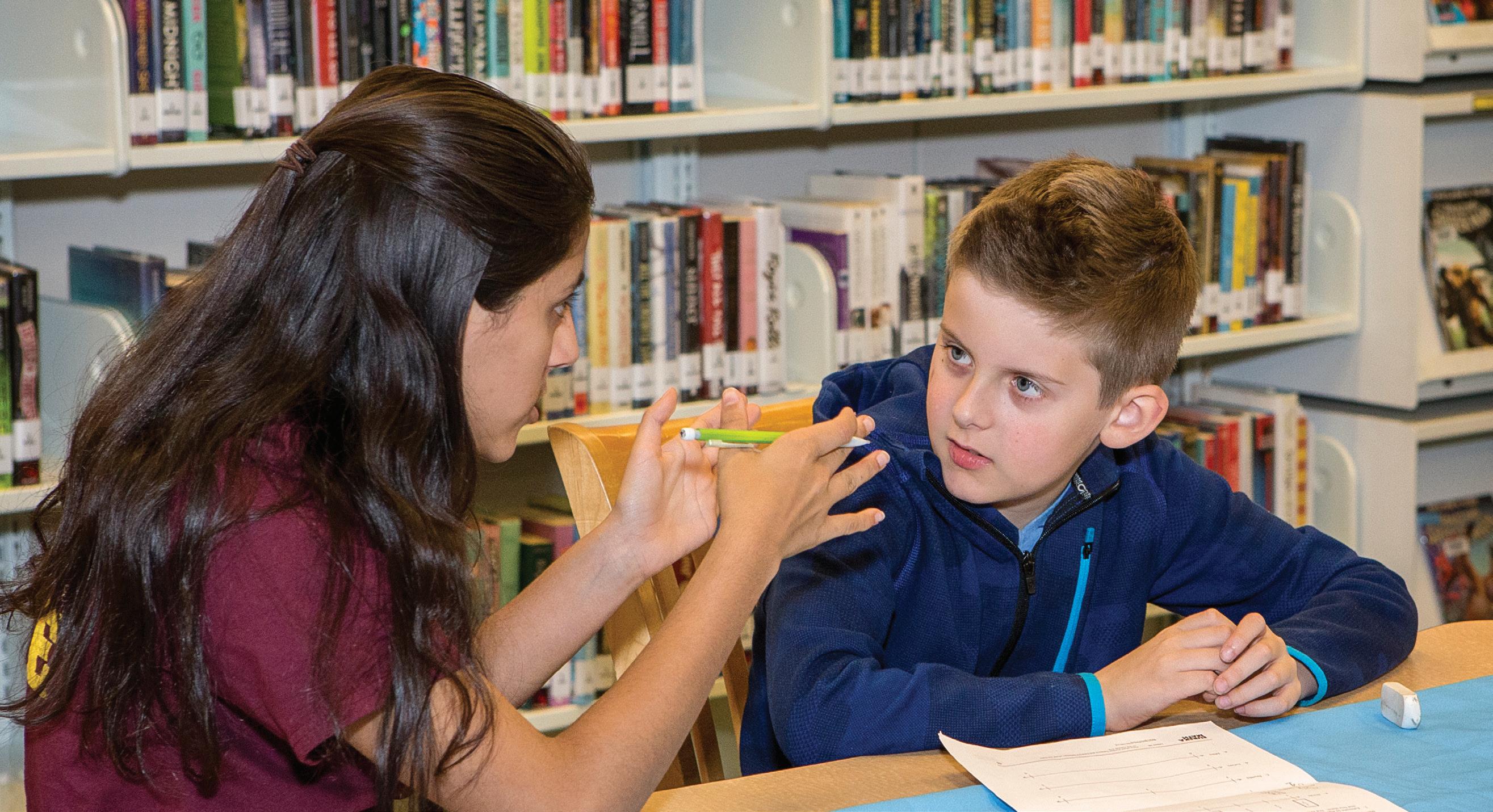4
Why







4
Why






“Reimagining Senior Life” was the first tagline we considered when launching 3rd Act. Our goal was, and remains, to be a catalyst for rejecting ageist attitudes pummeling older adults, and to empower those of us north of age 55 to reimagine what this life stage can be.
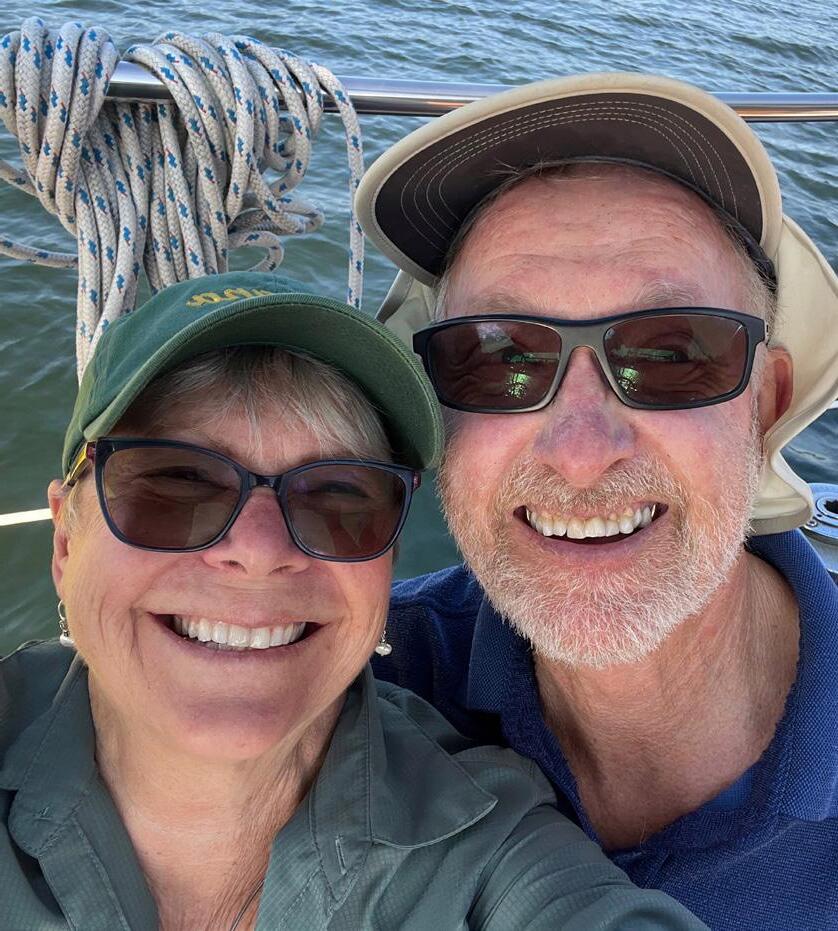
I’ve learned so much over the almost eight years we’ve been publishing and continue to be inspired by many who choose to live every stage of life on their own terms. Creators of their own lifelong masterpiece, those with the most satisfying old age take responsibility for the lives they’ve crafted—they continue to grow, change, and thrive throughout life.
As summer turns to fall, nature’s palette changes and invites us to slow down, reflect, and maybe pick up a new brush to add a little warmth and color to our life. In this issue I’ve asked our writers to contemplate what life looks like when we view it as a
work of art that only we can create. Their insights, recommendations, and opinions are as varied as you can imagine.
In our cover story, “The Fine Art of Aging” (page 36), photographer and writer Bruce Heinemann asks, “What is art but simply the expression of the human experience in whatever form it may take?” His musings are punctuated by his beautiful photographs of nature, inspiring us to evolve our views on aging and embrace the beauty and opportunity it offers.
If you could use a jump start to get your creativity flowing, consider following “The Artist’s Way,” outlined in the 1992 bestselling book of the same title by Julia Cameron. Writer Ann Randall revisits Cameron’s work, taking a class from her this summer, and finds it to be a still-powerful approach to overcoming limiting beliefs and fears that can inhibit the creative process. Read Ann’s story on page 44.
With the accumulations of a lifetime, most of us have way too much stuff. Simple, artful living may be found by cutting back our possessions and living a less hectic lifestyle. In her story “Lighten Up While You Still Can” (page 47), Julie Fanselow shares the freedom she’s experienced downsizing to her 187-square-foot studio apartment. Living in a similar-sized space on our sailboat this summer helped me to realize how little I really need to be comfortable and happy.
When we reach that final curtain won’t it be satisfying to say, “I did it my way.”
Now, more than ever, older adults are viewing their retirement as a “Third Act” in their lives: A time for reinvention, connection, and engagement. 3rd Act Magazine is a bold, fresh, lifestyle magazine for older adults in the Puget Sound region. Our stories and articles challenge the worn-out perceptions of aging and offer a dynamic new vision: Let’s celebrate and embrace this stage of life, and age together with confidence.
PUBLISHERS
Victoria Starr Marshall
David Marshall
EDITOR Victoria Starr Marshall
COPY EDITOR Tina Potterf
ART DIRECTOR Philip K rayna
WEBSITE Philip Krayna
ADVERTI SING Dale Bohm
DISTRIBUTION & CIRCULATION
David Marshall
COVER PHOTO

Mark Gardner
3rd Act Magazine wants to hear from you! Email your comments, ideas, and questions to info@3rdActMagazine.com or mail to P.O. Box 412, Brinnon, WA 98320
3rd Act Magazine is published quarterly by Oshi Publishing, LLC. The opinions, advice, or statements expressed by contributing writers do not reflect those of the editors, the publishers, or 3rd Act Magazine
Copyright ©2023 Oshi Publishing, LLC. All rights reserved.
Oshi Publishing, LLC, P.O. Box 412 Brinnon, WA 98320
Email: info@3rdActMagazine.com
For subscriptions, advertising rates, and additional information, visit us at www.3rdActMagazine.com
Live every stage of life on your own terms.Publishers Victoria & David Marshall on their sailboat Oceana.


SENIOR LIVING THAT ENRICHES YOUR MIND, BODY, & SPIRIT
EVERYDAY LIVING
SENIOR LIVING THAT ENRICHES YOUR MIND, BODY, & SPIRIT



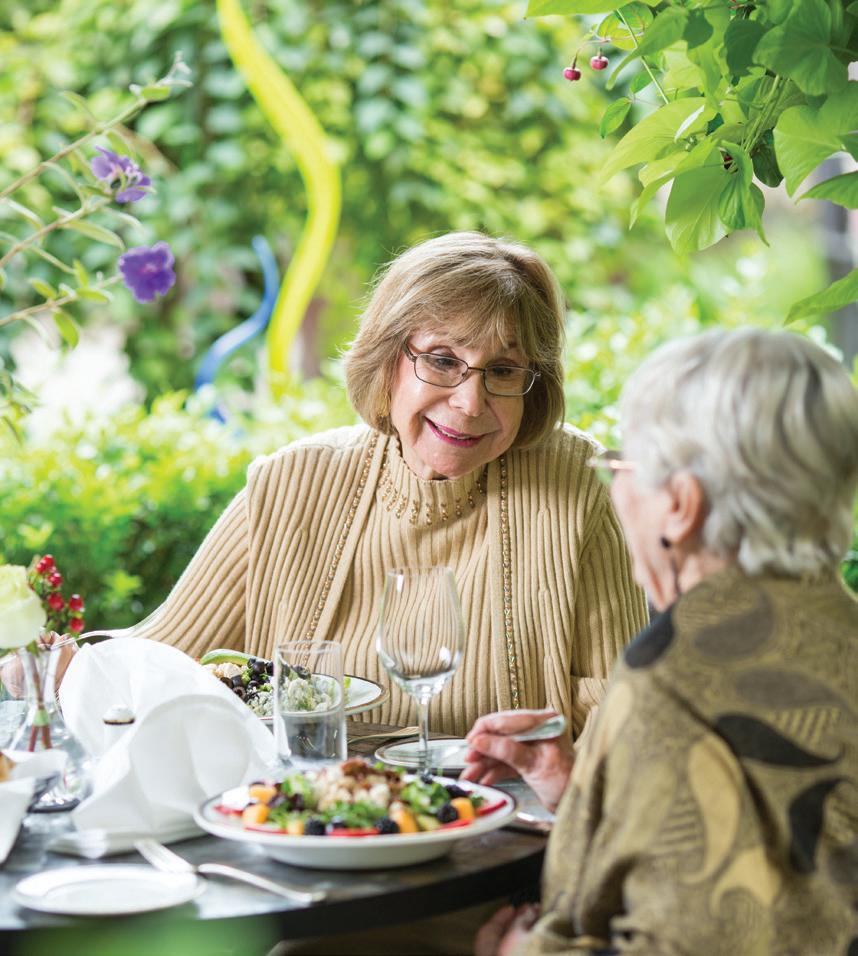
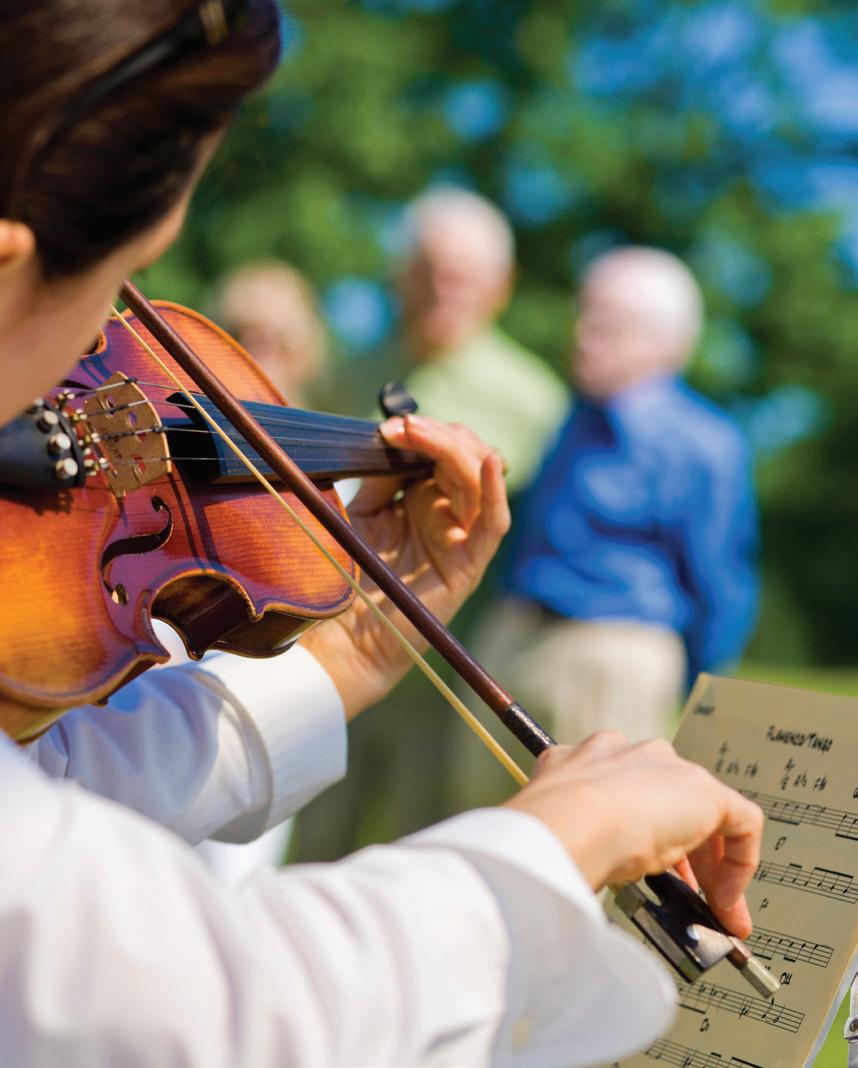





Era Living retirement communities help you stay engaged and connected—while covering the cooking, cleaning, maintenance, and more. Featuring intellectually rich activities, exquisite dining with healthy choices at every meal, inclusive exercise classes, meticulously landscaped gardens, beautiful common spaces with rotating original art, and the supportive services you need to thrive as your circumstances change.
Era Living retirement communities help you stay engaged and connected—while covering the cooking, cleaning, maintenance, and more. Featuring intellectually rich activities, exquisite dining with healthy choices at every meal, inclusive exercise classes, meticulously landscaped gardens, beautiful common spaces with rotating original art, and the supportive services you need to thrive as your circumstances change.
36 THE FINE ART OF AGING
We are all living, breathing works of art, sculpted by our beliefs and experiences.
BRUCE HEINEMANN
40 LIFE IN LIVING COLOR: AN ARTIST SHOWS US HOW Seattle artist Cecile Disenhouse, age 84, is a teacher, mentor, adventurer, volunteer, and an aggressive pickleball player. CONNIE MCDOUGALL
44 THE ARTIST’S WAY
8 AGING WITH INTENTION
Life is what you create.
LINDA HENRY
10 NAVIGATING GRIEF
Do's and don'ts for helping those in distress.
MARILEE CLARKE
12 BRAIN POWER
Our brains are hardwired for art.
MICHAEL C. PATTERSON
14 ENLIGHTENED AGING
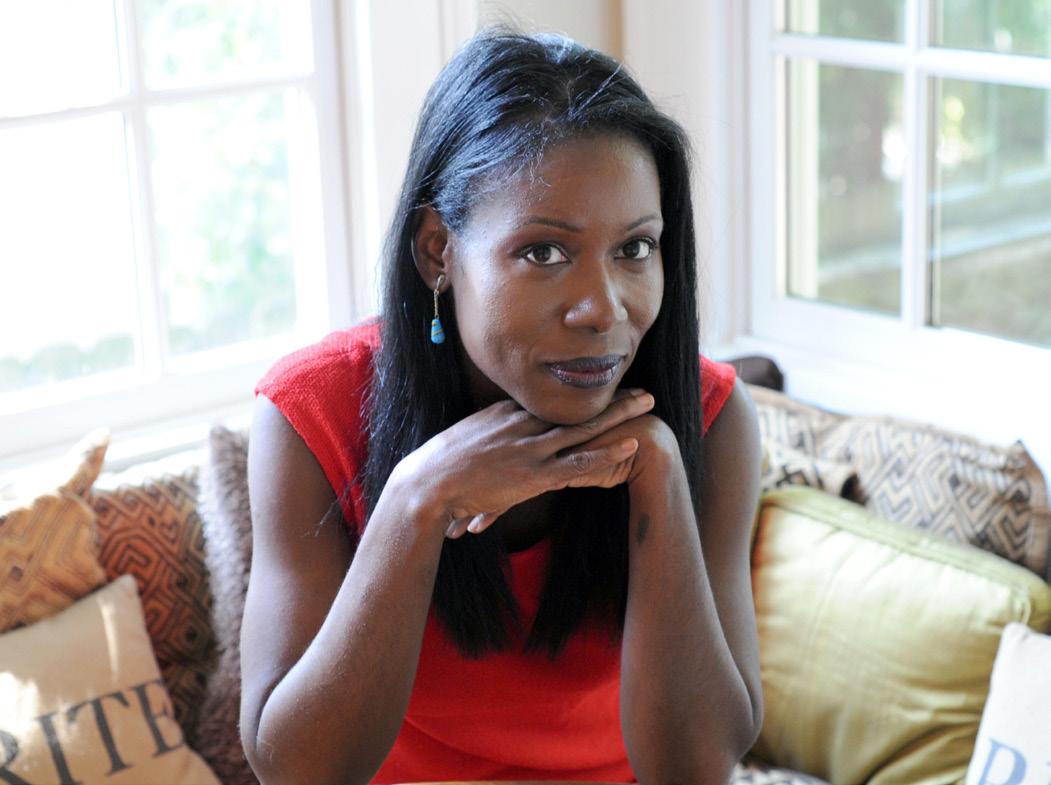
COVER: Writer and fine art landscape photographer Bruce Heinemann has created nine coffee table books. One, The Nature of Wisdom, became a bestseller. He won the 1993 Virginia Merrill Bloedel Award (Bainbridge Island, Wash.) given to individuals for their contribution to the welfare of nature. His speaking presentation is titled, “The Nature of Life and The Fine Art of Living.”

Tools and practices to rejuvenate your creative spirit. ANN RANDALL

47 LIGHTEN UP WHILE YOU STILL CAN Lessons on downsizing by moving into a 187-square-foot studio.
JULIE FANSELOW
50 LIBRARIES AMONG US
Meet the famous author and thousands of researchers who want your life to be healthy, happy, and meaningful.
ANN HEDREEN
Johannes Vermeer and the importance of finding light in life.
DR. ERIC B. LARSON

24 MIND THE SPIRIT
What will you do with the gift of longevity?

STEPHEN SINCLAIR
26 THE LIGHTER SIDE
The "plot" thickens.
ANNIE CULVER
58
16 THE HILL AHEAD
Creating a bucket list for retirement? What about a “live-it” list instead?
AMY HORTON
18 WHY RETIREMENT IS THE BEST TIME FOR LOVE

Four keys to a happy relationship after retirement.
CARYL AND JAY CASBON
20 THE ART OF MENTORSHIP
Help another become their best possible self to become the best possible you.
BOBBI LINKEMER
22 TWO OLD POETS: PORTRAIT OF A FRIENDSHIP
The joy and opportunity in cultivating a new friendship.
ROBERT HIRSCHFIELD
52 MY THIRD ACT
For this third act piano man, the music plays on.
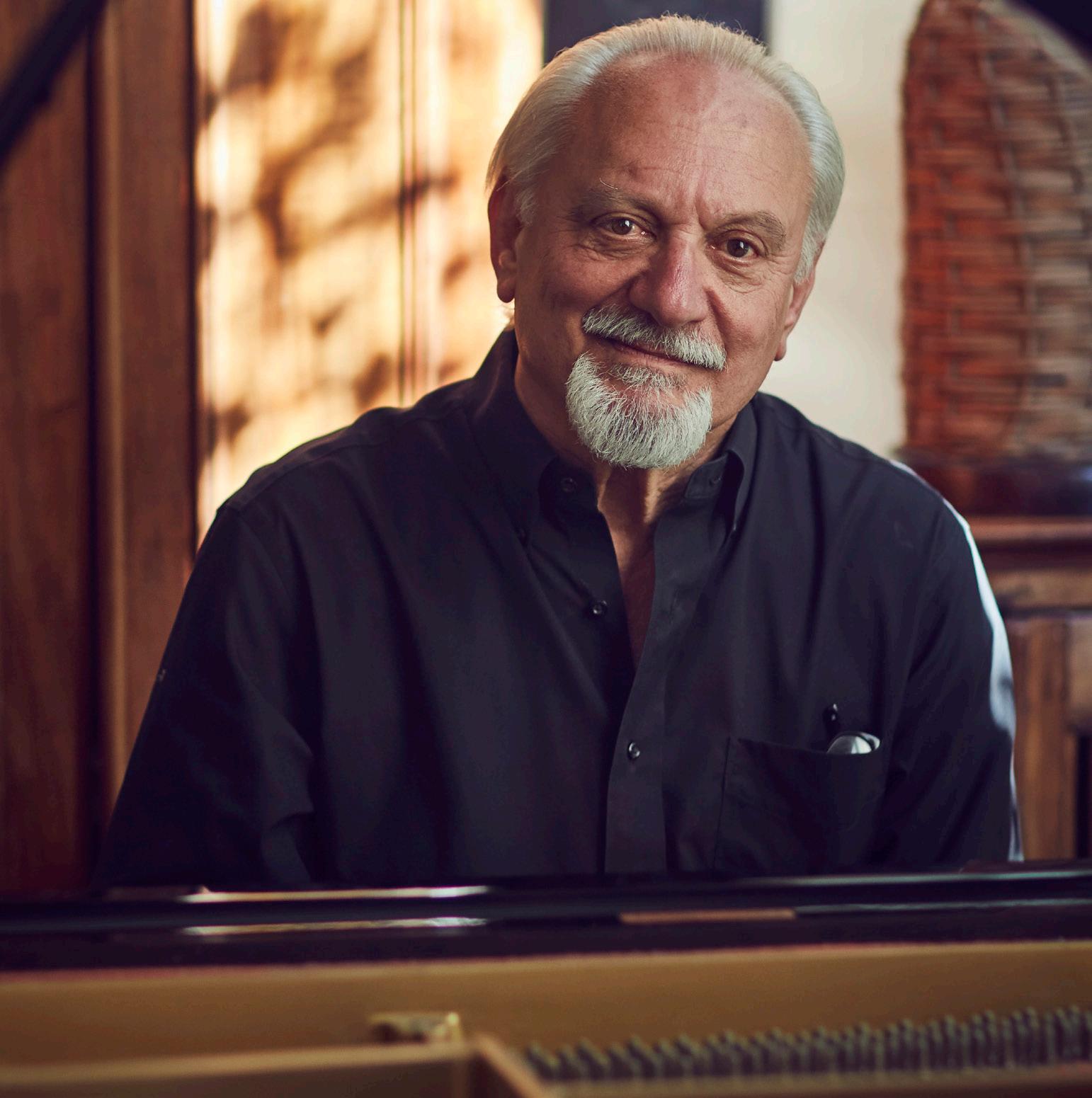
LARRY MOSS
54 PURA VIDA 3rd Act travels to Costa Rica for a taste of "pure life."
VICTORIA STARR MARSHALL
60 MAKE YOUR OWN KIND OF MUSIC
Programs to help you pick up a musical skill or just jam with new friends.
MISHA BERSON
29 KEEP MOVING
My mentor, Big Mike, spreads aloha.
MIKE HARMS
30 CAREGIVER'S JOURNEY
(PART 3) When, where, and how to get extra help when you need it.
JEANETTE LEARDI
32 ARTFUL DYING: CREATIVE LIVING UNTIL YOU TAKE YOUR LAST BREATH
An end-of-life doula can help make the dying process a little easier.
BONNIE BLACHLY AND COLLEEN J. HEWES
34 THE POWER OF PAUSING
We get to take a breath in our third act, if we choose to.
GRACE CONTE
56 DISCOVER ESSENTIAL OILS
The most widely used essential oils and the benefits of aromatherapy.
NANCY J. SCHAAF
58 NOURISH YOUR BODY

Unleash your culinary creativity and play with your food.
REBECCA CRICHTON
62 BOOKS
How to be Authentic: Simone de Beauvoir and the Quest for Fulfillment by Skye C. Cleary
REVIEWED BY
VICTORIA STARR MARSHALL
64 BRAIN GAMES
Challenge yourself with these word puzzles.
NANCY LINDE
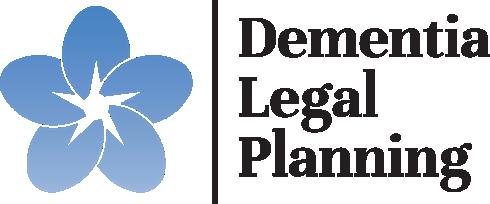
Just a note to let you know how much I enjoyed 3rd Act ’s Affordable Cost Rica trip. Having said that, as a person well into his third act and with no international travel under his belt, I really appreciated your and David’s help along the entire journey—from telephone conversations beforehand, meeting in the airport before the flight, getting me through TSA and customs, plus having you there the entire Costa Rican experience, I couldn’t have asked for anything more. Thank you so much. And to others out there wondering if 3rd Act ’s trips are for them, I say just do one.
—W. Ian Christopher, Lacey, WAWe were thrilled with our trip to Costa Rica with 3rd Act and Overseas Adventure Travel in June! This was our first experience with an organized tour, and it could not have been better. With all the logistics handled by other people, it was easy to simply focus on the fun, learning, and adventure. The accommodations were wonderful, and I was relieved that my introverted self had ample recovery time. Our tour guide was exceptional—approachable and extremely well-informed. The adventures were challenging and fun without being too scary (whitewater rafting, ziplining, wildlife excursions). I felt taken care of in every way. Thank you so much for the tour, which we discovered via an ad in 3rd Act. What a blast!!
—Wendy and Roland Pender, Issaquah, WA
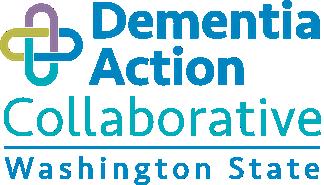



This is clearly demonstrated in the life of Margarita Montalvo, a resident at CRISTA Senior Living. Margarita’s life has been a rich tapestry of art creation, storytelling, and sharing her creativity with others. The creative lifestyle at CRISTA Senior Living presents Margarita with opportunities to create fresh pieces of art, display her masterpieces, and share her self-illustrated book of poems with fellow residents. Margarita is just one of many residents that embrace the arts at CRISTA Senior Living.
Art, as we know it, is more than just a medium for selfexpression. It serves as a powerful instrument that can significantly enrich one's quality of life. Numerous studies have shown that engaging in creative activities stimulates the brain, boosts mood, and fosters a sense of purpose. The process of creating art triggers the release
of dopamine, commonly known as the 'feel-good hormone', which has been associated with enhanced mental health. Residents Express their Creativity
At CRISTA Senior Living, residents like Margarita have the opportunity every day to explore their creativity, with creative avenues like a woodshop, art room, writing group, theatre outings, and showcasing resident paintings.
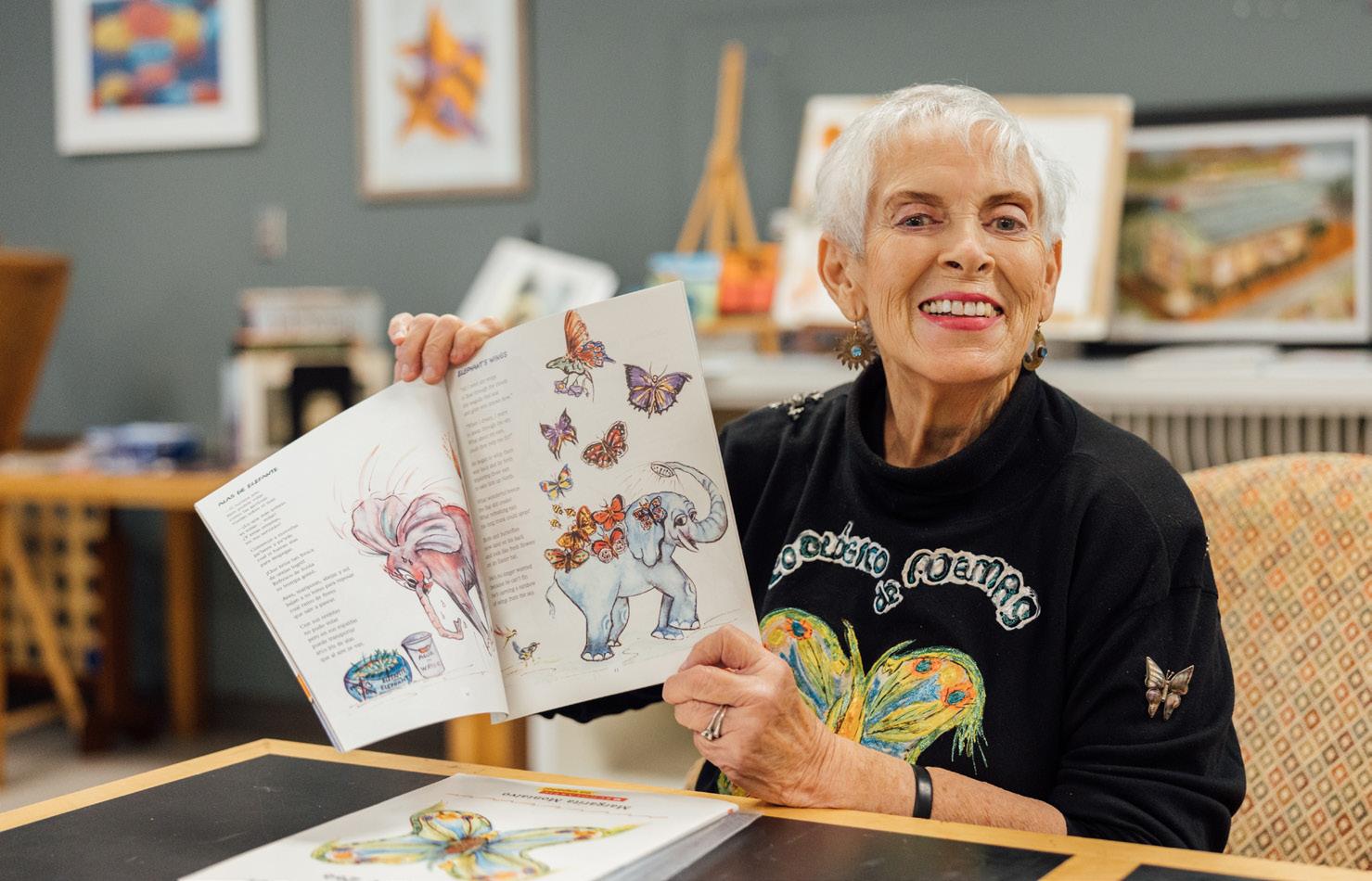
The woodshop is a place where residents can work with their hands, honing their motor skills while creating tangible objects
of beauty. Whether working solo or in groups, residents have undertaken projects like sets for King’s Schools drama productions, horseshoe pits, and even an air hockey table.
At the art room, residents can freely experiment with different media and techniques, allowing them to explore their artistic side and express their emotions and experiences. Residents can take group classes or enjoy the art room to themselves while working on personal projects.
The writing group at CRISTA Senior Living provides an outlet for residents who prefer expressing themselves through words. Writing has been shown to be therapeutic, helping alleviate anxiety, depression, and stress. It allows residents to share their stories, communicate their thoughts, and connect with others on a deeper level.
The campus's proximity to several local theaters in Edmonds and downtown Seattle allows residents to enjoy regular theatre outings. Theatre outings provide social interaction and intellectual stimulation. Watching a play can trigger emotional responses, stimulate thought, and foster empathy as audiences connect with characters and their dilemmas.
The arts have a profound impact on enhancing the lives of seniors. When residents say yes to CRISTA Senior Living, they continue their vibrant and creative life.
For more information on CRISTA Senior Living, call (206) 678-0242 or go to cristaseniorliving.
Life is meant to be full of vibrancy and creativity, as you are stepping into the later years of your life this is an important part that you don't want to lose.
“Our lives are a work of art that only we can create.” When I first heard that statement, I had difficulty connecting to the concept. Since I do not see myself as artistic, it is hard for me to envision life as a blank canvas with me holding a paint brush creating the scenes of my life. It is much easier for me to consider my life as a book with many blank pages to fill and chapters to write over the course of a lifetime. Rabbi Byron L. Sherwin, PhD, in his book Crafting the Soul, Creating Your Life as a Work of Art, puts it this way: “Like any other creative endeavor, creating life as a work of art requires dreams, visions, fantasies.” That said, maybe, how we visualize its creation matters little.
Linda Henry writes regularly on topics related to aging, health care, and communication, and is the coauthor of several books, including Transformational Eldercare from the Inside Out: Strengths-Based Strategies for Caring. She conducts workshops nationally on aging and creating caring work environments. Her volunteer emphasis is age-friendly communities.

Consider your own unique life. What dreams, visions, or fantasies have led you to creating the life you are living? Perhaps you delight in teaching or coaching others, thus you have built a life that is focused on such dreams. Sometimes, we construct a new vision through life’s previous experiences. Now over 70, Susan realized that as a child she had been bullied. “I never really understood what that meant until recently,” she says. “When a classmate threatened to throw me down the stairs after taunting me about my grades, school awards, and opportunities I had been given, I couldn’t relate.” Now, she views herself as a champion of those who are bullied or marginalized.
While the reality of our aging is no secret, the important question is, does it hinder our creativity in later life? Unfortunately, our culture suggests that as we age, our stories become less creative, more closed than open. When a story is closed, it implies that life is declining—there
is no new learning, beliefs are concrete. Open stories, on the other hand, suggest that life is hope-filled and moving forward. The very idea of aging can diminish our capacity to move forward says Becca Levy in her book, Breaking the Age Code: How Your Beliefs About Aging Determine How Long and Well You Live. She found that how people thought about the idea of old age was more “…important than gender, income, social background, loneliness, or functional health. Age beliefs can steal or add nearly eight years to your life,” she writes.
Rabbi Dayle Friedman in her book, Jewish Wisdom and Growing Older, offers the following that I hope you find as meaningful as do:
“Beyond midlife, we, too, can experience renewal and fruitfulness, as the Psalmist writes and I translate, ‘May we grow fruitful as we age, ripe and abundant and sage. Keep our hearts open to all we face, present to goodness, even a trace. Renew us, let our spirits soar, sustain us, our Rock, for evermore.’”
Much to ponder. I know that I want my continuing story to be open, ready to follow new dreams and passions. How about you?
After years of research and design, Katrina Spade developed the process of human composting and helped Washington State become the first state to legalize it in 2019. Katrina founded Recompose, a full-service green funeral home serving clients nationwide. As a public benefit corporation and the world’s first human composting company, Recompose is growing a worldwide movement to reimagine the end-of-life experience to be rooted in nature.

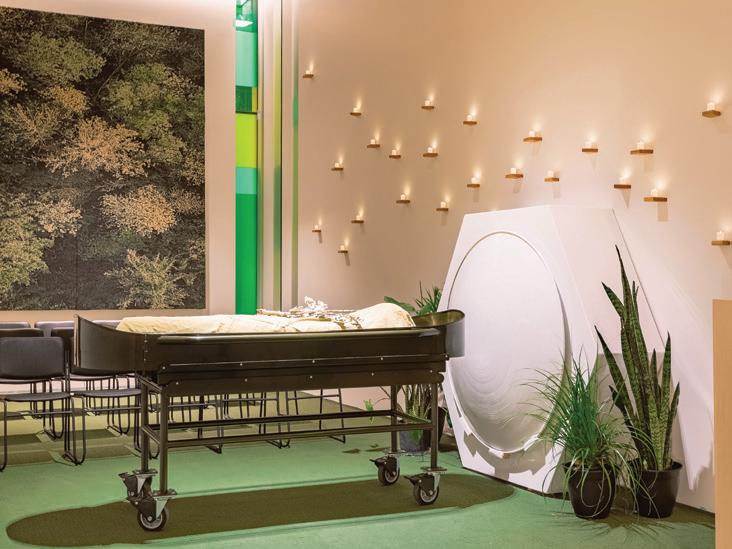

Why did you dedicate a decade of your life to creating a new type of death care?
What motivates you about the future of death care?
Sunrise of Issaquah 23599 SE Issaquah-Fall City Rd. Issaquah, WA 98029
At Sunrise, superior service and tailored support come together to offer you a fully personalized experience. From beautifully designed amenities spaces, to fresh cuisine, and exciting opportunities to engage with new friends and neighbors, you’ll find new reasons to love Sunrise around every corner.
• Personalized assisted living and memory care services
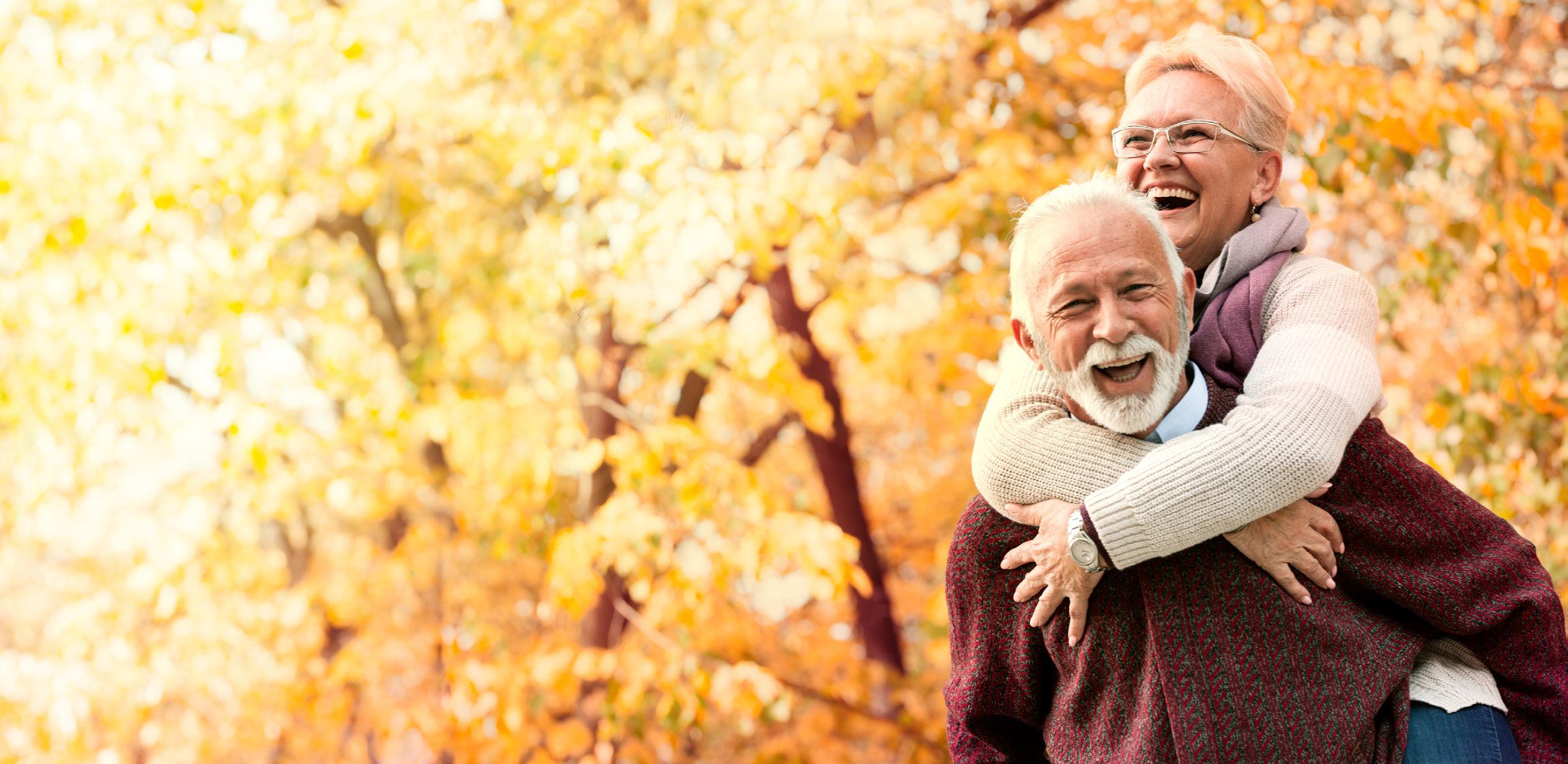
As a graduate student in architecture, I began looking at the U.S. funeral industry because I knew I didn’t want to be cremated or buried. I developed human composting as a scalable, sustainable, urban solution to the problem of toxic funeral practices. Rural places have natural burial—a lovely option—but cities lack land to use for any kind of burial. Cremation then becomes the default but often doesn’t align with people’s desire to help the planet with their final act. Composting allows a return to the earth, saves a metric ton of carbon per person over conventional death care, and is designed for the urban landscape—it can conceivably care for billions of people.
• Elegant studio, one-bedroom, and two-bedroom suites
How does human composting work?
• Seasonal menus crafted by our talented culinary team
There’s a massive shift in death care towards a more open, intentional experience, and a large push to make the funeral industry greener and more transparent. Recompose is at the forefront of this shift—the world is looking to us to lead, educate, and inspire.
What gives you purpose?
SunriseIssaquah.com
Sunrise of Bellevue 15928 NE 8th Street Bellevue, WA 98008
• Weekly housekeeping and laundry service, utilities, scheduled transportation, and more
The key is to create the perfect environment for natural decomposition to occur and microbes to thrive. Our team places the body and a carefully calibrated mixture of plant materials inside specially-designed steel vessels. We monitor aeration and manage the transformation into soil over the next two to three months. At the end of the process, the soil can be kept or donated to our conservation partners, or a combination of both.
Many on Recompose’s Services team have worked elsewhere in the funeral industry and believe a better way is possible. They encourage curiosity and learning about the death care process and strive to inform with clarity and care. The team serves as a guide to clients for multiple months during soil transformation.
A sister of Wayne, a client, took his soil back to the neighborhood where he’d lived and gardened much of his life. She told us that friends and neighbors took some of Wayne’s soil to their own gardens. I like to think that Wayne is still gardening with his neighbors. Stories like this motivate me to increase awareness about Recompose.
SunriseBellevue.com
Sunrise of Redmond 15241 NE 20th Street Bellevue, WA 98007
SunriseRedmond.com
What are people surprised to hear?
• A robust calendar of events and programs, featuring lectures, film screenings, entertainment, and excursions

Sunrise of Mercer Island 2959 76th Avenue SE Mercer Island, WA 98040
SunriseMercerIsland.com
We’ve cared for over 300 clients from across the country and world, and we have over 1,500 Precompose members—some as young as Gen Z. Precompose is a prepaid funeral plan that allows members to pay monthly or all at once for their future composting. Members have shared that it’s a tangible way for them to take climate action now and help grow the green funeral movement.
Sunrise of Edmonds 750 Edmonds Way Edmonds, WA 98020
SunriseEdmonds.com
Recompose is located in Seattle’s Industrial District and open by appointment. Visit www.recompose.life/third-act to schedule a virtual or in-person tour, learn more about human composting, and plan ahead.






 BY MARILEE CLARKE
BY MARILEE CLARKE
Have you ever felt as if you didn’t know what to do or say to someone dealing with a difficult situation whether they are a patient, a caregiver, or a survivor of a tragic loss? You are not alone. Before I lost my husband to cancer, I always feared that I would say or do the wrong thing. Despite my heartfelt intentions, I often fumbled for words and was at a real loss on how to truly help.



Now that I am on the other side, I have gleaned much from my journey of what’s helpful and what’s not. I got very tired of hearing the platitude, “Our thoughts and prayers are with you.” While I’m sure the sentiment is sincere, it just seems so empty. This is also true for the single obligatory get well or sympathy card. Don’t send just one, send one a week or a month for as long as needed.


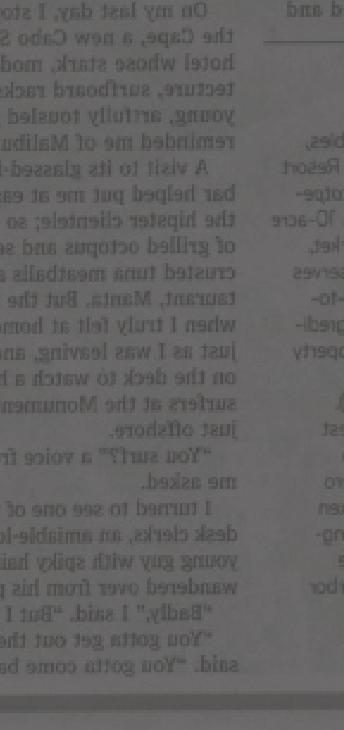
The other common refrain that made me weary was, “Let me know if there is anything you need.” This puts the burden back on the one who is just trying to get through each day. As I told my stepson following this offer, “I am so overwrought













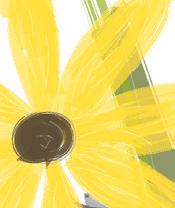
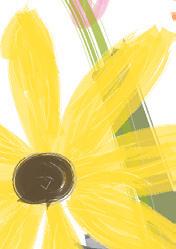

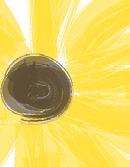




of knowing that. I also recommend keeping any visit short—15 to 20 minutes is plenty, and the brevity is often a relief to those involved.










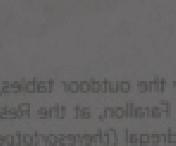
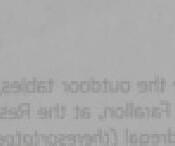

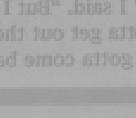
An important “do” after someone close to you has lost a loved one is to continue to check on them frequently for at least the first year. Mark the death anniversary on your calendar and reach out on that day. Although many people feel they need to avoid mentioning the deceased, I welcomed the chance to talk and reminisce about my husband. Finally, if you send a sympathy card, don’t just sign your name but include some fond remembrance of the person. And it is especially comforting to hear, “You were a wonderful daughter, wife, etc.” during this time of sorrow.
Marilee Clarke lives in Issaquah and loves the Northwest’s natural beauty. She is a collage artist and her passions include travel and anything creative. She and her late husband taught a course at Bellevue College on “How to get the most out of your retirement years” and that is just what she’s doing!
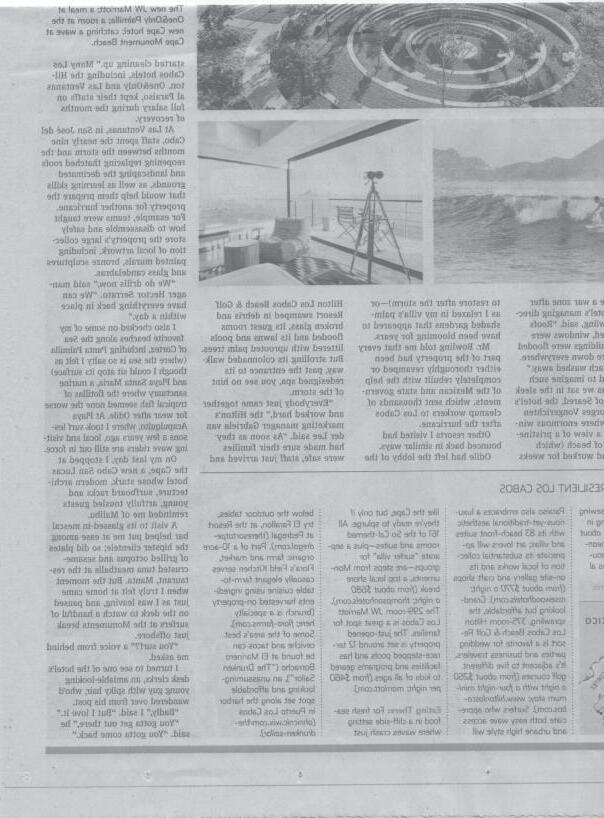
Sunrise of Issaquah 23599 SE Issaquah-Fall City Rd. Issaquah, WA 98029
SunriseIssaquah.com
Sunrise of Bellevue 15928 NE 8th Street Bellevue, WA 98008
SunriseBellevue.com
• Personalized assisted living and memory care services

• Elegant studio, one-bedroom, and two-bedroom suites
• Seasonal menus crafted by our talented culinary team
At Sunrise, superior service and tailored support come together to offer you a fully personalized experience. From beautifully designed amenities spaces, to fresh cuisine, and exciting opportunities to engage with new friends and neighbors, you’ll find new reasons to love Sunrise around every corner. Scan
• Weekly housekeeping and laundry service, utilities, scheduled transportation, and more
• A robust calendar of events and programs, featuring lectures, film screenings, entertainment, and excursions
Sunrise of Redmond 15241 NE 20th Street Bellevue, WA 98007
SunriseRedmond.com
Sunrise of Mercer Island 2959 76th Avenue SE Mercer Island, WA 98040
SunriseMercerIsland.com
Sunrise of Edmonds 750 Edmonds Way Edmonds, WA 98020
SunriseEdmonds.com
Henry Draell lives with dementia and was severely withdrawn and noncommunicative until awakened by a recording of Cab Calloway’s music. In a remarkable YouTube excerpt from the 2014 documentary, Alive Inside: A Story of Music and Memory, Henry is fitted with an iPod and headphones, and when the music begins his eyes snap open. He begins to jam with the music. When asked what he is feeling, he speaks eloquently about the joy and wonder of music.
Philosopher Immanuel Kant called music “the quickening art,” and the music affects a kind of magical transformation on Henry. His dementia is set aside. A man who wasn’t there in one moment is suddenly very present, very alive, very much a singular being with personality and passion. He had appeared lost to his dementia but was very much alive inside, and music woke him from his mental slumber.
The power of music is evident to anyone who watches the video
of Henry. We know that it works but don’t really know why or how it works. How does music perform this magic? Why is it that the arts, in general, possess this transformative power. I’ve been struggling with these questions for close to two decades now.
My early thinking on the subject was influenced by the work of writer Ellen Dissanayake and philosopher Denis Dutton, who argue that aesthetic sensibilities are evolved instincts possessed by all human beings. The human capacity to make art and appreciate beauty, they believe, have been shaped by natural selection. An aesthetic sensibility is a fundamental characteristic of human behavior. We are hard-wired for art. As the field of neuroscience blossomed in the 1990s, researchers began exploring the neurological basis for aesthetic experiences, seeking to understand how the human brain processed art and how art, in turn, shapes the nature of individual brains. Neuroscientist Semir Zeki dubbed this new sub-field “neuroaesthetics” in 1999. The evolutionary perspective of art was complemented by a deeper understanding of how the human brain works and why it is so sensitive to artistic expression.
The scientific study of the arts has been robust but disorganized. The NeuroArts Blueprint Initiative, launched in 2019, is striving to wed the disciplines of science, technology, and the arts. Their mission is to “cultivate an ecosystem for neuroarts—the transdisciplinary study of how the arts and aesthetic experiences measurably change the body, brain, and behavior, and how this knowledge is translated into specific practices that advance health and well-being around the world.”
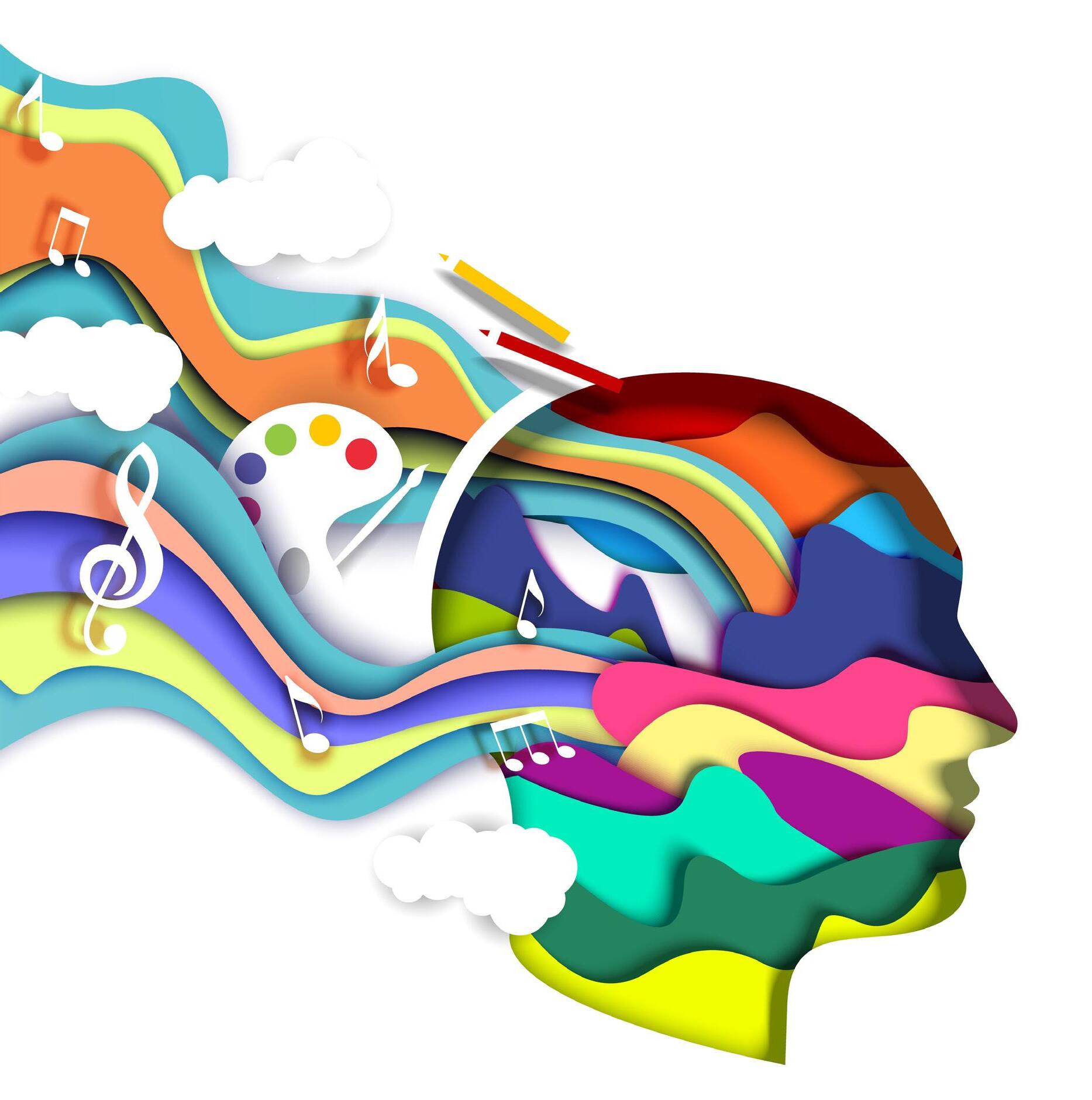
I am delighted that I will be able to contribute to this cultivation of a neuroarts ecosystem. I’ve been invited to serve on a new Health and Science Committee set up by Encore Creativity, the nation’s largest choral singing group for older adults. Encore’s goals are to use our growing understanding about science of the arts to improve the health of their singers and to help them flourish as they age.
With this new assignment, I need to update and expand my thinking about the power of the arts to promote human well-being. Here are some of the points that I find compelling and provocative:
The power of the arts derives from basic physics. Art is grounded in sensory stimuli that, at its base, are forms of energy. When energy of any kind enters the brain, it has the power to alter the structure and function of our mind.
Susan Magsamen, co-director of the NeuroArts Blueprint, makes the same point in her new book, Your Brain on Art. She says that “all stimuli that we encounter—visual, auditory, somatosensory, gustatory, olfactory,
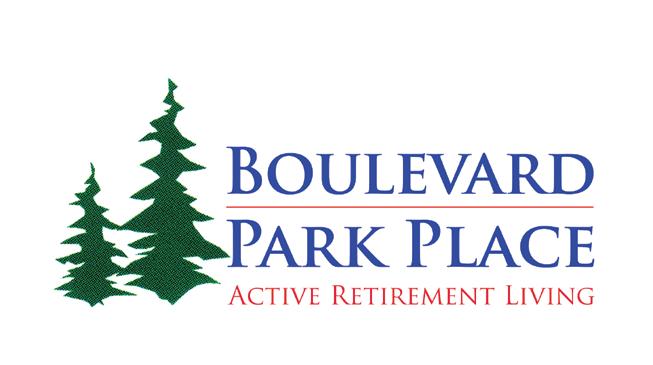
• See Michael’s MINDRAMP podcast interviews with Dan Cohen, the champion of personalized music featured in Alive Inside. Go to www. mindramp.org.

• Watch the video of Henry Draell and the full Alive Inside documentary on Youtube. Search “Henry dementia music video.”
and others—change the structure and function of cells within our brains and bodies. And they do so in fundamental ways.”
We are hard-wired for the arts. We thrive as a species because of our creativity and adaptability. We have used the arts to shape our environments, and the environments we create, in turn, shape our thoughts, emotions, and behaviors.
The arts engage multiple types of energy that interact holistically with the multiple systems that animate our bodies and brains. The arts, therefore, are particularly effective at addressing complex, multifaceted disorders and diseases.
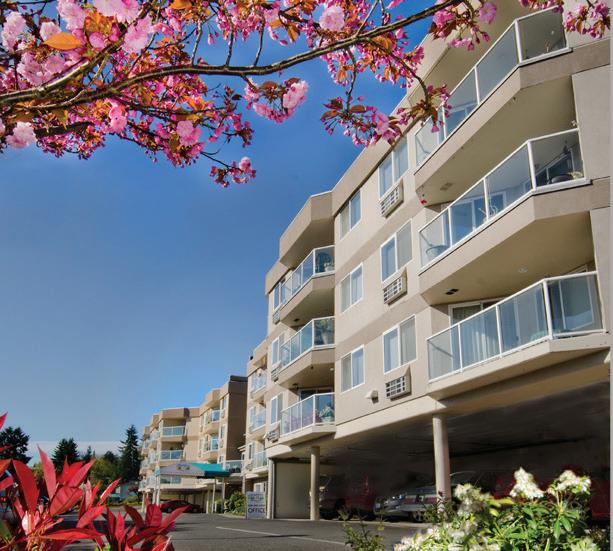
The arts are fun. We enjoy the arts. Art is play. The arts are intimately linked to positive emotions. This alone contributes to flourishing. But further, the therapeutic benefits embedded in the arts pleasure are easily endured. We are happy to take the medicine on a regular basis because it’s so enjoyable and fulfilling.
The arts can inspire wonder and awe, pulling us out of our egocentric self-absorption, and sweeping us into a mystical sense of unity with forces grander than our individual selves.
Taking this fifth point to heart, I suspect we will never fully understand why the arts are such powerful healers. Often, just recognizing that they work is enough. We shouldn’t forgo effective treatments just because we don’t understand how or why they work. How did the voice of Cab Calloway pull Henry out of his dementia?
It’s magic! That may be all the answer we really need.
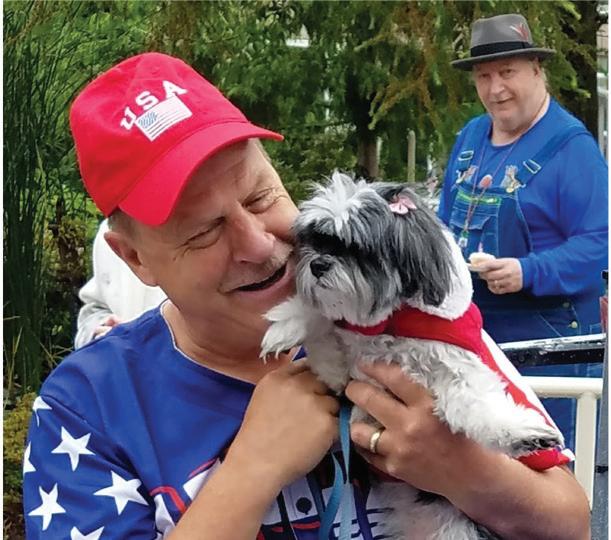
When I first entered medical school in Boston in 1969, I fell in love with a painting by Johannes Vermeer, The Girl with the Pearl Earring. For some unknown reason it just captivated me. I purchased a large print, found an old frame, and for many years it hung over my bed and eventually ended up in my study when we got a house in Seattle.
What was it about this painting that drew me to it? In the more than 50 years that followed, whenever I went to a highly regarded museum, I would look for the Vermeer’s and never be disappointed. One great disappointment occurred when thieves stole two of Vermeer’s paintings that were on “permanent” display in the Isabella Stewart Gardner Museum down the street from Harvard Medical School. The museum had minimal security at the time, offered free chamber concerts, and was a haven for me when I had free time over lunch. Beautiful music and paintings by my favorite painter.
Vermeer is considered one of the greatest Dutch Masters from the Dutch Golden Age along with Rembrandt. His output was rather modest and today only 35 paintings are universally attributed to him. Vermeer lived a relatively short life (1632-75) and was only “modestly successful” during his lifetime—ending up earning more as an art dealer, which allowed him to support his quite large brood and left his wife impoverished when he died. Over the centuries, his paintings have been widely appreciated for their unique beauty. And today, Vermeer is wellknown and acclaimed as one of the greatest of his time.
When the Rijksmuseum in Amsterdam announced it had assembled 28 of Vermeer’s paintings for the largest exhibit ever, I took notice.
And so did hundreds of thousands of others. Within a couple of days, the tickets available for the 16-week exhibition were completely sold out. The demand was so great that the Rijksmuseum figured out ways to extend the hours. Some colleagues in Amsterdam told us to just log on to the tickets site regularly and hope to “hit it” just as new tickets were released. We did and voila! we got our tickets overlapping with a project for The Lancet in London that allowed us to consolidate a trip to Europe.
The exhibit was a dream come true—something I never expected to experience in my lifetime. While seeing firsthand Vermeer’s great paintings was an immediate source of pleasure, what I learned about his techniques taught me an important lesson about aging. A lesson that confirmed what I had observed in watching patients, research subjects, and family and friends as they aged—the importance of “light” in how to age well through “Enlightened Aging.”
where optics became more advanced, including Antonie van Leeuwenhoek’s development of the microscope, an important advance in medical research.
The same month we visited the Vermeer exhibit we also went back to Boston for my 50-year medical school reunion. As expected of a group of Harvard Medical School graduates all around age 75 or more, this was an accomplished bunch. This is a group of individuals who have contributed to medical science, teaching, care of their patients, and communities in many ways. Being together was inspiring and, of course, we had a lot of fun reminiscing and rekindling friendships.
Having just been exposed to Vermeer and the unique way he found light to create beauty made me reflect on just how important finding light is in life— especially as we transition into older ages. Most people will eventually leave a profession that typically has been a source of light—inspiring us to serve, discover, always learning to keep up with knowledge advances, and to just
The exhibition narrative was more than the story of Vermeer’s life and times. It highlighted how his ability to use “light” in his paintings was a breakthrough, perhaps the main reason why his paintings are so beautiful and engaging. Vermeer used more than just canvas and paint. They found new ways to literally find the light by using recently developed camera obscura and camera lucida techniques along with mirrors to create effects that allowed them to find and use light in painting. After all, this was an age
do a better job. Our professions also provide a wealth of social engagement.
Most of my classmates had found or sustained the “light” that lit up their life. Some continued finding light in their professional work, building from the specialty and research work that had been decades in the making. Others went from Deanships and other prominent leadership positions back to their earlier specialty areas. Most were gradually slowing down and gracefully planning to completely retire in the near term. A few had completely retired.
Another common feature was that almost all engaged in regular physical activity—less active than previously, but still part of their routine. Families, other loved ones, and volunteer activities were a great source of meaning and fulfillment. Fortunately, only a few seemed not to have found light. My casual observation was that the few included those who persisted in trying to convince others, without success, that they were right and others in the medical field were wrong. They were unable to accept scientific reality. And there were also a few who seemed unable to accept certain disabilities and conditions and make the best of their situations—the proverbial making lemons out of lemonade just never happened for them. They seemed to embrace a sort of darkness rather than finding or keeping light in their lives.
I loved the reunion. I also gained from appreciating that the beauty and magic of Vermeer paintings involved

light and especially finding light in new ways. I think that part of aging is keeping that light that’s helped us throughout our lives, but also finding light in new ways as aging inevitably changes us. It’s there—like Vermeer we can find it and age well.
Eric B. Larson, MD, MPH, is the author, with Joan DeClaire, of Enlightened Aging. He is the founding principal investigator of the Adult Changes in Thought (ACT) study, ongoing for about 30 years. ACT recently was awarded a $55.6 million expansion grant from the National Institutes of Health.
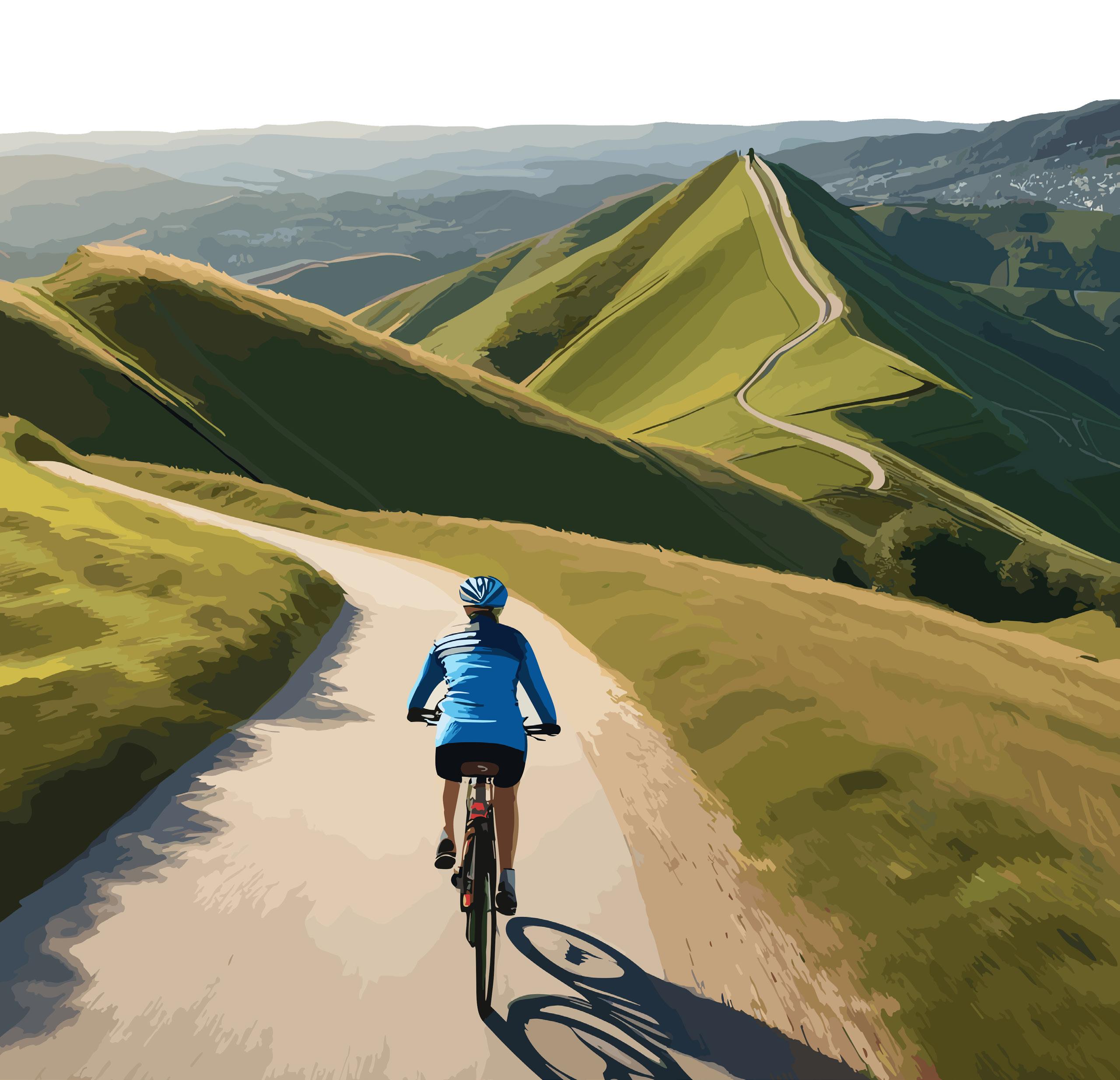 BY AMY HORTON
BY AMY HORTON
Experienced cyclists know this and novices are delighted to discover it: The hill up ahead you are about to climb looks bigger from a distance. As you pedal closer, its daunting incline flattens out a bit. I don’t understand the optics of this phenomenon. Each time, I remind myself, “it’s not as big as it looks.” Then I start pumping my legs to make the most of momentum and gears.
Years ago, on the precipice of retirement, I saw a different kind of hill ahead. The next two decades of my life looked like a steep climb. I wasn’t sure I had the legs for it. But with only one route available to me—up and over the last crest—I needed to start pumping.
I also knew I needed some momentum and the right perspective if I were going to get that hill to flatten out. So I began, idly at first, then with more intent, to compile a list of things I wanted to “do” in the coming years. “Befriend a child,” I wrote. “Give something away once a month.” When a friend referred to this growing document as a “bucket list,” I bristled. Why? A bucket list, in my mind, is a collection of exotic, once-in-a-lifetime acts to be achieved and checked off with a satisfied “Done!”
Instead, the items on my list, which I began calling a “Live-It List”, were discrete acts capable of repetition and integration into my life. Just as one turn of a bicycle wheel gets you nowhere, I surmised that a one-and-done approach would have little impact on my hill. Besides, I’d no desire to jump from an airplane or see the Taj Mahal. I wanted a blueprint for day-to-day living that might carry me to, and through, my third act. And, not incidentally, address some big questions.
How shall we live? What makes meaning? Why does this or that—or anything, for that matter—matter? These questions are implicit in every decision we make, every task we undertake, every moment of gratitude, anger, frustration, and joy. They persist, not because they can be answered, but because they must be heard. We live the answers—messily, inconsistently—rather than puzzle them out neatly. As if that were possible.
to me, why hadn’t I visited my aunt in so long? (#17). Visit Aunt Joyce once a month. If “fitness” was a goal, what, exactly, would I do to get there? (#8). Cycle 20 miles a week. What did “giving back” look like, in practical terms? (#11). Attend volunteer orientation at a local food bank.
I decided the list must be fluid and that the process of testing, evaluating, and integrating undertakings with an eye toward enrichment, rather than achievement, meant that some would fall away and others expand or change. I hoped for surprises along the way.
Surprises there were. My early ideas of what might sustain me in the coming decades were partly right, partly wrong, and still in flux. On a whim, I had added “go camping” to the list, something I’d never done. Did I have a glimmer that spending serious time in the great outdoors would become an integral, deeply fulfilling part of my later life? Was its addition an unconscious acknowledgment of a nascent desire to live more simply, to problem solve more self-sufficiently?
saw a different kind of hill ahead. The next two decades looked like a steep climb. … If I were going
But I am a puzzler and a list-maker. A Live-it List, I thought, could be my guide on this final cycle of life.
Creating the list took time. What did I love about my life and want more of? What was missing? How might I fill those holes? Most importantly, what were the values I wanted to embody as I aged? How might I align my everyday activities with those values?
As I worked categories emerged reflecting what I assumed would be important to me in the coming years—health, friends, giving back, and so forth. I crafted specific undertakings for each category to test my assumptions. If “family” was important
I don’t know, but my first camping trip, at 60, shifted me into a whole new gear, providing momentum that has lasted to this day. I’ve since camped across the country, built my own camper van, made friendships, learned skills, improved my fitness, and developed a relationship with nature that has fed my soul in ways I could only have imagined.
Other items left me spinning my wheels. A lover and writer of poetry, I’d included “submit poems for publication to three journals.” But when at year’s end I’d sent not a single poem anywhere, I asked myself how I felt about that. Just fine, it turns out. A little shift in perspective was all it took to flatten out that bump in the road.
Nine years after starting my Live-It List, the inevitable has happened: I am older and closer to the crest of the hill. I’m still cycling, though now on an e-bike, and the climb ahead is still steep. But as I pump my way toward the top, my Live-It List is doing the job I’d hoped it would. I can feel momentum building. And, if I squint, the hill ahead doesn’t look quite so daunting.
Amy Horton is a former lawyer and current cyclist, camper, poet, and lover of the open road. A previous article on an EarthWatch adventure she did watching cranes appeared in Sierra magazine.
“ Cycling taught me to trust that the hill ahead looks steeper from a distance and flattens out as you approach. ...On the precipice of retirement, I
to get that hill to flatten out, I needed momentum and a slight shift in perspective. ”
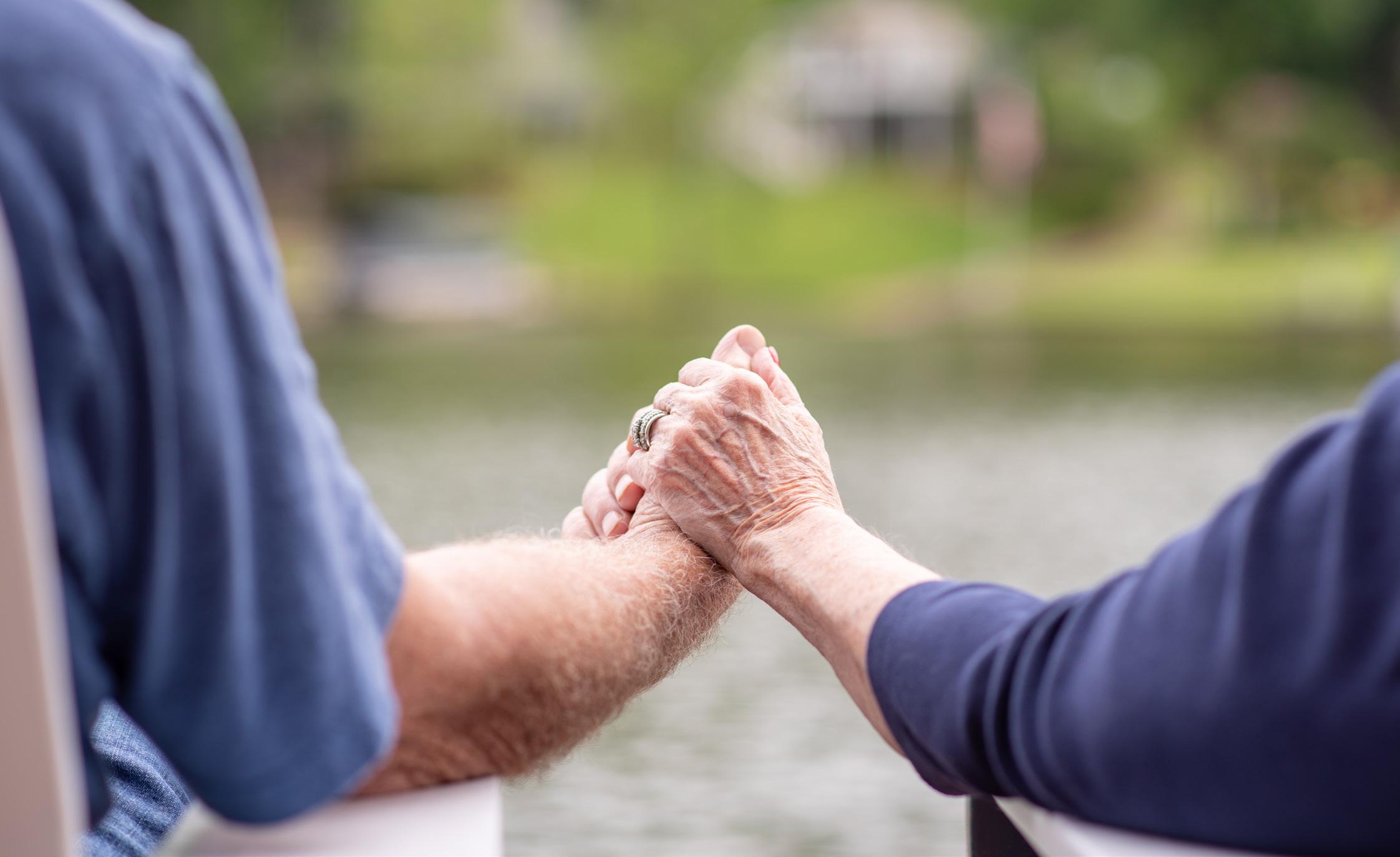
Couples preparing to retire often confess trepidation about the increased amount of time they will spend together following a lifetime of separate careers. Facebook is loaded with cheery photos of older adults floating the Rhine River on Viking cruises or cuddling cute grandbabies, but no one posts snapshots of what transpires within the privacy of their homes.
As we retired, we had our own concerns and many questions: How can we make the most of our remaining years? What does love mean now, at this seasoned age? How do we work with the tension of “me” and “we” now that we spend most days together? How do we creatively deal with the changes in our health and status as we age? What is going on with other couples we know and admire, and can we learn from them? Are there models
BY CARYL AND JAY CASBONon how to do this?
As a result, we launched into a cross-country RV road trip, conducting 13 in-depth interviews with retired couples over a fiveyear period. We were delighted to discover and happy to report that we found couples experiencing deep fulfillment together. Here are four keys we gleaned for enjoying the best of times in your marriage as you age together with wisdom and love:
1 The
the Stranger: Much like adolescence, aging is a road to rapid change, which can make us strangers, even to ourselves. Yet, change is also the key to renewal and growth. Retired couples become like college students and study partners, switching majors, taking random classes, or creating independent studies just for the joy of learning. No longer confined by jobs, couples pursue new interests,
creative endeavors, and forgotten passions. They have time to finish conversations, read books together, listen to podcasts, and grow. These new discoveries reveal dimensions in one another that were hidden in the first half of our lives, which can feel foreign and exciting. Aging couple adventurers come alive with curiosity, wonder, new choices, and fresh beginnings.
2 Love &
Power of Vulnerability: There is no intimacy without vulnerability. Aging increases our vulnerability as we experience the loss of friends, status, and emerging health challenges. While we may fear these losses will diminish our relationships, when couples share honestly with each other and then extend tender care, love actually grows. The vulnerability of aging seems to strip us of our individualistic illusions and protective shells, and we become
more interdependent—in humble service to each other when needed. Paradoxically, the challenges with age offer a solid ground for love to flourish and mutual care to flow. The ticking clock reminds us that our time is finite and to cherish one another while we still can.
Work: In retirement, many of us pursue one of our deepest human longings—our need for meaning. It is a time for wisdom. Some have called aging a natural monastery, for there is a pull toward more interiority where we choose depth over speed, and seek to glean an understanding of a lifetime of experiences. Couples honor these leanings by respecting the need for solitude and space, practicing days or extended times of silence, regularly meditating together, enjoying time in nature, and reading books that offer spiritual or psychological insights.
They can also give each other the gift of savoring the small things they notice when slowing down, like the new bird nest in the eaves and the beauty of creation at their doorstep. Most couples also seek to extend a beneficial presence to their children, grandchildren, and others they encounter.
The Fruits of Mutuality:
Retirement is an ideal time to practice mutuality, which is achieved when the needs of both people are valued. Mutuality embodies the spirit of cooperation and reciprocity. As a couple, when we are in a “state” of mutuality, we hold the tension of not deciding right away, or at least waiting long enough for each person to articulate their desires or needs. We seek creative solutions, sitting with the tensions long enough that a “third way” emerges. Mutuality, at times, means one person gets more
of what they want than the other, and we discern when we are ok with privileging our partner’s needs over our own. In the process, we enjoy the richness and value that both positions have to offer.
In retirement, couples have the space and time to practice mutuality, welcome the stranger, seek wisdom and depth, and discover the joy of interdependence found in vulnerability, all grounded in growing their love and respect for each other, side by side. It can be the best of times for couples.

Caryl and Jay Casbon met when working at Lewis & Clark College in 1995. Caryl devotes her time to writing, spiritual direction, and retreat work. After a career in higher education, Jay now focuses on research, men’s studies, and history. The Casbons live in Santa Barbara, Calif. Visit SideBySideAging.com
Anne and Tom Butler, married for 22 years, embody the power of vulnerability.

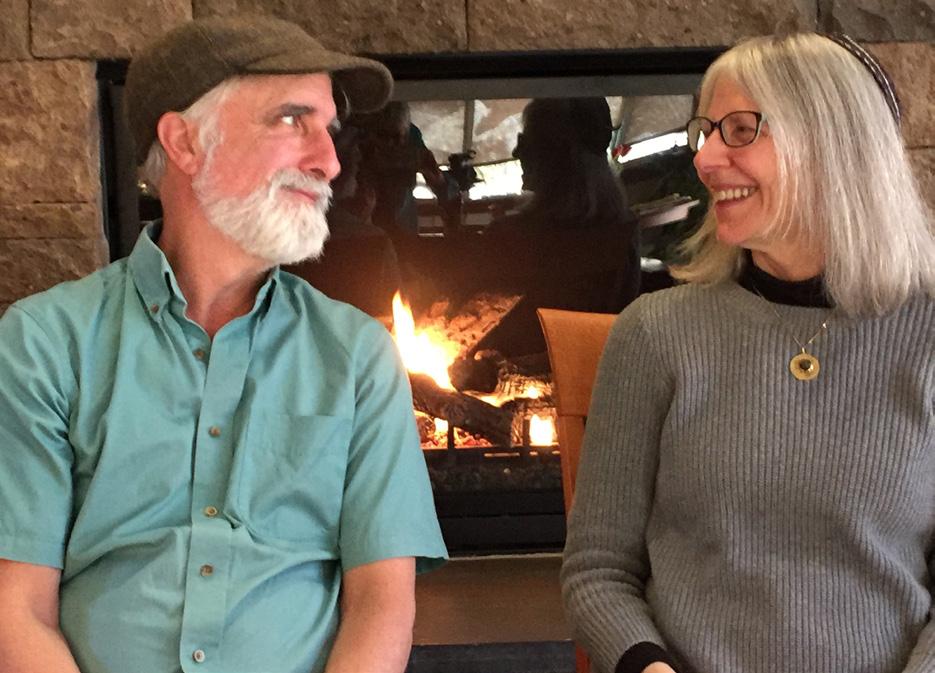
“We see each other as blessed and broken, and beautiful in our vulnerability.”
Married 27 years, Jim Whitney and Ruth Shargoury extend a beneficial presence across the generations.
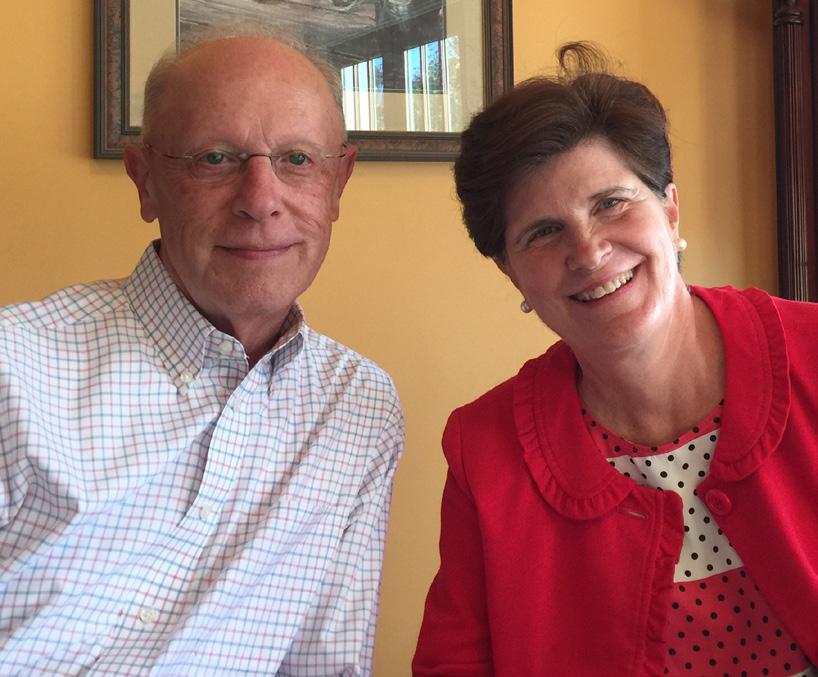
“We were there for our parents the way they were there for us when we were young. The generations are important to each other.” —Ruth
the stranger.
“A stranger is someone new. The wonderful thing about welcoming the stranger is that we see something new in each other and welcome the newness, the growth.” —Laurie

“I know talent when I see it, and I see it in you. Keep writing!”
Those few words set me on a path I would travel for the rest of my life. The person who said them was a newspaper reporter with many years of experience as a writer. I was a 30-year-old space salesperson for a small newspaper, who wrote at night when the dishes were done and my kids were asleep. I had no idea if what I wrote was any good or if I was merely indulging in a fantasy. My first mentor saw something in me I didn’t see in myself. In a single sentence, she gave me permission to take my writing seriously and stick with it, which I have done for 56 years.
published. But for reasons I could not fathom, there were people who believed in me. And so, I began to believe in myself.
BY BOBBI LINKEMEROne of those people was a powerhouse in the public relations field. She was a founder of a prestigious PR firm and a known supporter of young women who were trying to make it in a highly competitive arena. She was outspoken and brash, two traits I experienced up close and personal, sometimes flinching at her unfiltered honesty. But she also provided me with support, insight, and endorsements for close to 20 years.
Words are powerful. If I didn’t know that then, I have certainly learned it over the years. Words can crush you when someone says you don’t have what it takes to make it, or they can ignite a spark that will keep on burning as long as you nurture it.
That journalist was only the first of many professionals who guided me through the rough terrain of building a career when there was little to suggest I could. I didn’t have a journalism degree or even a background in English. I had never had a job as a writer. In those early days, I had yet to have anything
Another woman I greatly admired wrote a weekly column for a respected community newspaper. She never missed a week unless she was traveling, and during those times her column did not appear—except the week she asked me to write about the Broadway production of Fiddler on the Roof, which I had never seen. Her shoes were impossible to fill, even for one week, but I did enough research on that play to write a book. She liked it, her editor liked it, and her readers let her know they liked it, too. I was over the moon with joy at the response and remember that feeling even now, after more than 50 years.
There were other mentors over the years. Some turned into friends, others passed through my life for too short a time to be able to thank them. No one had yet coined the phrase “pay it forward,” which was the natural thing to do, especially in the writing world. If someone helped you, guided you, mentored you, you can’t pay that person back in kind. You can only pass the gift along. And I was in a perfect position to do that.
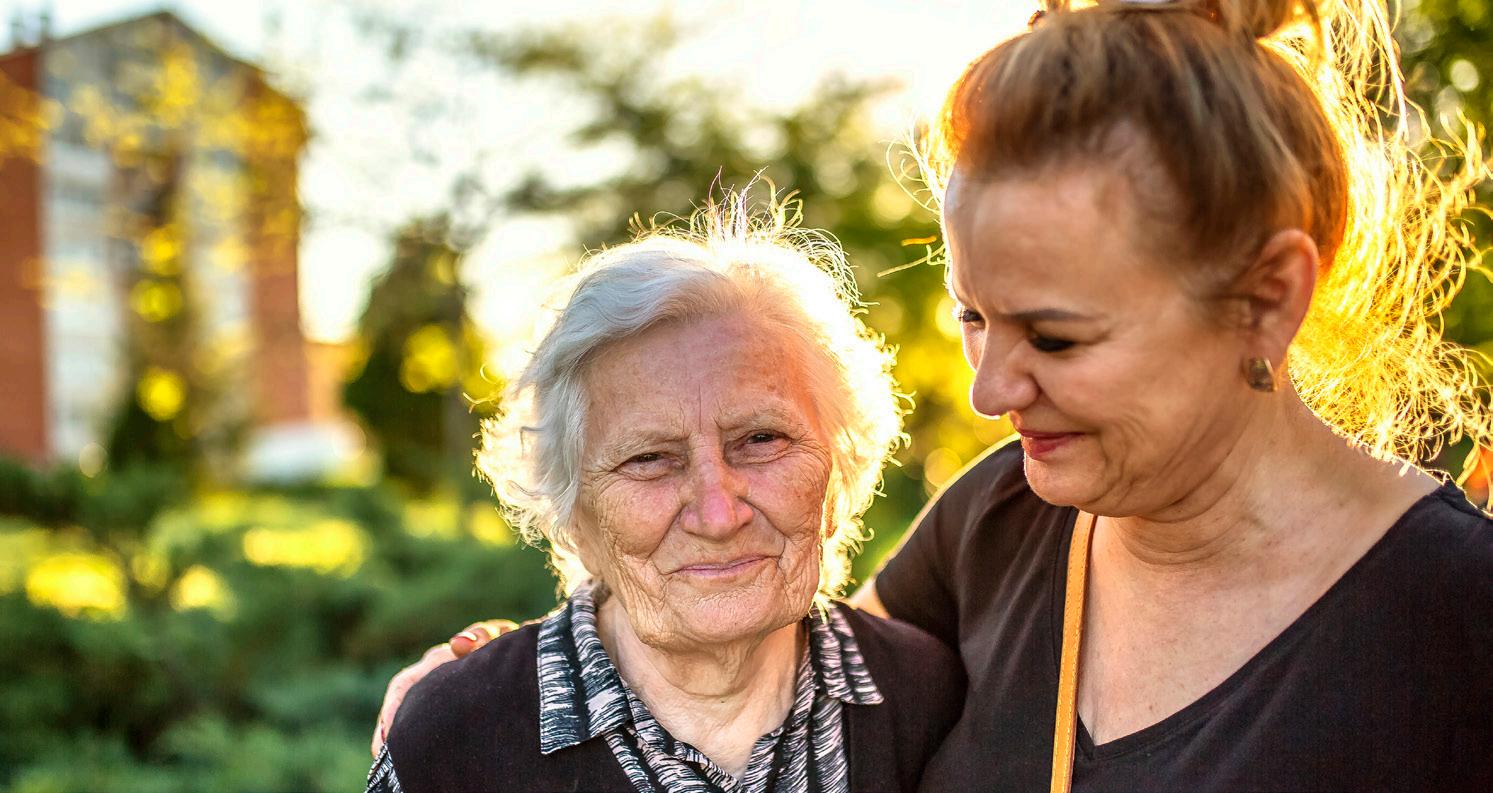
My first writing job was as the editor of a city magazine—an insane choice on the part of the publisher who hired me. At that point, I was a green freelance writer who was suddenly running a magazine, something I knew nothing about. I needed help with a lot of things, but one of the most important was filling the magazine with content. I did it by talking to many gifted writers—editing their articles, sometimes even rewriting them, and conducting “journalism school” when necessary.

The writers were euphoric, not only because I published their work, but also because I seemed to be the only editor in town who was willing to talk to anybody, read anything, and consider any piece of writing. It’s hard to say who benefited more—writers who wanted to be published or this editor who needed high-quality material to publish.
It was a wash. Everybody won, but in the meantime, without realizing it, I had become a mentor. What made it possible to assume that role was the little plaque on my desk that said, “editor.” Fortunately, throughout my working life, I found many other opportunities to help writers write, which became my mantra.
All of this came full circle in the last phase of my career when I became a ghostwriter, editor, and book coach. There is no better way to help writers achieve their creative goals than to wear any one of those hats, and I was fortunate to wear all three.
As much and as often as I was able to pass along the gifts my mentors had given me, I did so. The secret nobody told me during those early years is that when you teach, you also learn; when you put someone in touch with their own gifts, you become more aware of your own; and when you help another person become her best possible self, you become the best possible you.
There is no better example of a win-win situation.
Bobbi Linkemer has been a professional writer for more than 50 years. She has written 28 books, coached many aspiring authors on how to write and publish their books, developed and taught writing courses, and written on a wide array of subjects for print and electronic media. Her most recent book is How to Age with Grace: Living Your Best Life in Your 70s, 80s, and Beyond.
Our friendship began when everything seemed to be ending. Shops were closed, everyone was housebound. Hospitals and cemeteries were the busiest places in town.
During COVID’s season of collective retreat, a woman I knew urged me to contact Juan Mobili, a poet who immigrated to America from Argentina in the 1970s.
“I find similarities in your poetry.” Similarities didn’t do it for me. I was too busy being gainfully alone. But when she said, “His two favorite poets are Robert Lax and William Stafford,” I relented.
Lax and Stafford were also favorite poets of mine. Lax because of his oceanic spirituality, his sense of humor,
 by ROBERT HIRSCHFIELD
by ROBERT HIRSCHFIELD
his minimalism. (Lax, like myself, wrote poetry into his 80s. Juan, at 66, is a relative youngster.) Stafford because his poems are like old growth trees—deep,
solid, wise, and written in the American idiom.
A new friend in old age, when all one’s old friends have taken up underground residency, seems to come from somewhere deep in the genie’s bottle. Juan, more outgoing than I, has friends in all age groups. He works the room, as they say. I sometimes pop my head in, but the rest of my body refuses to follow.
Our introductory Zoom, in August 2020, was a little different from all the weekly Zooms to follow. There was an immediate ease between us, as if our friendship was already an established fact, and all that remained was filling in some of the historic and psychological blanks.
Juan has a strong, calm face that bends easily in the direction of ironies. A striking characteristic is the cigarette that nests unapologetically between his lips, as if this were the 1950s. He made me think of all the poets I met in Latin America when I was in my 20s and doing stories on Latin American radicals. They were mostly young. Unlike Juan, a mature family man, they could be wildly romantic about poetry, seeing it as the blood-soaked flag of revolution one moment, and a kind of literary priesthood the next.
Juan will say simply that he writes poetry, “to make the world a more hospitable place.”
His father, Jorge Enrique Mobili, was an Argentine poet of note, and a chain smoker. (My own father, Jack Hirschfield, a hotel maintenance man, was also a chain smoker. But he never a read a book in his life.)
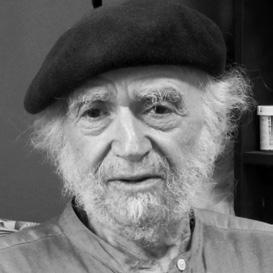
So, despite our occupying disparate points on the aging compass, Juan and I share a common heritage of poisoned lungs. His poem, “My Father Smoking” (Adelaide Magazine, 2022), draws you deftly into the old ceremonial world of the religious smoker: The sound when he flicked the lid open would make the whole family pause, the sort of collective awe Argentinians experience at the movies when Fred and Ginger danced on a terrace under a sky full of stars
My friend came of age politically during General Videla’s military dictatorship in the late 1970s.
“There was this reality going on where people would be disappearing, but you still went to buy bread and hoped someday to have a girlfriend.”
He was part of the Argentine under–ground and took the nickname Chacho. His closest friend, Claudio, also with the underground, took the nickname Memo.
Memo was captured and thrown to his death from a helicopter. (A Bolivian friend of mine, Isaac, a mining leader, met the same ghastly end.)
In his “Letter to My Body,” in his chapbook Contraband (The Poetry Box, 2022), Juan recalls: how you vaulted out of bed when a car stopped suddenly at the corner; we became so quiet then
A new friend is a mystery to be unraveled. Juan may have come from a place of darkness, but his writing is marked by careful evaluation, tender reflection, and outsider wisdom. All of this in his second language.
“In my 30s, there was a moment when I said, ‘I need to write in English because I live in English.’ Spanish didn’t seem natural to me.”
“How did it begin?” I asked him, of his journey toward becoming an extraordinary writer of poetry in the English language.
He recalls for me a day in his early 20s. He was waiting somewhere in Long Island for a haircut. He saw a store selling books and magazines.
“I bought an issue of Rolling Stone, Psychology Today and a pocket dictionary. That’s how I started to learn English.” In due time, came these words in his new language:
I saw a stone in the shape of a resentful heart and a question mark in the shape of a lamp
Juan moves among the mystery of things without making a big deal of the mystery or the thing. How far will language take us? It is the silent question beneath many of our questions. We find ourselves holding on to different ends of the same rope.
We don’t talk much about the rope’s
fraying. Perhaps because we see it as blossoming even as it seems at times to be growing weaker.
“I still live my life with the thought that what happens next is what I am passionate about. Though I may be 66, I am also 20. I have the feeling that time will not be an issue if I keep writing. Friendships run smoother if certain tribal illusions are maintained. I see that with you. Your vitality. Vitality and health are not the same. Vitality lives in the question, ‘How am I going to work today with images that will become something I could not even have imagined before I set them down?’”
At 84, the vitality Juan refers to is often necessary to beat back dread when images freeze in their foxholes. I’ll read him a new haiku about my father’s dying to reassure myself I can still write a new haiku:
the room
the shape of his cancer cough
The subject of memory and poetry dots our conversations.
He is a fan of my chapbook, my only book, The Road to Canaan , about my mother’s Alzheimer’s.
“You write about a time where you have memories, but you want to see what else is there that you missed. I always say, ‘I go back to see what I missed. I don’t go back just to affirm what I remember.’”
Saturday mornings, when Juan and his cigarette appear on my Zoom, and the old porteno gives me one of his humorously emphatic greetings, I am beyond gratified that we didn’t miss each other.
Robert Hirschfield is a New York-based writer and poet. He has spent much of the last five years writing and assembling poems about his mother’s Alzheimer’s. In 2019, Presa Press published a volume of his poems titled, The Road to Canaan . His work has appeared in Parabola, Tricycle, Spirituality & Health, Sojourners, The Moth (Ireland), Tears in The Fence (UK) and other publications.
 BY STEPHEN SINCLAIR
BY STEPHEN SINCLAIR
Tell me, what else should I have done?
Doesn’t everything die at last, and too soon?
Tell me, what is it you plan to do
With your one wild and precious life?
This, the final stanza of Mary Oliver’s well-known poem “The Summer Day” challenges readers to reflect upon the purpose of living, especially for those in the third act of their lives. She asks us to take stock of what we’ve done until now and then what we envisage ourselves doing with the time we have remaining—the use of the words wild and precious give these questions a sense of urgency.
I’ve found that most people simply answer that they want to do whatever will bring them happiness. After all, our culture is forever telling us that the goal of life is to be happy. Even in the 19th century this was an oftexpressed sentiment, something that caused Ralph Waldo Emerson to write, “The purpose of life is not to be happy. It is to be useful. To be honorable. To be compassionate. To have it make some difference that you have lived and lived well.”
Happiness is a byproduct of right living—of being fully engaged in the world and doing what we sense our Spirit is calling us to do.
When thinking about how to age artfully— creating a life that’s a manifestation of our dreams and a reflection of our core values— we should first think about how we can be of service to others and to our communities. If we do this, we will have a conscious, purposefilled life.
In my own life there have been periods where it seemed that life just happened to me, that my decisions about the direction of my life were made as a reaction to forces out of my control or choices made by others. Inevitably, I suffered because of it.
Aristotle taught that choice, not chance, determines one’s destiny. It’s up to us to step off the merry-go-
round we no longer wish to ride, and take stock of who we are and how we want to live. We can then become the driver of our destinies, the creator of our lives.
Up until the middle of the last century most people didn’t live long enough or have the economic security that would allow them to consider how best to live in their senior years. In the U.S., life expectancy in 1900 was only 47 years. By 1950, it increased to 68 years and, up until the COVID pandemic, had risen to 79 years. For most of history the majority of people worked right up until the time of their death. The option of retirement and the question of how best to spend their last years never arose.
It is a privilege that those of us with sufficient financial resources can reimagine who we are and how we want to live our lives. However, no matter one’s economic means or health status, we can all choose to live a life filled with purpose, creativity, personal growth, and grace.
We do this by starting where we are. We accept that we have certain abilities and not others, and ask ourselves the following questions:
1. How can I be of service to humanity?
2. What have I dreamed of doing, but am afraid to try?
3. What did I once like doing, but then stopped?
4. Why do I care what anyone thinks about me and what I do?
What we come up with when answering these questions will be rich, varied, and maybe even surprising. Perhaps we have a skill or ability that could be used in a volunteer setting, or our life experience or career can help someone who is struggling with their life circumstances or work. We may remember talents we exhibited as children, but weren’t given a chance to develop. Conceivably there are things we once liked doing such as dancing or painting, but quit because we thought we weren’t good enough.
Life is precious—and finite. How do you choose to spend the remainder of “your one wild and precious life?”

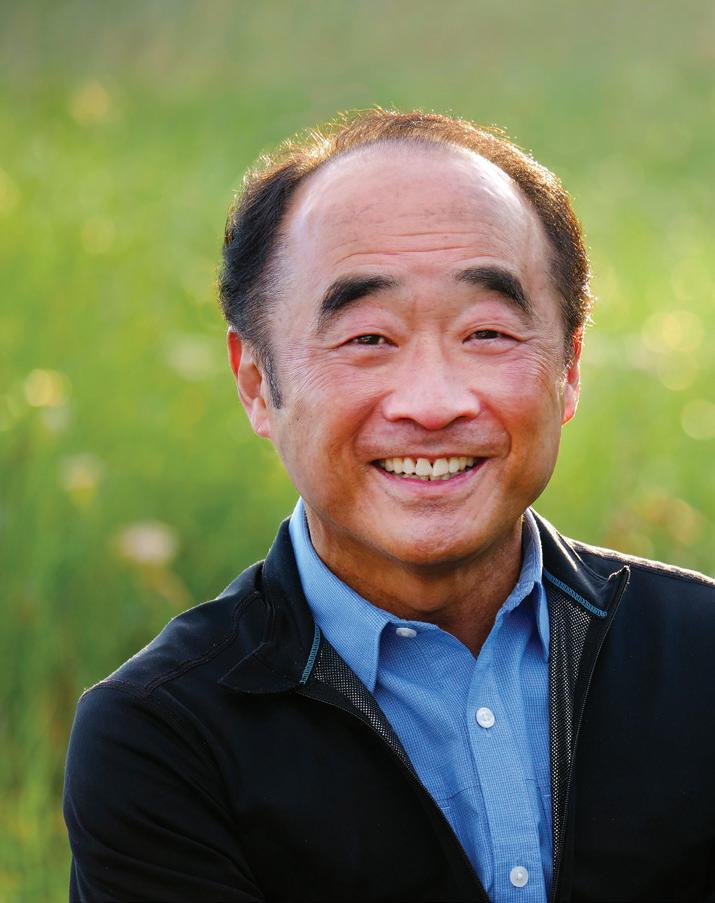

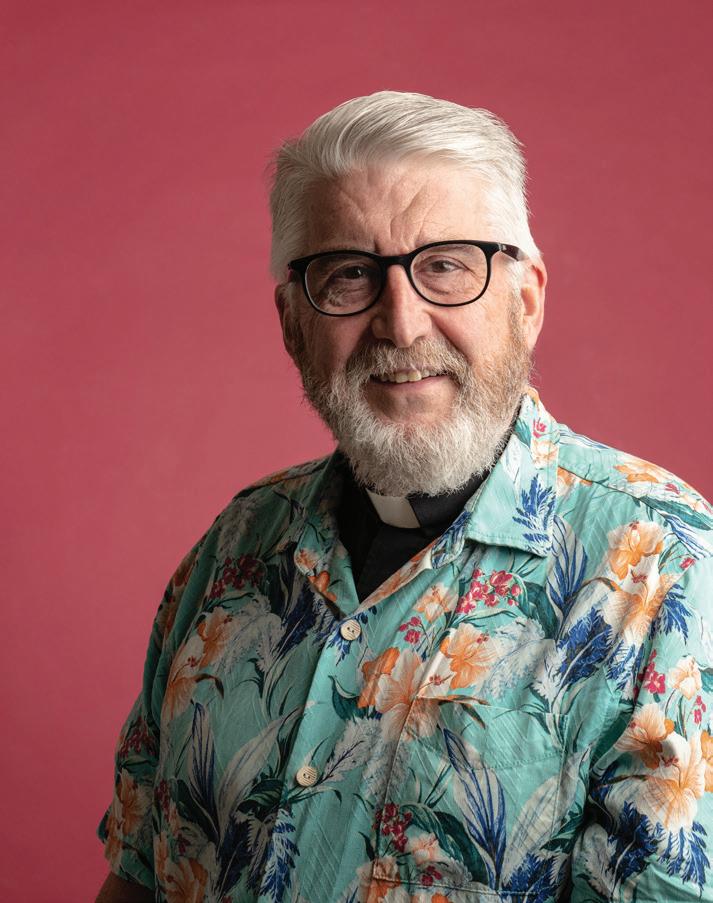
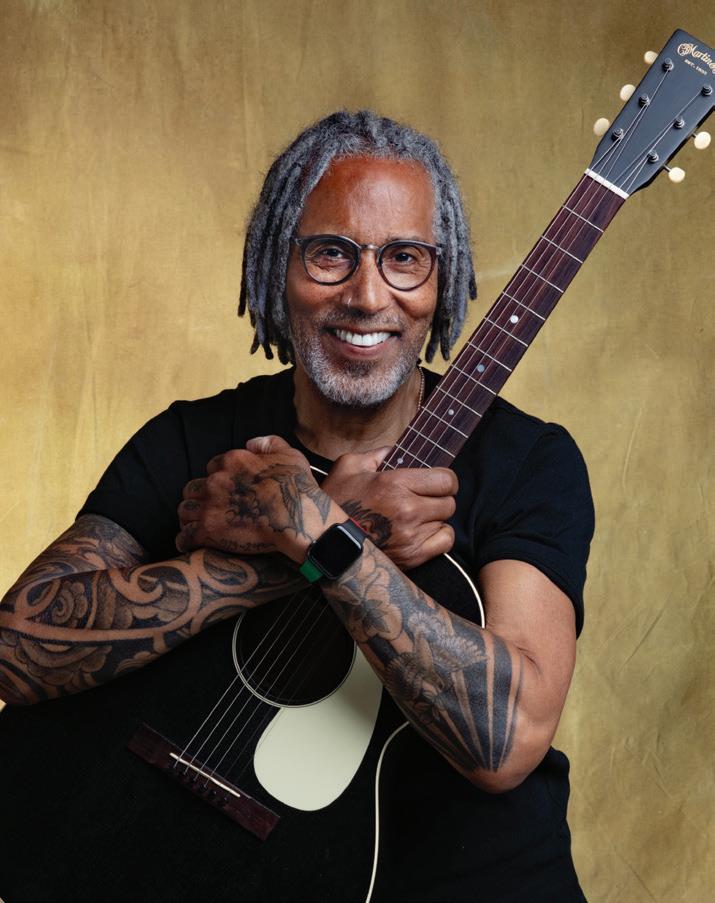
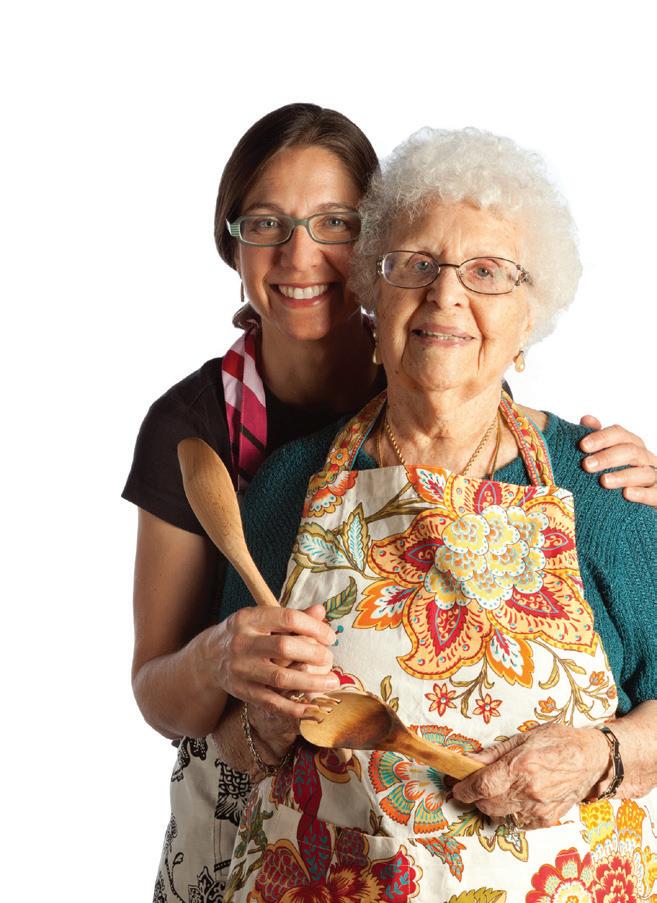
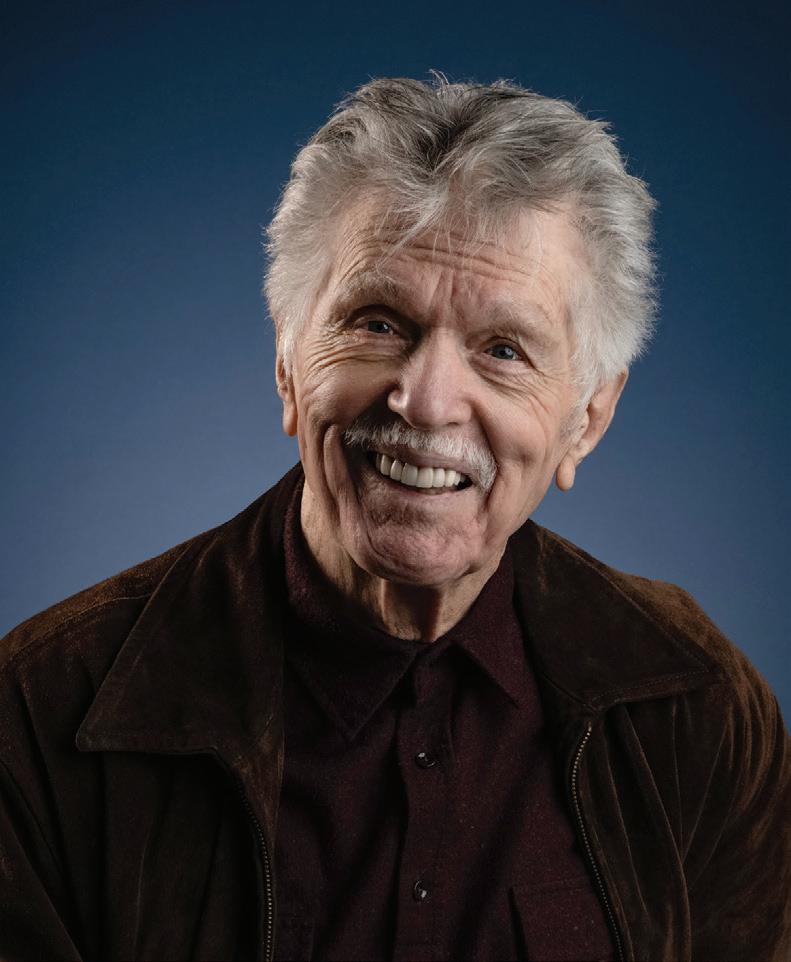
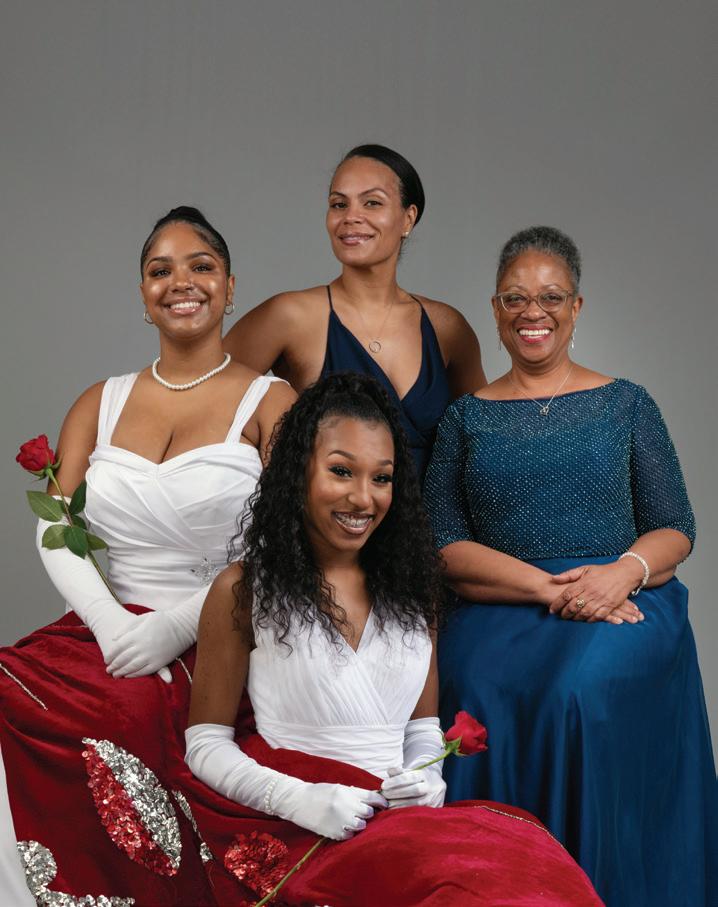
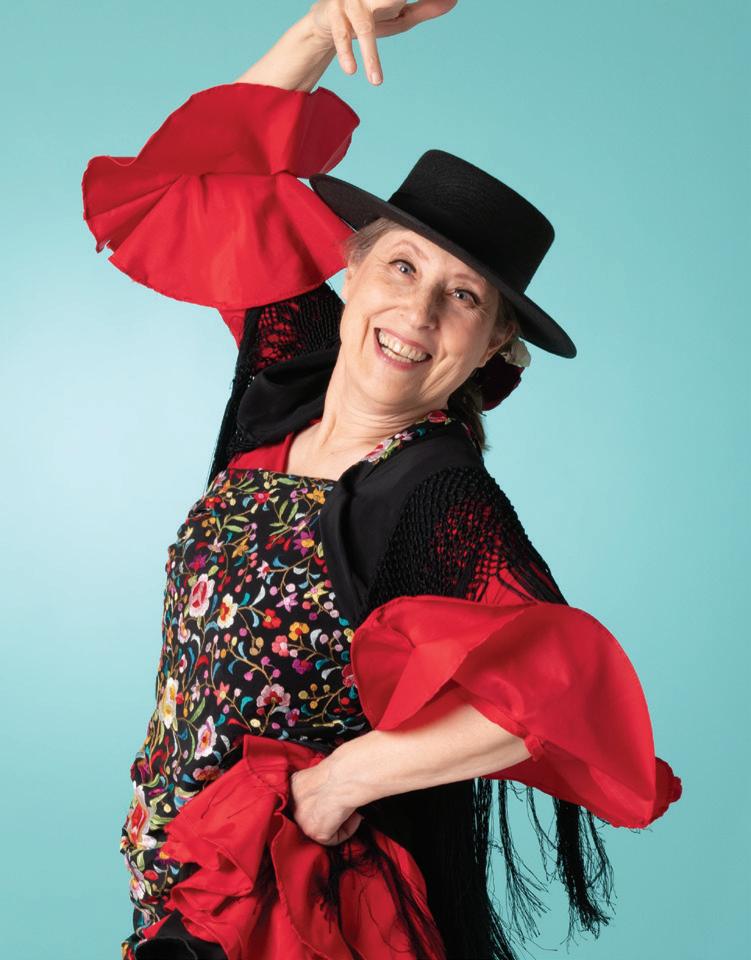

A close friend’s recent phone call sounded so chipper, I figured she discovered a new place to live.
Turns out her ecstasy came from finding the perfect place for her husband and herself to be buried. (They’re both very much alive, albeit in their 80s.)
The lilt in her voice had a giddiness about it. Somehow, as the two of them found their way through the many options, this tough undertaking shaped into a joyous glimpse of their hereafter.
They purchased their plots and gravestones at the same time because they wanted to be sure of the location as well as the way the headstones were crafted. Headstones bought at different times might mean they wouldn’t match, she said.
They also hoped to be buried near as many family members as possible, which meant one sad compromise. They’d be buried near a freeway—an
artistic sacrifice they were willing to make.
“Uh, you won’t be able to hear the traffic noise,” I said.
“Those who visit us might, though,” she replied.
They decided they wanted to be buried in biodegradable baskets, but a body in a basket can only be unrefrigerated for six hours. That means caskets for their funerals, then transferring their bodies to the baskets for burial. And baskets? Unlike caskets, much deeper holes are required to protect baskets from animal invasions.
The palpable relief in her voice— to have all this plotted out, pun intended—was ethereal, but she shared a warning. Some men, she said, are very sensitive when it comes to discussions about death.
“I really am not afraid of death. My fear is living too long!” she said with a laugh, then added, “What are you two going to do, anyway?”
“We want to be cremated,” I told her.
“Cremated? Wonderful! Then your ashes could be buried in biodegradable boxes to rest on our baskets or what’s left of them. We’ll have room for three boxes of ashes on each basket. How cool that would be!”
That got me thinking. Although she and her husband are great friends, do we want our ashes down under on their baskets—or on anybody else’s, for that matter? Our parents, perhaps? Not in the cards for me. My father was cremated and his ashes were scattered from a plane over Lake Michigan. My mother is buried on a lovely plot that unfortunately is under the flight path to Chicago’s O’Hare International Airport. I’ve only a few cousins and high school cronies left in the Chicago area. Most deceased members of Howie’s family are buried in Lewis County, Wash.
My friend’s delight to have so much planned ahead of time was contagious. How many urns or biodegradable boxes would we want? Before selecting the perfect urns, boxes, or settings for our ashes, I found online Mary Anne Vance, a savvy Seattle elder law attorney, who
shares other options for these difficult decisions.
Some, for example, might want to consider organ donation or a Willed Body Program at a university to help educate medical professionals of the future.
Deciding about someone’s remains has political and environmental implications as well. Skipping the flame is a big part of that. Alkaline hydrolysis, sometimes called water cremation, has less environmental impact because it takes less energy and eliminates direct emissions of greenhouse gases or metals, Vance notes. She also mentions green burials that return bodies to natural burial grounds, such as one owned by White Eagle Memorial Preserve, a nonprofit in Goldendale, Wash.
Climate change has an urgency that continues to create new alternatives. A Seattle firm called Recompose is a licensed funeral home that does human composting to transform bodies into nutrient-rich soil to give to loved ones. Recompose even schedules both small, in-person and virtual guided tours, according to its website. (Unbeknown to me, they recently started advertising with us, so you can read more about them on page, 9.)
As a newspaper reporter in the 1970s, I wrote about a suggestion to purchase your own coffin—one with a flat top— when you’re young and healthy. Give it life as a living-room coffee table to help warm up to the notion of your own passing. Funeral directors I interviewed said there weren’t many requests for coffins without funerals, but they liked the idea. Who would’ve fathomed that coffins might soon become relics of yesteryear?
Annie Culver developed a knack for unearthing oddball characters and improbable events as a staff writer for various newspapers. In the early 90s, she went to work for websites where she wrote sassy essays aimed at women. In recent years, she morphed into a writer for several universities in the Northwest. She retired in 2016, yet still enjoys freelancing.
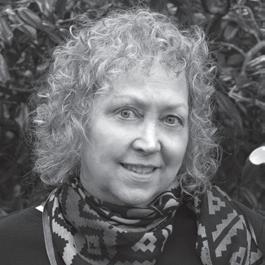
Some of your best years are yet to come, and our senior living communities want you to feel inspired, connected, and free to be yourself. We’ve earned a reputation for delivering on our promise of better living and the peace of mind that comes with exceptional personalized services and support.

Independent Retirement living • Assisted living • Cottage Homes

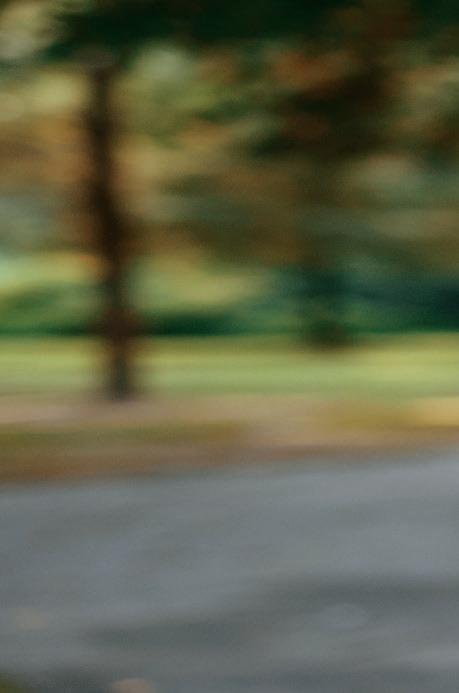


Big Mike is aging artfully, and not just because he’s an artist. In the 10 years that I’ve known him, he’s been the creator and the personality behind two thriving businesses. He built each enterprise on very different canvases—a beach and a desert. Today, the man who’s “knocking on 60” has come a long way from the “introverted gay kid” whose father disowned him at 17.
I’m fortunate to have Mike Arnone, aka Big Mike, as a mentor. When I started my first gym in Seattle, Big Mike was already world famous in the industry. “Big Mike’s Ultimate Beach Workout” in Santa Monica, Calif., was situated just steps from the Pacific Ocean. It was an unparalleled experience of natural beauty, fun music, and creative exercise circuits that Mike designed himself. Dolphin sightings were commonplace during workouts.
GQ and Details magazine wrote about Mike. His Yelp page had hundreds of five-star reviews. When I phoned Mike for advice, my Yelp page had zero reviews. Nonetheless, he talked with me for over an hour, sharing tips and offering encouragement. Over time, his guidance helped me build a thriving fitness business of my own.
Years later, I asked Mike why he was so helpful to me.
“There’s enough Aloha for everyone,” he said. “Paying things forward comes back to you in a million ways.”
I believe him. Not long ago, a young gym entrepreneur asked me for advice. I passed along some of Mike’s wisdom, which holds true today.
Mike’s life took another turn when he moved to Palm Springs with his partner, Dana. He left the ocean behind and found new inspiration—as an artist in the desert.
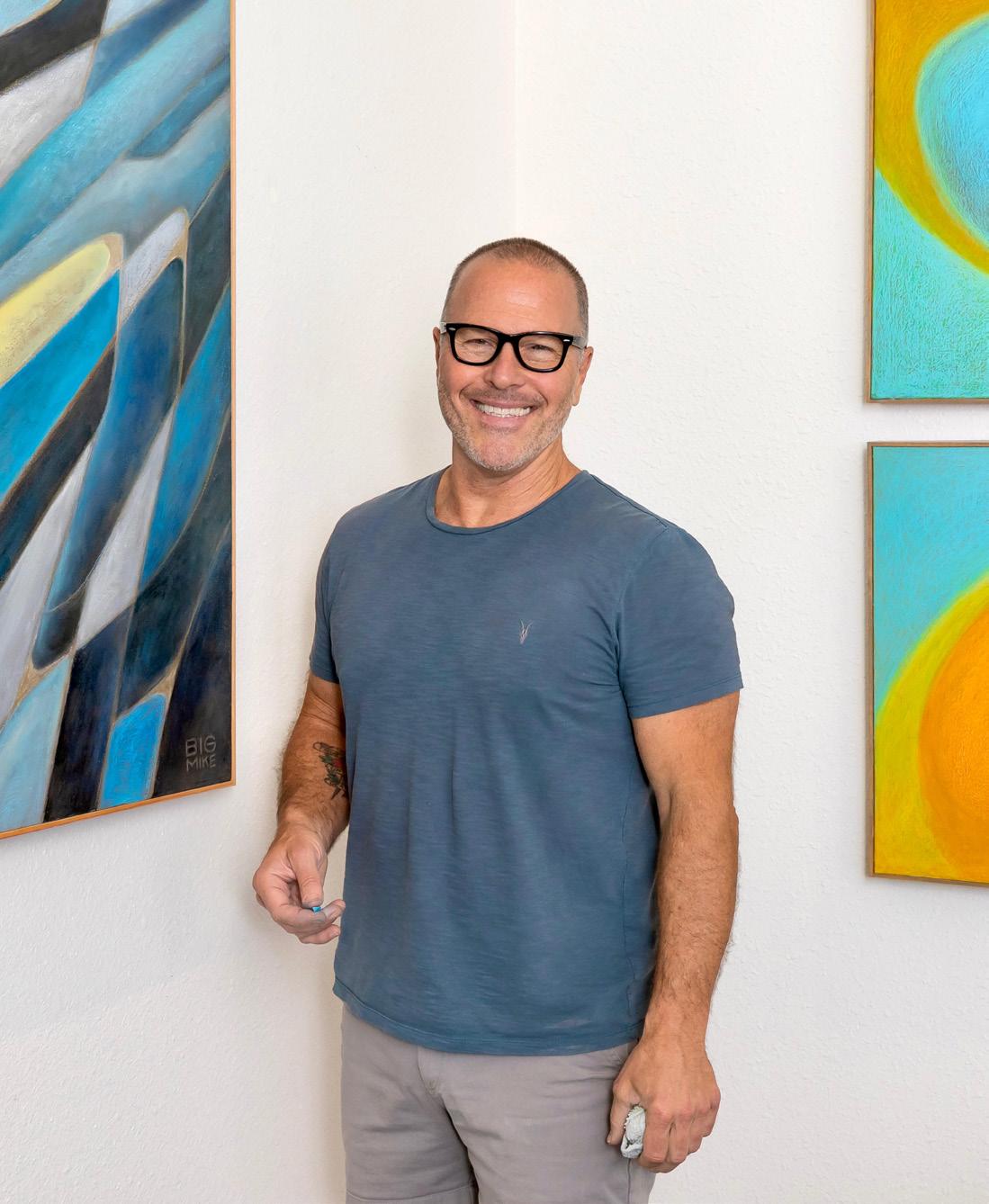
“The eccentric history, breathtaking architecture, and captivating natural beauty of the desert … became the backdrop for my abstract painting,” Mike writes. His art represents “a fusion of all my life experiences intertwined
with the sublime modern style of my stunning desert home. Through a torrent of smudges, swirls, whips, and hatches, I reimagine the mid-century vibe, infusing it with sacred geometric worlds.”
With help from Dana, Mike started a small studio. As his reputation grew, his studio expanded. Mike has a vision that, not surprisingly, includes helping fellow artists.
“This building was pretty anonymous when I moved into it,” Mike said in an NBC interview. “I had a dream … it was about bringing more artists in and creating an arts district.”
That dream became reality when Mike started a monthly art walk. Five galleries are represented, with a sixth to come.
Another benefit of moving to Palm Springs was that Mike and Dana were able to provide Mike’s mom with her own home. Mike calls his mom “my best friend,” who taught him “never to give up on my dreams.”
Big Mike is living the values his mom instilled in him as he pays it forward to family, friends, and the community.
To learn more about his work, visit http://www. BigMikeArt.com or follow @BigMikeArtPS on Instagram.
In Parts 1 and 2 of this series, you learned how to determine the issues you’ll need to address as a caregiver as well as how to take care of yourself to maintain your energy. In Part 3, you’ll learn about the professionals who can assist you in performing tasks that you can’t or may not wish to do on your own.
If you can’t provide care all on your own, there’s plenty of support available to you.
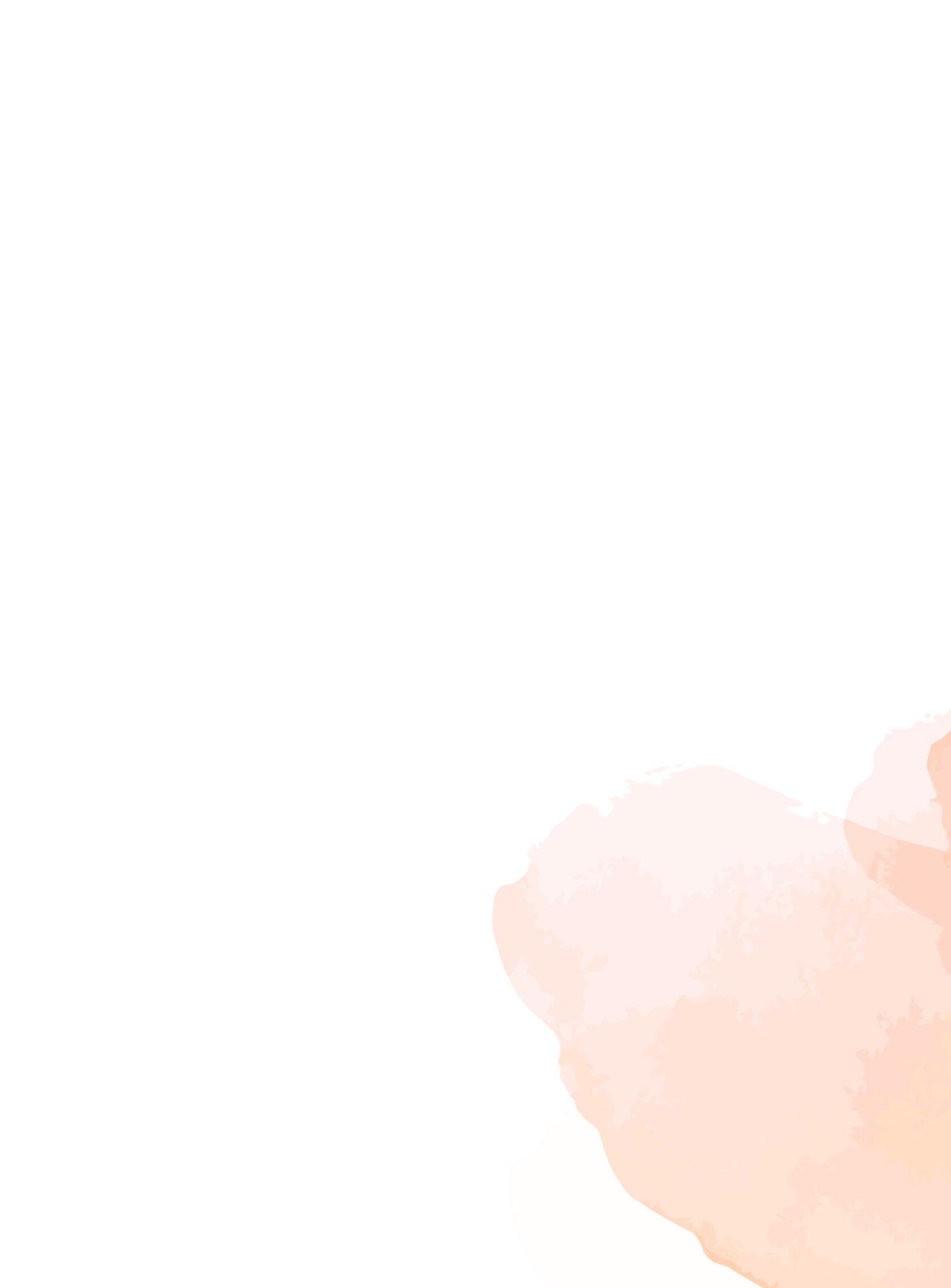
You have been taking care of your loved one for a while, doing your best to be present, vigilant, and proactive in meeting his/her needs. But as time and sustained effort take its toll on your caregiving efforts, you may find yourself needing some assistance in order to maintain your care recipient’s health and quality of life. You’re not alone in finding yourself in such a situation.
Many caregivers reach this challenging step for a number of reasons. For example, a long-distance caregiver can find it extremely difficult and risky to manage important details in a timely way and needs someone on site or at least locally to help. In other cases, the loved one’s health has deteriorated and requires care that involves advanced medical training or relocation to a long-term care setting. Or perhaps an increased number of hours of caregiving may start to affect the caregiver’s own employment or mental, emotional, and/or physical endurance.
If you find yourself in any of these situations, where do you go for that help? And more importantly, how do you ask for it?
First of all, it’s important to understand that you have a right to ask for and get help from others. Although you may be your loved one’s primary caregiver, you don’t have to do everything yourself. Consider making specific requests of your siblings, adult children, and the care recipient’s friends and neighbors. And when it comes to your personal needs (collecting your mail, walking your dog, etc.) ask your own friends and neighbors, too. Don’t feel guilty about reaching out. Secondly, know your own limitations regarding specific roles and find helpers who are better suited to assume them. For example, is there someone you know who would be better at handling financial matters, or dealing directly with health care providers? No matter where you live, you might want to get to know and exchange contact information with any neighbors, friends, and others who already engage regularly with the recipient in order to create a “care team” who will check up on him/her and contact you if there are any problems that need your attention. You might also consider using an online caregiving group portal
Part 1: Preparing for Caring
Part 2: Looking After Yourself
Part 3: Getting Extra Help
Part 4: When Caregiving Ends
for coordinating the efforts of each member of that care team.
In addition, prepare your loved one and yourself for a future time when a long-term care environment (e.g., independent or assisted living community, group home, skilled nursing facility, hospice) might be a better housing option.
At some point, you and your loved one may find it necessary to hire one or more professional, or formal, caregivers. While the cost for such help can be expensive and isn’t covered by Medicare, their help might be well worth the cost. There are several different kinds of professionals ready to assist you and your care recipient.
Personal care assistants can provide for your loved one’s non-medical needs such as bathing and dressing. They may also do the laundry, grocery shop, prepare meals, and do light housekeeping tasks.
Home health aides are trained to do medical tasks, such as taking blood pressure, administering medications, and performing certain medical procedures under the supervision of a nurse practitioner or registered nurse.
If you have difficulty finding the best formal help, there are other kinds of professionals that can help you make informed decisions.
Certified senior advisors can direct you to resources, organizations, and agencies that can assist you with financial planning, in-home caregiving, aging-in-place renovations, long-term care housing, and other services.
Geriatric care managers go beyond advising and take on the actual management of your loved one’s case by assessing that person’s needs, helping form a caregiving plan, scheduling appointments, coordinating medical services, troubleshooting, choosing care personnel, and arranging longterm care housing.
Of course, working closely with any of these professionals will require a mutual understanding of expectations—the care recipient’s, yours, and theirs— to avoid creating any tensions and problems that interfere with your loved one’s care. Here are some tips to establish a good working relationship:
• To the extent possible, involve the recipient in making all hiring decisions.
• Set clear boundaries regarding which tasks are to be done by whom.
• Agree upon a process for updating a schedule that includes not only when the professional is available to work or otherwise be contacted, but also when your loved one might want to be alone, have visitors, or go out.
• Provide specific and timely feedback regarding any changes in your loved one’s medical status or social needs.
• Discuss any problem as soon as they arise and arrive at a mutually acceptable solution.
While many caregiving situations happily end with the improvement and total recovery of the recipient, others may result in his/her deterioration due to a serious chronic illness. When this happens, engaging the services of a palliative care medical team can be a very wise decision.
Too often, people confuse palliative care with hospice care. The two are not identical. Hospice care is provided for people who have been diagnosed with a terminal illness and have been given a prognosis of less than six months to live. Palliative care, on the other hand, can be provided to anyone with one or more chronic illnesses that require medical intervention to control pain, reduce symptoms, and improve the patient’s quality of life.
Sometimes a patient’s primary care physician may not think of offering the option of palliative care. If you or your loved encounter this situation, consider bringing up the subject and getting a referral.
Another circumstance requiring additional professional help arises when someone is in the hospital, and neither a caregiver nor anyone else is able to
Resources for more tips, strategies, and support:
• Aging Life Care Association
www.aginglifecare.org
(To search for a geriatric/life care manager, type in only your state.)
• CaringInfo.org www.caringinfo.org
• Eldercare Locator
https://eldercare.acl.gov
• Family Caregiver Alliance
https://www.caregiver.org/
be on hand to offer support. In that case, it’s important to know that most hospitals have patient representatives or patient advocates who can serve as liaisons with the medical staff to see that a patient’s rights are maintained, and needs are best served. Or caregivers may choose to hire a private patient advocate from an outside company or organization to help their hospitalized loved one.
Hopefully you will find that being a committed caregiver is emotionally rewarding, knowing that you’re maintaining the health, autonomy, and dignity of someone you love. It’s important to remember that doing your best involves having the ability—and giving yourself permission—to create as smooth a road as possible in the journey you’re taking together. Finding and getting the help you need will not only be a gift to you, but also to the person whose care is uppermost in your mind.
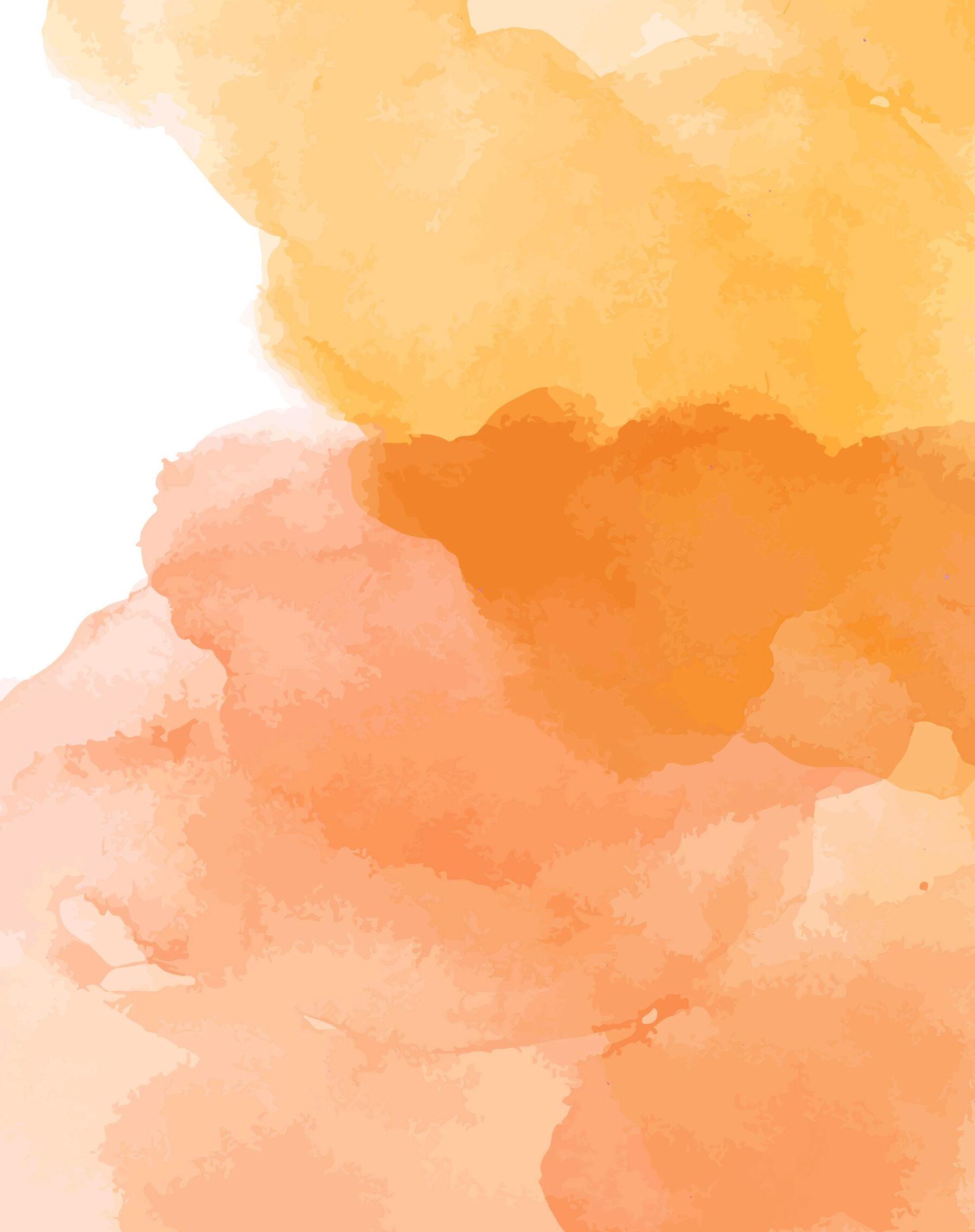
Jeanette Leardi is a Portland-based social gerontologist, writer, editor, and community educator who has a passion for older adult empowerment. A former caregiver to her late parents for more than a decade, she now gives popular presentations and workshops in journaling, memoir writing, ethical will creation, brain fitness, creativity, ageism, and more.
• Lotsa Helping Hands
(online care team portal):
https://lotsahelpinghands.com/
• National Adult Day Services Administration
www.nadsa.org/for-caregivers/ consumers/
• National Hospice and Palliative Care Organization
www.nhpco.org/
• Washington State Aging & Disability Resource Center
https://www.dshs.wa.gov/altsa/ stakeholders/aging-disabilityresource-centers-adrcs
“It is in the dying that we awake …”
—St. FrancisDying to live is a yearning for what life has to offer. Living to die is just being alive for life to end. But what if we are faced with an end we are not ready for? This is where an end-of-life doula can help.
What is an End-of-Life Doula?
Sometimes referred to as a death midwife, or death doula, end-of-life doulas assist with the dying process, much like a midwife assists with the birthing process. An end-of-life-doula empowers a dying person to take control of their situation, get questions answered, and put a plan in place as they move forward with treatment or choose supportive care. Doulas can connect us (or our loved ones) with resources, and help us prioritize what is most important, enabling us to better communicate our wishes to our health care team, family, and friends.
Doulas are skilled listeners who provide a calming influence and help troubleshoot challenges that may arise. They provide emotional support and comfort measures related to non-medical aspects of care such as positioning, visualization, and breathing techniques. Some doulas help with household chores, meal prep, and transportation to medical appointments. Doulas take a nonjudgmental, non-medical approach to death support, working to ensure we live our best life as we move toward saying “goodbye” to those we love, and “hello” to those who have gone before us.
Doulas use a “life review” to guide the dying in reflection on the meaning of life. Many times our most powerful memories are those connected to unresolved conflict, regret, shame and guilt. Being guided through a life review process can help a person let go of guilt and shame and feel relief. A life review reminds the dying of life’s joys and allows us to celebrate life’s big moments.
Impending death is the time to finish unfinished business, which can cause pain and heartbreak if not confronted. Dr. Ira Byock, a pioneer in
palliative care, recommends a forgiveness practice. He encourages his patients to take care of the unfinished business now, rather than at the end, when it may be too late. The practice, which originated in Hawaii, includes saying “I love you,” “I am sorry, please forgive me,” and “thank you.”
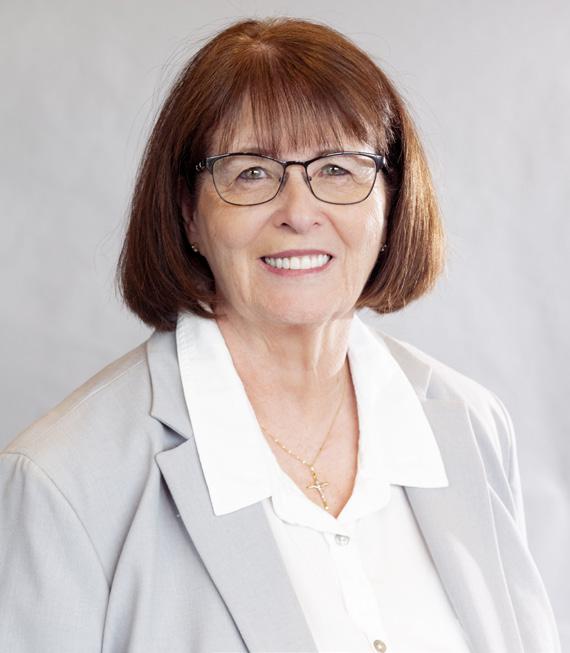
A life review acknowledges we leaves a legacy when we die and doulas encourage families to work with the dying on legacy projects such as audio recordings, videos, photographs, and memory books. Legacies are the final gift we pass on to our family and future generations.
Spiritual care is different for everyone. Whether you belong to an organized religious faith, or you are agnostic or an atheist, spirituality plays a role in how we cope with our impending death, have hope, gain strength, and find comfort and connection. Recognizing the importance of traditions and practice is critical to artful living and a creative death experience. Doulas can provide support in helping us find meaning in our situation and handle the stress we feel.
Where do you want to take your last breath? It is not just about the care we receive as we face death, but where we want to die. Most people prefer to die at home. Yet sometimes, for many reasons, we may not get to make that choice.
If we or a loved one is dying in a hospital or nursing home, things can be done to make the space look and feel more like home, such as creating comfort and peace by bringing in objects that have special meaning.
If lucky enough to be at home, small considerations matter such as where the bed should be placed, such as in the living room or bedroom. Do you want natural light and fresh air from open windows? Would you like comforters, quilts, candles, flowers, plants, music, or special oils? Are there spiritual or religious objects you’d like displayed?
As the end draws near, entering the space of a person who is dying is a sacred event. Some people take off their shoes before entering the space just like it is done in temples or mosques. One family
requested a chair be placed outside the room so people can pause and gather their thoughts before entering this sacred space. There are many ways to create and hold space, such as having loved ones gather around the dying to share stories.
As William Ernest Henley states in Invictus, “I am the master of my fate, I am the captain of my soul.” An end-of-life doula educates and empowers individuals to face and embrace death and dying by beginning the conversation, and by bringing meaning, dignity, and quality to the final days as we stand at the threshold of our life’s journey.
Bonnie Blachly is a co-founder of Gentle Passage Doula Collective, a certified end-of-life doula and coach. A professional nurse educator, she team-teaches doula classes and walks with clients with life-ending conditions from diagnosis through death, supporting their loved ones after death, and promoting a positive death experience.
Colleen J. Hewes DC, MSN, RN, is a co-founder of Gentle Passage Doula Collective, a certified end-of-life doula and conscious dying educator. She has taught gerontological nursing courses at several colleges and universities and is involved in speaking engagements in Washington state, promoting a death-positive culture. She is a co-host on “A Different Kind of Doula.” (https://winwinwomen.tv/show/a-different-kind-of-doula.)
Doulas come from all walks of life because this is a non-medical role. Having an idea of what you need the doula to do for you will help you choose the best person for your situation.
Most end-of-life doulas become qualified to do this work through training programs—from a weekend intensive hands-on training to a sixmonth self-paced program. Be sure to interview the doula to ensure they have the qualifications you are looking for in your situation.
Suggested interview questions to ask a doula:
• Describe the doula training you received.
• What other kinds of training have you done?
• Why did you decide to become a doula?
• How long have you been doing this work?
• What kind of clients have you worked with?
• Given our situation, what kind of support would you be able to provide?
Aging’s momentum cannot be altered. However, we can move gracefully through it when we consciously practice pausing before engaging with life’s circumstances. Slowing down enough to gather our response enables us to compassionately assess and set realistic limits. Pausing before making a choice counteracts the mindset found in our contemporary culture that demands immediate information that then pressures us into rapid decisiveness. The ability to halt to gather a more authentic, and therefore loving, response is the gift aging can illuminate.
In Chinese medicine, the turtle retains its life force by tucking its head into its shell, thus conserving energy. Retreating to contemplate or hold what needs to be considered are human ways of going within to retain our chi or energy. Being grounded in this perspective of slowness
and reflection counters the frenzied push many of us have adopted as the only way of life. This cultural craze of relentless activity extends into our aging process, a time that was once appropriated for less all-consuming ways. Through pausing and creating space between our actions, time is befriended.
I decided to apply values of pausing, mindfulness, and stillness to my ordinary daily activities. By concentrating more singularly on the task at hand, I maintained my inner strength and opened clearer spaces within me. Little by little “consecrating the ordinary,” as the Jewish philosopher Martin Buber advocated, became my way of life. Imagine my great surprise when doing less and even feeling empty began to satisfy me and help me experience contentment. Pausing enabled subtle changes in my thoughts, words and deeds, which surpassed what I had previously experienced as “the more.” The gentle process of making small changes after pausing mindfully created deeper, more purposeful meaning behind my actions. In harnessing my inner strength to pause, I also retained more energy. I began to experience a shift in my attitude—a sort of homecoming to the essential disposition of my heart.
I began to apply the wisdom found in many traditions to support my aging process. The Japanese custom of oryoki— whereby Zen monks learn a prescribed eating ritual based on the concept of “just enough”—intrigued me. The philosophy behind the intricately attuned practice of being in the present
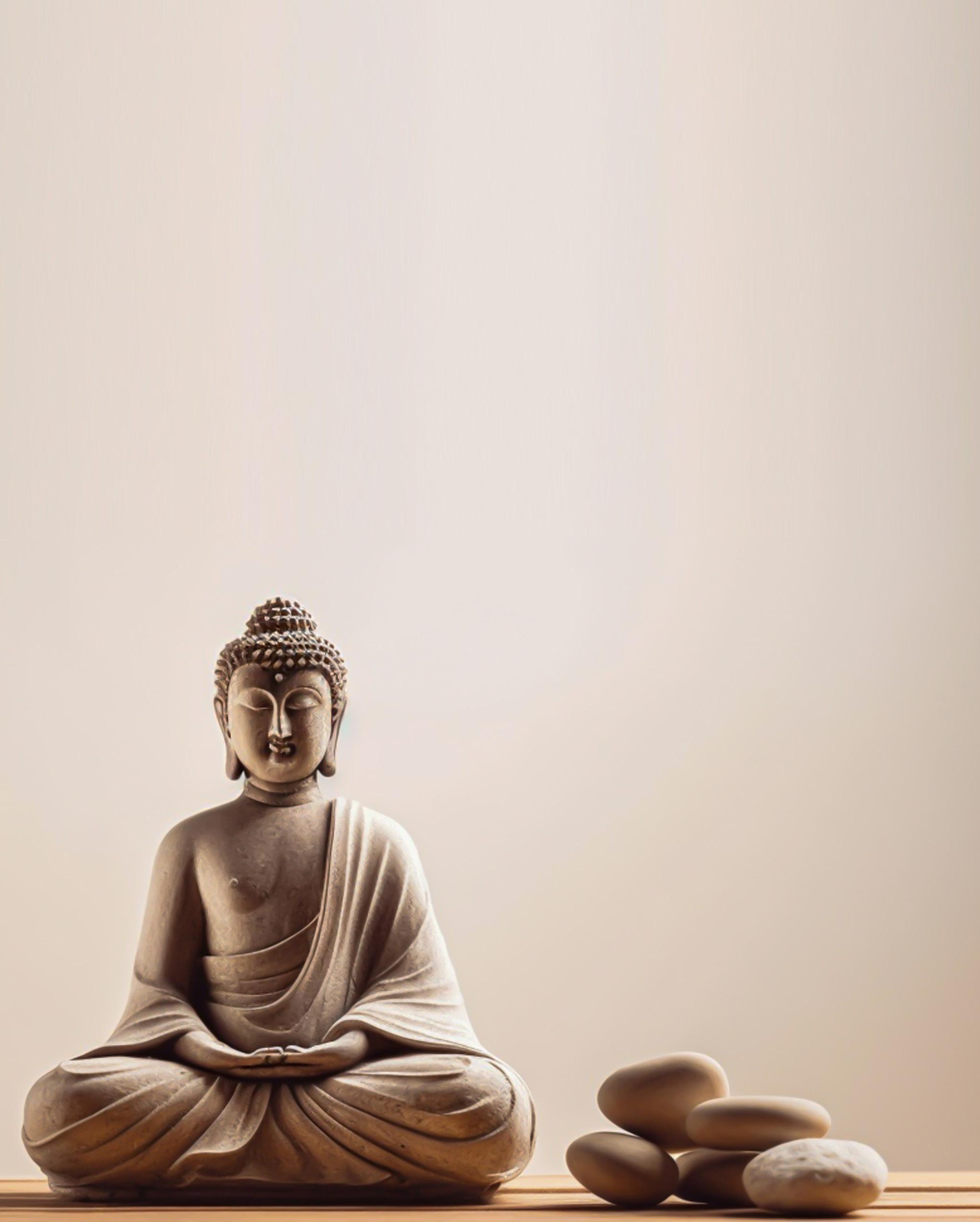
THE LAST THIRD OF ONE’S LIFE SHOULD BE A TIME OF LESS CONCERN FOR ACQUISITION... WHAT MATTERS BECOMES ABOUT BEING FULLY PRESENT TO ACCESS MORE LOVING KINDNESS.
moment through the ritual and mindset of oryoki is also found in the practice of qigong. Ideally, the practice of qigong can translate into a person’s ordinary way of relating to the world, too. By using the right amount of physical effort for a task at hand chi, or energy, is reserved to create longevity. Scientists revel in understanding a source’s content to know how its origin reveals itself and how that affects what it encounters. Think about how some rivers, streams, and creeks are influenced by their source. I, too, want to be strongly influenced by the source of love or the benevolent energy within me. In Alaska, the Copper Glacier feeds the Gakona and Copper rivers, and though their source is thousands of feet above and thousands of feet away from them, it determines the quality of those riverbeds. These very riverbeds then impact the stability of the biological communities living in them, making the rivers home to prolific and famous wild salmon runs. We, like the life in rivers and streams, need energy sources to sustain us and to allow us to thrive. Being grounded and sustained by our inner source of strength readies us to be available when called to action.
The last third of one’s life should be a time of less concern for acquisition, which naturally lessens the need to barrel through life. What matters becomes about being fully present to access more loving kindness. The privilege of aging honors realistic limits, while still cultivating a meaningful existence. This power of pausing enables us to linger longer, gently nurturing the habit of noticing, which enables us to remain at ease with our whole selves.
Choices will come more naturally and give room for slight adjustments if warranted. Quarter-turn movements honor the natural flow and pace of making profound life decisions that manifest from a mindset that harmonizes itself into action. Pausing makes it possible to experience formlessness coming into form. Holding the very spaciousness of mindful reflection creates and provides richer, stronger, and deeper manifestations of life. The gift of time generates much gratitude for our befriending the aging process and certainly is a wholly peaceful perspective.
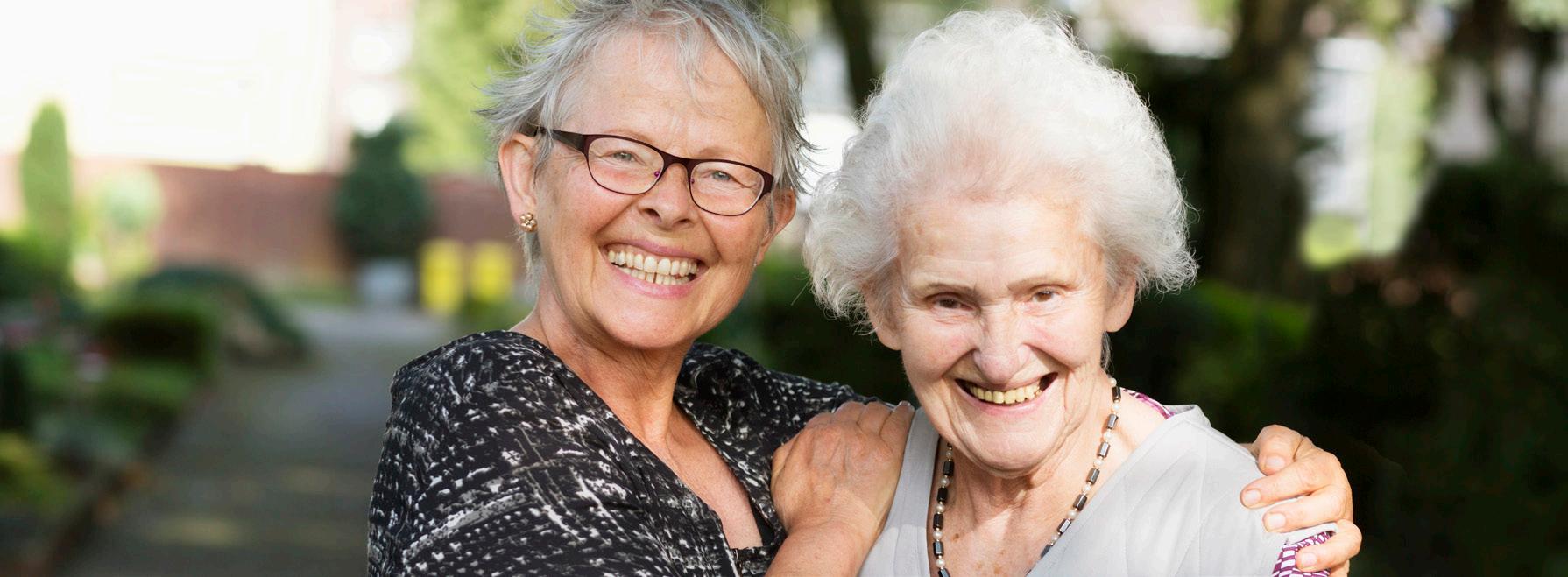
The masterpiece that is your life is a gift to those you love, but above all, a gift to yourself. With a brushstroke upon the canvas of each new day, let this painting be the work of art that is your life, a work that expresses the beauty and substance of a life well-lived, unfolding before your very eyes.
Every one of us are living, breathing works of art, sculpted by our beliefs and experiences. And what is art but simply the expression of the human experience in whatever form it may take?
Consider this: The more days we live joyfully in the moment, the more days we have. Life, in reality, is not linear, but existentially unordered and unconstrained to all possibilities at all times. Our lives are simply operational perceptions based on cultural norms, beliefs, and attitudes. Everything we believe, hold to be true, and consent to represents our state of consciousness. And it is our state of consciousness that informs and drives our moment-to-moment life experience. In its simplest realization, aging is both a state of mind and a state of being. As such, this is an exciting time for new realms of exploration of what our lives can be, literally, and a time to reimagine ourselves.
It is said that the third act involves reinventing oneself. I have found it to be more a process of spiritual evolution and self-transformation, a limitless exploration of what represents meaning and purpose for me at this point in my life. As a photographer and writer, I feel so blessed because these (CONTINUED ON PAGE 38)
ESSAY AND PHOTOGRAPHY BY BRUCE W. HEINEMANN
“THE GREATEST GIFT YOU HAVE TO GIVE IS YOUR OWN SELF-TRANSFORMATION.”
LAO TZU
“THE CAVE YOU DARE TO ENTER HOLDS THE TREASURE YOU SEEK.”


JOSEPH CAMPBELL
“EVERY PARTICULAR IN NATURE, A LEAF, A DROP, CRYSTAL, A MOMENT OF TIME IS RELATED TO THE WHOLE, AND PARTAKES OF THE PERFECTION OF THE WHOLE.”
RALPH WALDO EMERSON
DEEPAK CHOPRA
(CONTINUED FROM PAGE 36) things I will do until my last breath. There is a saying among serious photographers that the very best image we ever took remains unprocessed in our camera, as our ashes are spread upon our personal sacred ground. So, yes, self-transformation for many people might not be so obvious and perhaps a little more of a challenge than it is for me, but at the same time, through technology and more importantly the cultural/societal awareness of the process of aging, there has never been more opportunities and support in so many ways to help us with that selftransformation. As such, this is, in many ways, a golden era of joyful, creative aging.
Heretofore, it seems that so much of our identity is a culturally based concept of time. Deepak Chopra observes, “Aging is a shared illusion that everyone falls for, and once you are taken in, you have no choice but to age, simply because everyone else is. To make aging a blissful experience, the secret is to abandon aging altogether, which means abandoning time. Do this and you discover the bliss that is accessed in the timeless. It’s never too late to imagine a body that does not age.”
Thus, the concept of aging expands into an entirely new awareness when we endeavor to live in the present, for the now is the only location that is timeless.
When seen in the broadest context, our concept of aging is most often a conditioned response, a habit of thinking and behavior, when physical and mental decline is inevitable.
Or as author Richard Bach wrote in his best-selling book Illusion, “Argue for your limitations, and sure enough, they’re yours.” So what should we do? Let’s not argue in favor of our negative and outdated beliefs on aging. If we understand that we are fundamentally pure, light energy, we must then know that our life force does not age for energy does not age. It may well be that the paradox of aging is that by changing our state of consciousness relative to aging we, in fact, can grow younger.
What good is our life-extending technology if our consciousness of aging well is not well out in front of those external life extenders? In other words, the issue is almost always quality of life, which I like to more appropriately refer to as “our evolving meaning of life.” To that point, it is my unshakable belief that “life that is not growing is life that is dying.” As such, how can we continue to paint our life’s masterpiece if we are not in fact growing, becoming in the moment, ever better and more expressive painters of our life’s canvas?
Bruce W. Heinemann is a fine art landscape photographer, author, publisher, multimedia producer, and speaker. For more than 35 years he has published branded fine art landscape calendars for Fortune 200/500, regional, and local companies. He has created nine coffee table books, two published by Barnes and Noble. One, The Nature of Wisdom, became a best-seller. He won the 1993 Virginia Merrill Bloedel Award (Bainbridge Island, Wash..) given to individuals for their contribution to the welfare of nature. His speaking presentation is titled, “The Nature of Life and The Fine Art of Living.”
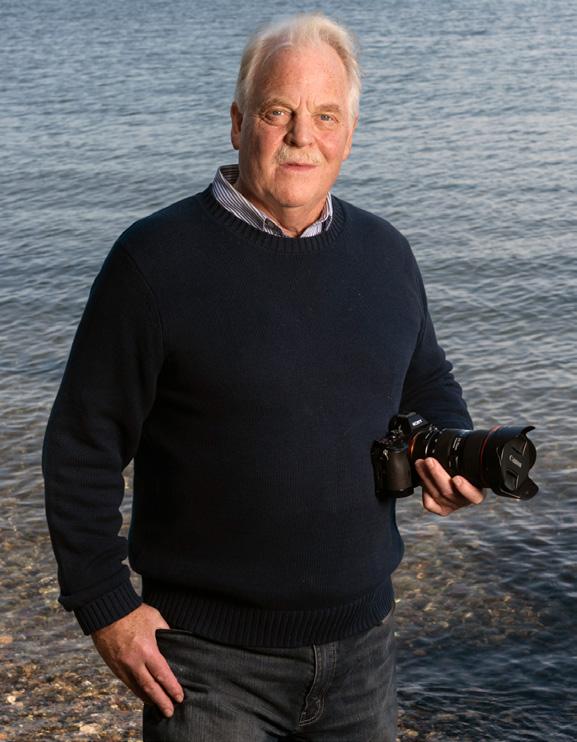
Therefore, let us embrace the joy and excitement of looking forward to our next accomplishment, whatever we choose that to be, sending our grandchild an art piece of our own making as a birthday gift, starting an online business, taking that longplanned trip abroad, writing that book you’ve been thinking about for years, weeding your potted plants, reading a new book, or planning a lunch with friends. Aging then is not an end, it’s a path into the future. And when it is time to pass, it will be on the path to that eternal journey.
Perhaps the best part of beginning each day is the realization that our life’s painting is not done, and it is this new day in which we may add another brushstroke to that masterpiece that is our life. Thus, with each new brushstroke, may we be joyful that we shall always live on in the smiles, laughter, and fondest memories of those we loved and who loved us.
Lastly, although it may seem mere semantics, I try to live my life knowing and feeling that there is a world of difference between getting older and living longer. For it is in the living longer that we may find our own unique and meaningful way to live fully in the present, and that is, indeed, the fine art of aging.
“TO MAKE AGING A BLISSFUL EXPERIENCE, THE SECRET IS TO ABANDON AGING ALTOGETHER, WHICH MEANS ABANDONING TIME.”
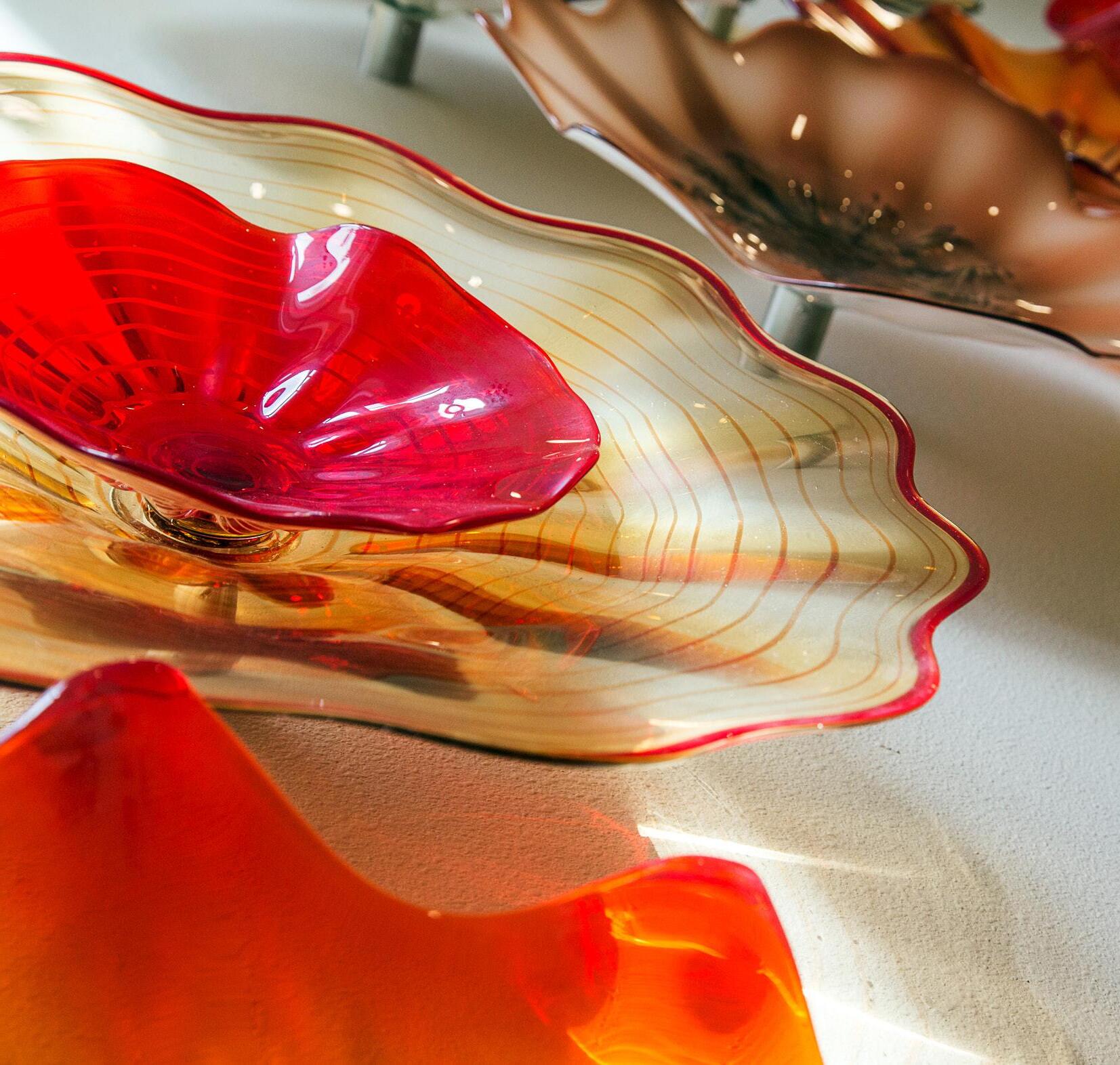 BY SUE ROWELL
BY SUE ROWELL
I’ve been involved in the arts, in various forms, my entire life. I’ve performed with the Seattle Junior Symphony and the U.W. Marching Band, I’ve sung at Carnegie Hall and Notre Dame, I’m a published author, and I’ve been dancing through life. I like to think that I’m aging artfully. But you can describe ‘artfully aging’ in many other ways, not just being involved in the arts. In fact, artful could be described as clever, skillful, cunning, or creative.
At Quail Park of Lynnwood, residents age artfully by participating in events that they enjoy such as seated Yoga and Zumba classes, one-on-one
training with our Certified Personal Coach, water aerobic classes, live musical events, trips to local casinos and theaters, educational speakers, card games, book club, church services, and so much more! “It’s fun!” is how one person described artful aging at Quail Park.
I also think of health when I think of aging artfully. If we’re not in good health, it affects us in a myriad of ways that hinder our ability to age well. Pain can cause us to be sad and grumpy. An inability to perform the tasks we did when we were younger can cause stress and fear. Lack of socialization can cause poor nutrition and depression.
In a senior living community, such as Quail Park, there are opportunities to alleviate those health issues that hinder artful aging.
Medical staff is available to help with pain management and everyday tasks, great neighbors are there to socialize with and talk to about life. I can actually hear a couple of residents outside of my door right now talking about upcoming medical appointments, family dynamics, and what they’re planning on eating for lunch today. Pizza cooked in our in-house pizza oven sounds great!
If you’re looking for new ways to artfully age, visit Quail Park of Lynnwood and check out how we do it! We’d be happy to share some ideas and would love to have you join us for an activity, an event, and/or a meal in our dining room. Hope to see you soon!
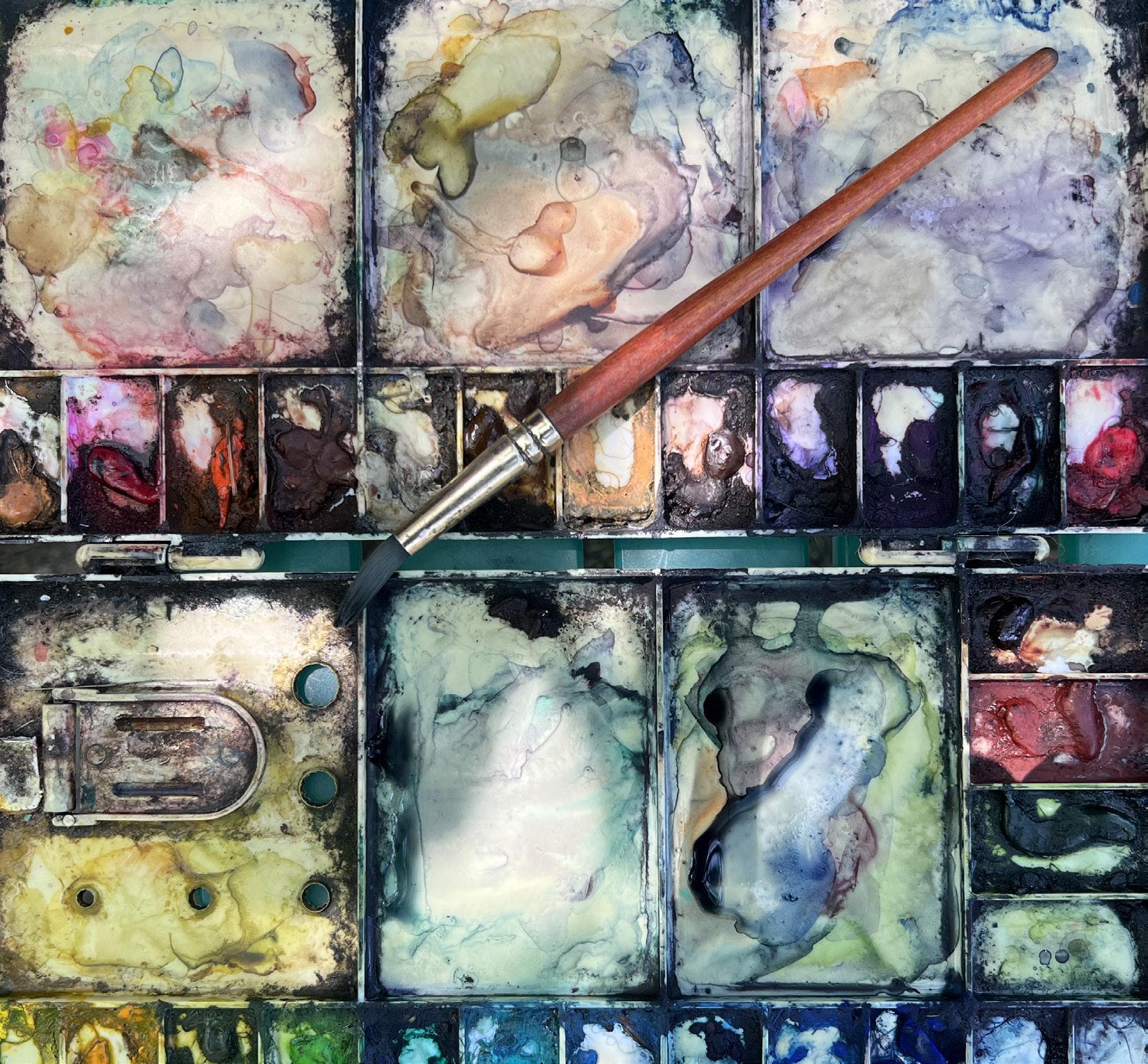 BY CONNIE McDOUGALL
BY CONNIE McDOUGALL
She outraced Yosemite wildfires on foot, crossed sketchy rivers, felt her way down the side of a Norwegian mountain through cold, dark rain.
Indeed, Cecile Disenhouse and her husband “Mountain Man Dave” Jette hiked with a circle of hardy friends across the globe, with journeys to Peru, Nepal, Iceland, Great Britain, Greece, and Italy, as well as hundreds of treks in the Pacific Northwest. And often, she packed her carefully curated watercolor kit—no more than one pound—to pause in the wild. To sit and look. And then, to paint.
Friend and fellow hiker Toby Kramer says that Disenhouse’s painting pitstops meant there were built-in layovers. “We would be in these awesome places, smelling the mountain air. We’d take a break and everyone else had a book to read but she would paint.” He recalls her legendary love of jokes on the trail. “Cecile and I share our Jewish background and our jokes,” he says. “She always laughed at mine, even if she heard them before.”
In addition to leading friends on
hikes, the couple also hosted epic boardgame parties and played a mean game of bridge. But those halcyon days changed forever in January 2022 when Dave—master outdoorsman, worldclass physicist, and proud Eagle Scout— succumbed to a long illness. “Cecile was an amazing partner to Dave, always supportive. They were such an integral unit,” Kramer says. “I couldn't imagine how she’d go on without him. But she has.”
“I realized how lucky we were to lead the lives we had,” Disenhouse says about the man she met on a hike in the 1970s, a love-at-first-sight, life-altering event. “He was a real brain, a lot of fun, and easy to live with,” she remembers. “Dave was politically active all his life, going to the South to register voters in the 1960s. A very decent man. Noble, I guess you could say.” She pauses and adds, “I had 44 years with him. No complaints.”
So, the artist gets on with it as best she can, volunteering at Seattle’s Lifetime Learning Center, as she has for the last eight years, teaching two watercolor classes a week during fall, winter, and spring sessions, as well as plein air (outdoor) lessons in the summer. A mentor to dozens of students who have taken the class, Disenhouse is a favorite. “She is so beloved. We have many repeat students who come back year after year,” says the center’s director Marilyn Spotswood. “I hear wonderful things about her and the class, which usually sells out.”
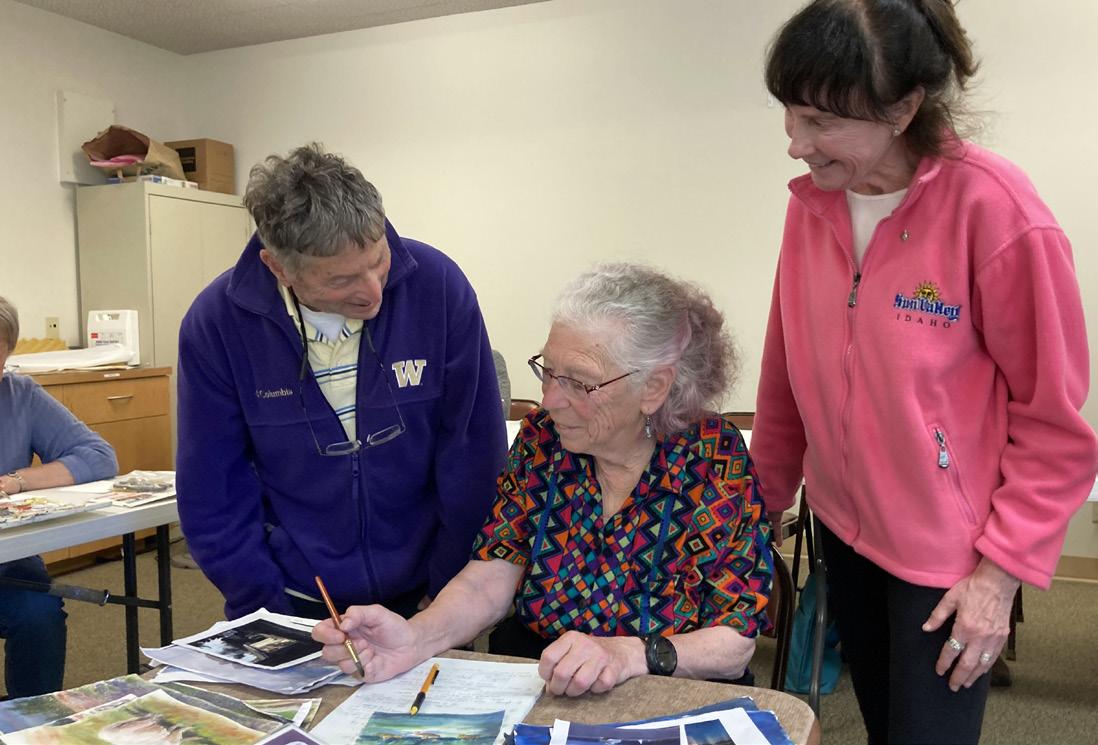
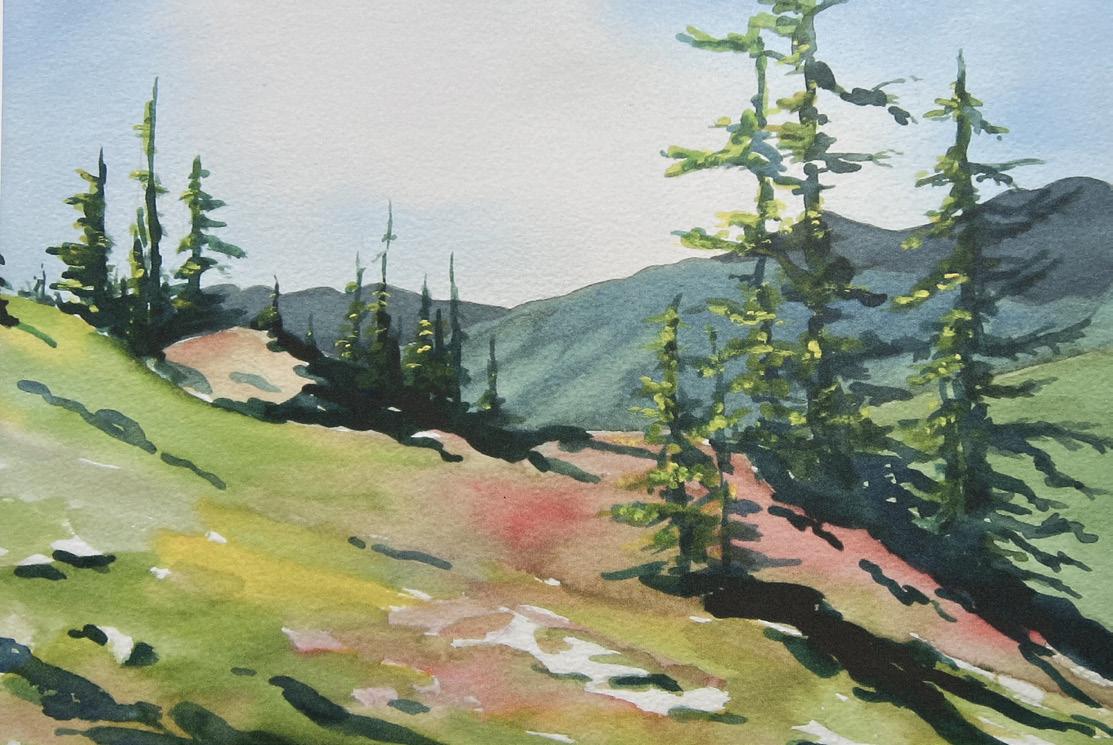
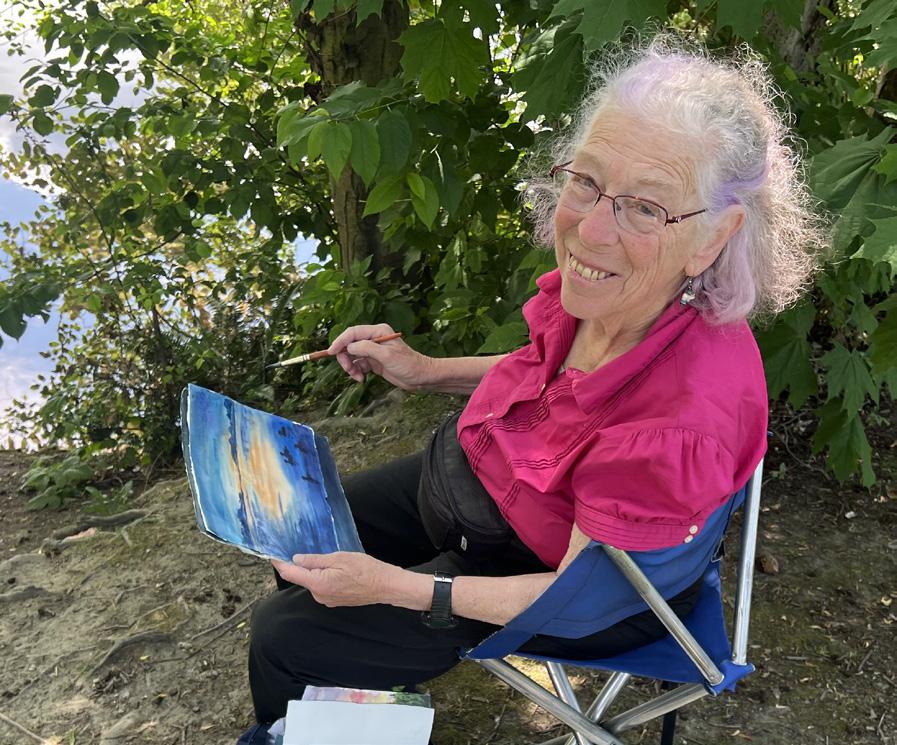
One of those repeat students is Mark Rosenblum. “There’s a real esprit de corps,” he says. “I like how kind people are. Cecile circulates around the room, offering positive comments and suggestions. She’s very deliberate, respectful, and well-prepared.”
Vicki Goldstein Seznick has studied art over the years, and as a
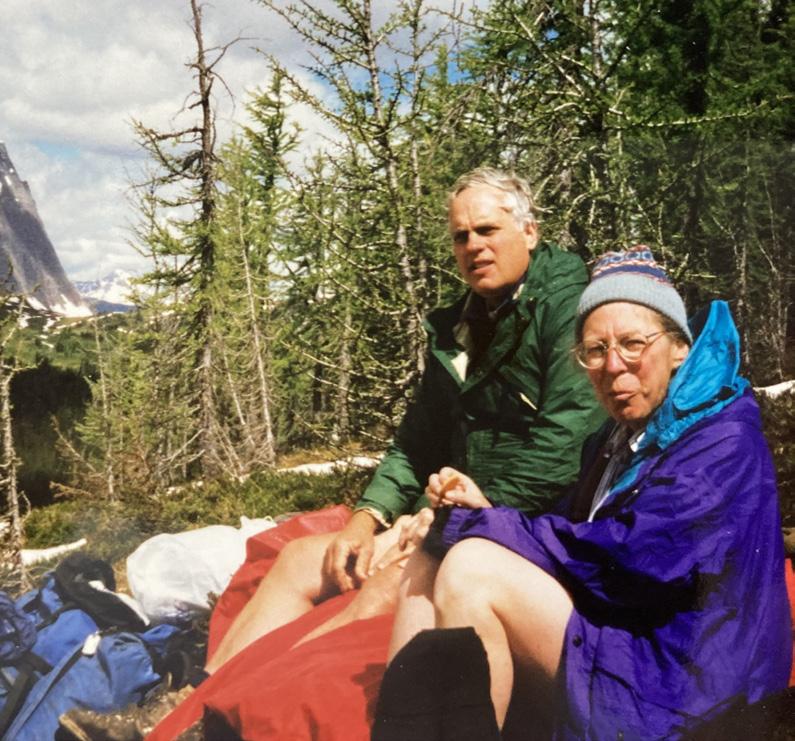
former professional makeup artist, she appreciates the gentle guidance Cecile provides. “She always tries to raise students to a higher level of ability,” Goldstein Seznick says. “My style is to work small and detailed, and Cecile encourages me to explore a bit, try painting a little looser. Plus, I’ve made friends in her class. A number of us play pickleball together.”
“I’m glad Cecile doesn't teach painting like she plays pickleball,” Mark says, with a laugh. “She’s pretty aggressive, with a serve that’s hard to return. She’s athletic, with fast reflexes.”
She’s also utterly intent on the game, he notes. “Cecile always knows the score when nobody else does.” Playing pickleball at least three times a week,

Disenhouse finds the game gives her time off from thinking. “You can’t be anywhere else but focused on the play,” she says.
All that intensity might have something to do with her roots. Born 79 years ago in Manhattan, the daughter of a Polish father and Canadian mother, Disenhouse grew up in the Inwood neighborhood at the northern tip of the island. “Cecile does have that New York personality,” says Spotswood. “My husband is from Brooklyn so I recognize it. I remember the time Cecile came to one of our lunchtime presentations and she introduced me to her friend by saying, ‘Yeah, Marilyn manages the joint.’”
(CONTINUED ON NEXT PAGE)
(CONTINUED FROM PREVIOUS PAGE)
Attending what was then called the High School of Music and Art, Disenhouse went on to earn a degree in fine art from New York’s City College. But it was technology that paid the bills. “Computers were just coming in,” she recalls. “I took a logic test at an insurance company and they hired me. In those days it was all mainframes with decks of cards.” Although her career as a computer programmer was mostly spent at Seattle’s Group Health, painting remained her vocation. Once retired in 1998, Disenhouse turned her attention to the formal study of watercolor technique with the renowned Northwest artist, Molly Hashimoto. Mastering the challenging medium, her work has been accepted in a variety of juried shows including the prestigious Edmonds Arts Festival.
Teaching watercolor, though, that came as a surprise to her. “Molly mentioned it to me but I’d never taught a day in my life,” she says. Still, she took it on. “I was so nervous. I prepared like crazy and I’m glad for the first class I only had six students rather than 25.”
While the class is framed as an introduction to watercolor, in truth, student skills range from beginner to accomplished, with each session focused on a specific subject,
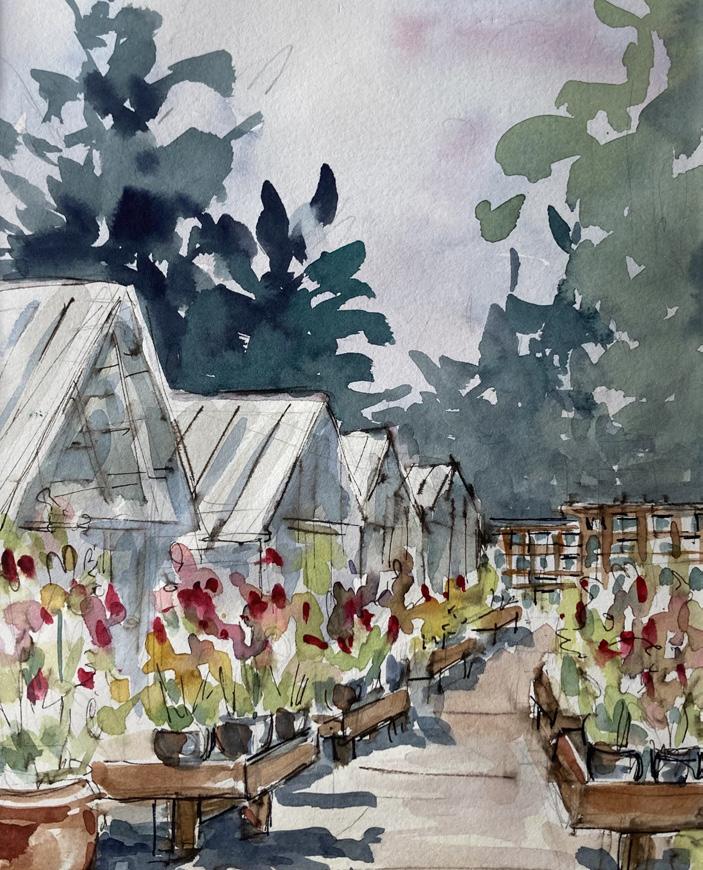
including washes, ink with watercolor, and perspective.
Sitting at a card table surrounded by students, hair tinted her favorite color of purple, Disenhouse goes over lesson concepts and offers a brief demonstration.
On the table are copies of paintings that illustrate the ideas covered, which students pick from. Then they try their hand at reproducing the work, a method of learning used for centuries: First, copy the masters. “Asking a beginner to come up with an original only leads to frustration,” Disenhouse explains. “But when you copy a work, all the decisions have been made for you—composition, color, perspective— so you can concentrate on the skill at hand.”
She reflects on what keeps her coming back to the classroom. “I want to help people learn to do a decent painting. Anybody can improve and learn. It just takes work and discipline.” Even so, her approach is lighthearted, which is why she tells students not to get overly invested in a single painting. Disenhouse once said that you don't get second chances with watercolor— you have to do it right the first time. Reminded of that observation, she decides that, actually, you do get another chance. As many as you want. “All you do,” she says, “is turn the paper over and start again.”
See examples of her work at www.disenhouse.org.



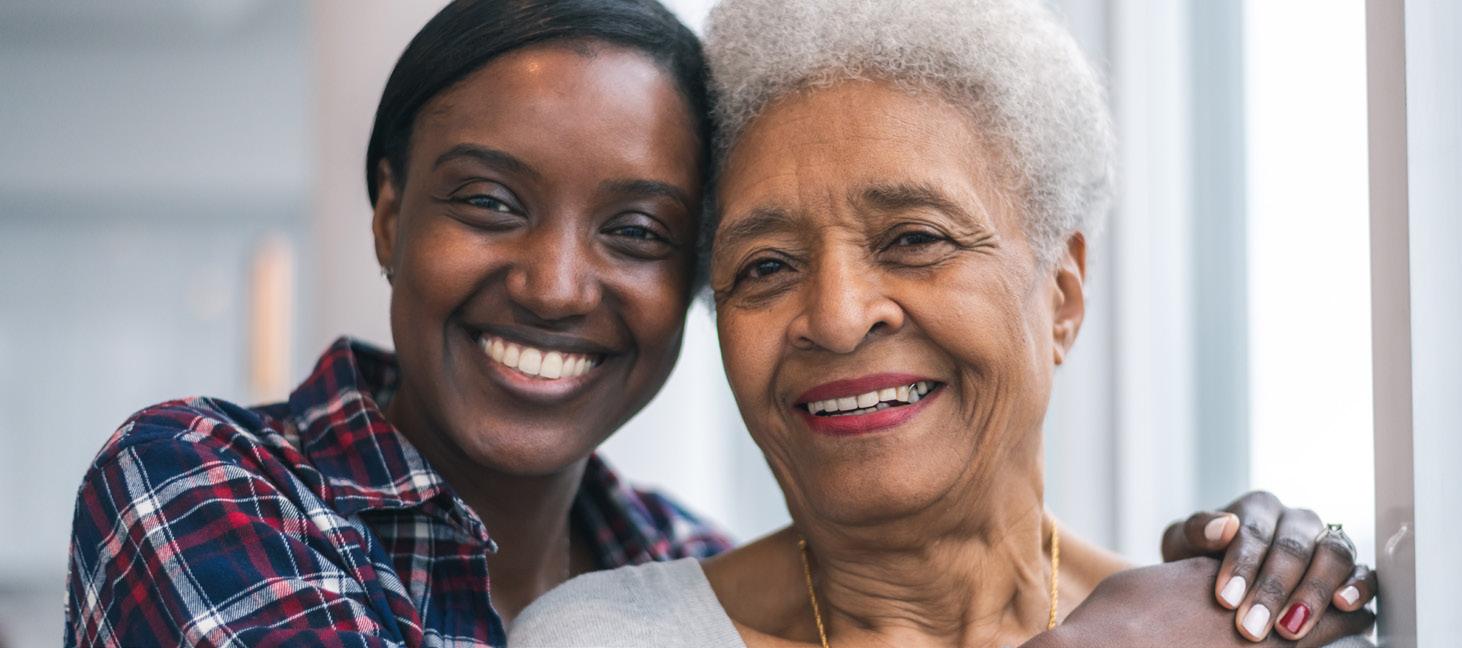
Julia Cameron wears many hats. She’s a playwright, artist, poet, musician, author, mother, grandmother, former Rolling Stone journalist, and ex-wife of director Martin Scorsese. When her marriage to Scorsese ended over his affair with Liza Minnelli and Cameron’s subsequent decline into alcohol and cocaine, she spent the next 15 years reclaiming both her creativity and dignity, before parlaying her recovery into a 1992 international bestselling book, The Artist’s Way.
Now 75, she continues to pen fiction and nonfiction books, produce videos, and teach workshops about the creative process. The tools she developed for her seminal publication have been adapted into volumes designed for parents, writers, workers, and weight loss. And while those audiences are an eclectic bunch, they reflect Cameron’s own life stages. At age 69 she authored, It’s Never Too Late to Begin Again: Discovering Creativity and Meaning at
 BY ANN RANDALL
BY ANN RANDALL
Midlife and Beyond. “I found my justretired students the most poignant. I sensed in them a particular problem set that came with maturity,” she explains in the introduction, before leading readers through 12 weeks of activities to transition out of an occupation and empty nest while “rejuvenating the
creative spirit when suddenly branded a senior citizen.”
I’d taken an Artist’s Way course in the late 90s. Back then, finding time to add Cameron’s recommended activities to a hectic work schedule and single parent life seemed impossible. But now mostly retired and hoping to ignite some midlife creativity, I joined 300 participants this summer for an online Cameron-led workshop.
After 31 years of field testing, Cameron is prescriptive about the Artist’s Way practices and well supplied with midlife examples and supplemental activities. Her four basic tools—what she calls “the bedrock of sustained creative life”—felt doable this time around.
The Morning Pages daily writing activity gets kudos from celebrities, business people, and creatives who say it’s a transformative practice. It
seems simple on its face. Each morning, within the first 45 minutes of waking up, write three full one-sided pages of whatever comes to mind. Cameron jumps starts hers with a weather report and quick update on how she’s feeling.
Why so early in the morning? According to Jungian psychology, our self-critic kicks in 45 minutes after awakening, interrupting the stream of consciousness and creating doubts. Cameron has an inner critic who occasionally appears during her morning writing. As a way of dismissing him, she’s named him Nigel and imagines him as a British interior designer with impossibly lofty standards.
Write the pages in longhand. Perceptions are fleeting, says Cameron, and longhand means there’s less chance of missing them. She’s also specific about paper size. Anything smaller than 8.5 x11 miniaturizes thinking, and writing anything larger is too daunting.
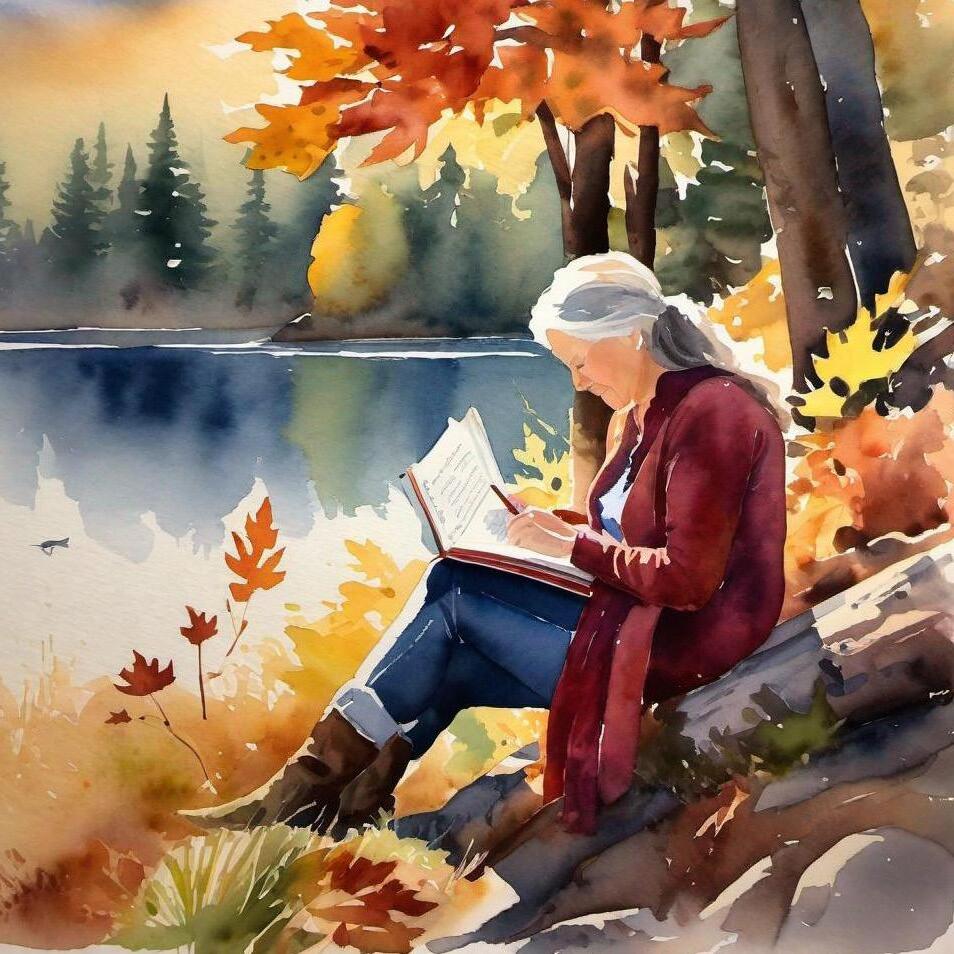
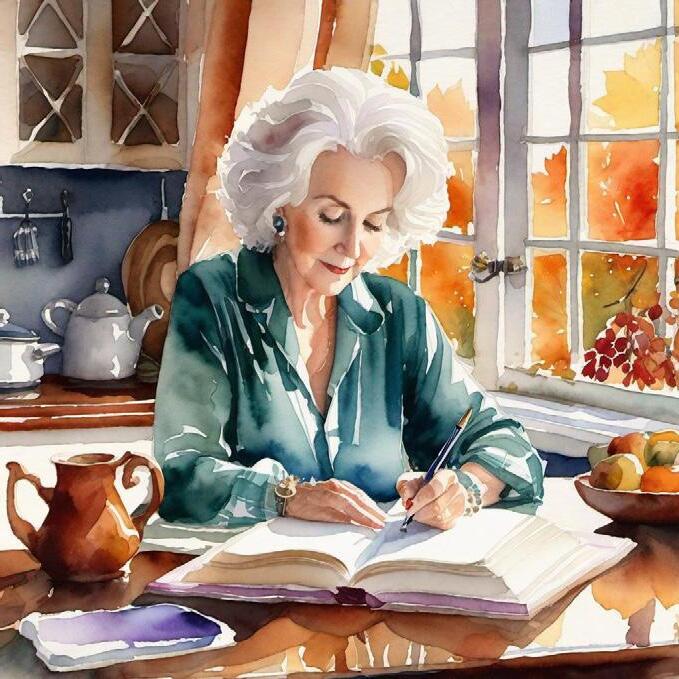
Cameron is insistent about what constitutes solo. Don’t have a companion. Don’t bring your cellphone. “Don’t bring your dog,” she says, “or you’ll end up taking your dog’s walk.” Don’t listen to music or podcasts. And, she adds, the walk should not be your normal run or powerwalk for exercise. If walking is impossible because of a disability or pain, biking or swimming can serve as an alternative.
An Artist’s Way walk has a specific purpose, and her list of don’ts is intended to avoid distractions. Walking for 20 minutes, says Cameron, is a contemplative exercise in receptivity. “As we walk, we notice new things and make new connections that fill the creative well.” It’s true, without my cellphone, my walks have become exploratory meanders. I’ve become far more attuned to birdlife and the growing beaver dam in a nearby stream.
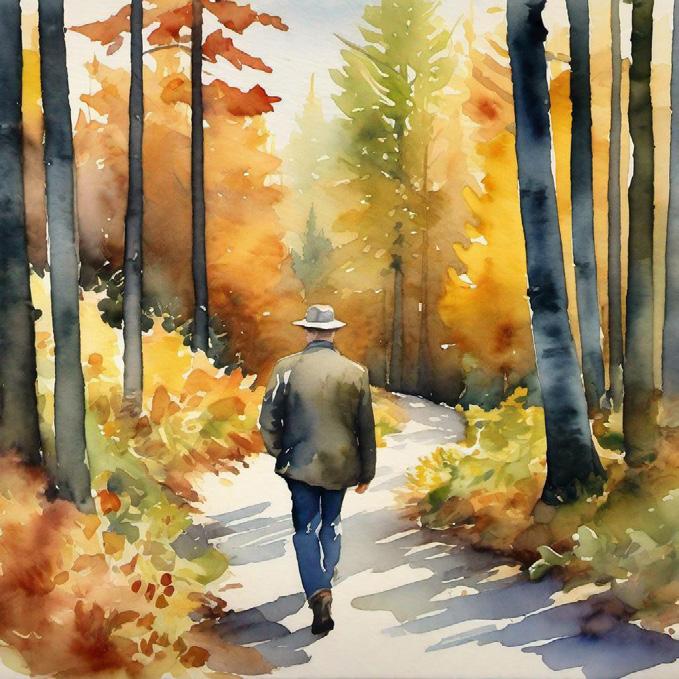
The tool is intended to help regain the sense of play and wonder we had as children. Curious about the new bakery in your neighborhood? Take yourself out for a scone. Borrow a bird book, a pair of binoculars, and get yourself to the nearest park for an hour. Has it been decades since you roller skated? I can attest to how much fun I had trying my favorite teen experience out again, albeit far more tentatively. Think of your favorite childhood experiences and recreate them, she says. But do it alone so you’re savoring them without distractions.
It’s the three pages I find daunting first thing in the morning. Some days I can only eke out a few sentences, but Cameron encourages, saying writing of any length gives a mental jumpstart to the day. Be vulnerable and authentic in your writing, she advises, and above all, do not share your morning pages with anyone.
Cameron describes the artist date as a “small expedition to intentionally enchant or entice you; a weekly hour to woo your creative consciousness.” One of her recent favorites was a trip to a pet store to visit a gray rabbit named George. She’s also fond of the children’s sections in bookshops, botanical gardens, aquariums, and art supply stores.
The fourth tool is unique to her book on midlife creativity. The memoir exercise encourages a life review in multi-year increments. “By revisiting— and reigniting—the many deep, complex, creative parts of yourself and your story, you will arrive at a place of clarity and purpose, a ‘jumping off’ point for the rest of your life,” Cameron says.
The activity asks you to divide your current age by 12 and then consider the 12 discreet life sections by writing or drawing responses to age-appropriate prompts. For the birth to age six section, the questions asked me to recall my favorite toy and a smell I remembered. For ages 55-60, the prompts asked me to describe a source of joy and recall health issues I’d
(CONTINUED ON NEXT PAGE)
encou ntered, mine or someone else’s.
The memoir activity quickly became my favorite because it provided inspiration for the other tools. I remembered how much I loved chocolate covered ice cream bars as a child and turned it into my artist date for the week. I sought out a lilac bush on my next solo walk and inhaled the scent of my grandmother’s perfume, a treasured gift from her when I turned 13. And recollections of my teenage years have found their way into my morning pages.
The popularity of the Artist’s Way books and programs have relied on word of mouth and celebrity accolades, among them the author Elizabeth Gilbert and musicians Pete Townsend and Alicia Keys. But Cameron also has her critics. She admits she comes off as too woo-woo for some, and too conventionally spiritual for others. And
she acknowledges the 12 steps of AA influenced her strongly—her books are designed as 12-week experiences. She’s been accused of rehashing material and language from her 1992 best seller for each new book or video she produces, without regard to the social and cultural changes that have taken place in the last three decades.
For me, the Artist’s Way tools have provided opportunities to engage in solo observation, fun, and reflection as an elder. I’m not going to be writing the



next best seller, but I am better at bird identification and have taken up nature journaling. I’ve created a list of artist date destinations I’m excited to try. My recollections generated by the memoir activity have been fodder for family gatherings. I suspect that’s the kind of creativity Cameron is suggesting.
An Internet search will turn up plenty of excerpts, videos of Cameron’s tutorials and free book downloads should you want to try out the Artist’s Way tools. Even ex-husband Martin Scorsese has found value in the activities, writing in a blurb for one of her book covers, “This is a book that addresses a delicate and complex subject. For those who will use it, it is a valuable tool to get in touch with your own creativity.”
Ann Randall is a freelance writer, organizational consultant, and independent traveler who loves venturing to out-of-the-way locales. She writes regularly for 3rd Act, Northwest Travel & Life, West Sound Home & Garden, Fibre Focus, and Dutch the Magazine.
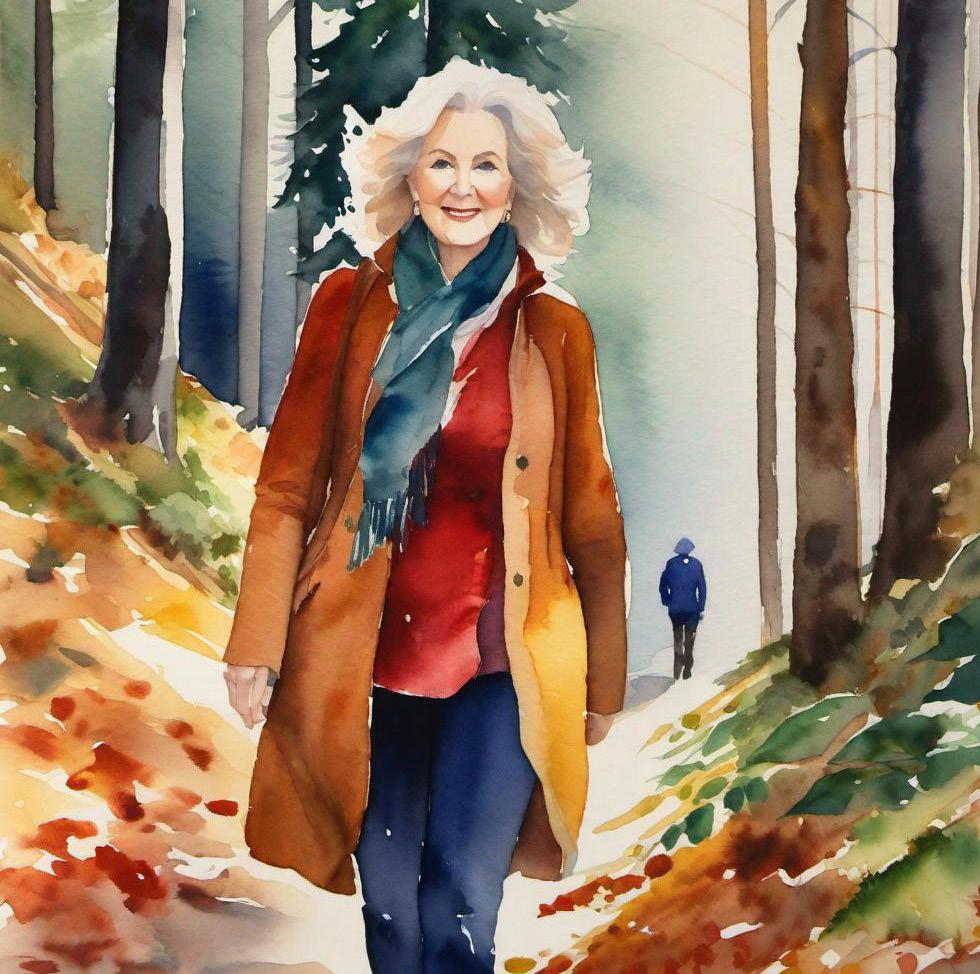















 BY JULIE FANSELOW
BY JULIE FANSELOW
This summer, I moved into the smallest apartment I’ve ever had. My 187-square-foot abode has one little sink that serves both my micro-kitchenette and the tiny bathroom, mere steps away.
A twin bed came with the apartment, and I sit on its edge to eat at a vintage typewriter table just big enough for a placemat.
A pair of windows bathe my corner unit in natural light and fresh air, my most prized amenities. I’m down to about two dozen books, my clothes take up less than three feet of space, and I have exactly two bowls and three plates (but I don’t really need that many). Although I hung onto my simple stick vacuum for now, I sometimes use a lint roller to do the job.
Oh, and I just turned 62. Some of my new neighbors are older like me, here because they’re in transition or this is the only place they can still afford in Seattle. Others, just getting started in their adult lives, see this as the means to an end— and a beginning. For me, it’s all these things: A few days after Christmas, I’ll pack a single carry-on suitcase and a tote bag, store what little I have left with friends and family, and wander the world for a few years. Meanwhile, I’m saving $600 a month in rent, most of it going into my travel fund.
This is the most portable life I’ve ever had, far more so than in my 20s, when I hauled a big stereo, crates of albums, and boxes of books from place to place. I’ll admit it was a little painful to give up some things in my final round of downsizing—the small hand-painted chest of drawers I
bought half a lifetime ago is one example, a favorite but faded mid-century armchair another.
In the end, though, it’s all just stuff. Most of us own too much stuff—and it’s owning us, too, weighing us down physically, financially, even spiritually. Our homes are crammed with possessions, and about one in five Americans rents a storage unit, according to Yardi Matrix, a commercial real estate information clearinghouse.
Yet none of us will be here forever, and someday, someone is going to have to deal with our stuff if we don’t get around to it while we’re still around. If you’ve reached a time in your life where you’re ready to lighten up, here are a some ways to get started:
Have a goal or two. Do you yearn to travel? Do you seek to spare family from having to deal with a mound of material goods once you’re gone? Maybe you want to spend less time and money maintaining a big house.
Know that it’s OK to go slow. I’ve done my downsizing over multiple moves over many years. What’s important is to begin and keep at it. As Courtney Carver, author of Soulful Simplicity, writes, “One thing at a time. You didn’t clutter up your home overnight and you aren’t going to become clutterfree overnight.” (CONTINUED ON NEXT








Having a goal can help you simplify. Mine is traveling the world, staying a month or more in many places, taking only what I can carry.
There are places to consider beyond standard choices like Goodwill and the Salvation Army.
• Seattle ReCreative (https://www.seattlerecreative. org) accepts supplies for arts, crafts, and classroom use. Habitat for Humanity ReStores (https://www.habitat.org/restores) take hardware, furniture, appliances, and more, with some free pickup of large items.
•Search online for upcoming shredding events and tech recycling opportunities near you; many banks and real estate offices offer them several times a year. Ask local homeless shelters what they need such as travel-size toiletries, paper goods, blankets, and warm clothes that are often in demand.















• I’ve stashed books in Little Free Libraries and shared items via a local Buy Nothing group (check listings on Facebook.) I’ve even used the sidewalk “free” method a time or two—but only for things that I’m pretty sure will be picked up quickly, without becoming neighborhood blight. You could use major online tools like eBay and Amazon to sell your stuff to private buyers, but with package theft on the rise, I’ve found it’s not worth the hassle.
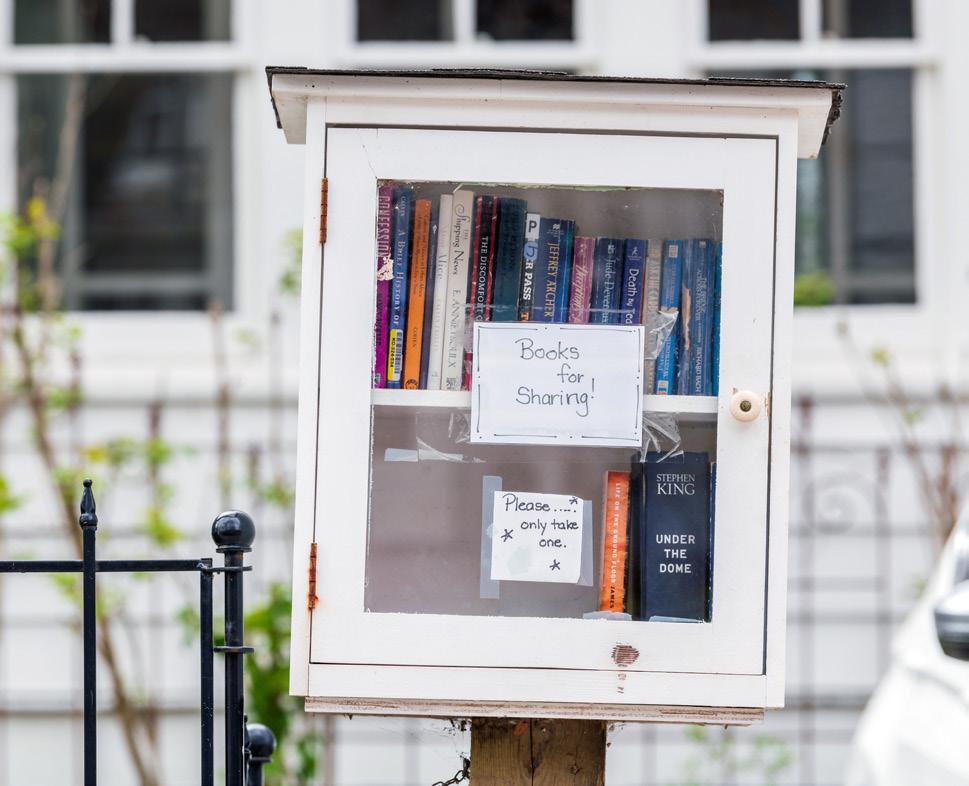
It’s not all that hard to live in less than 200-square-feet. A tiny sink is the main drawback.
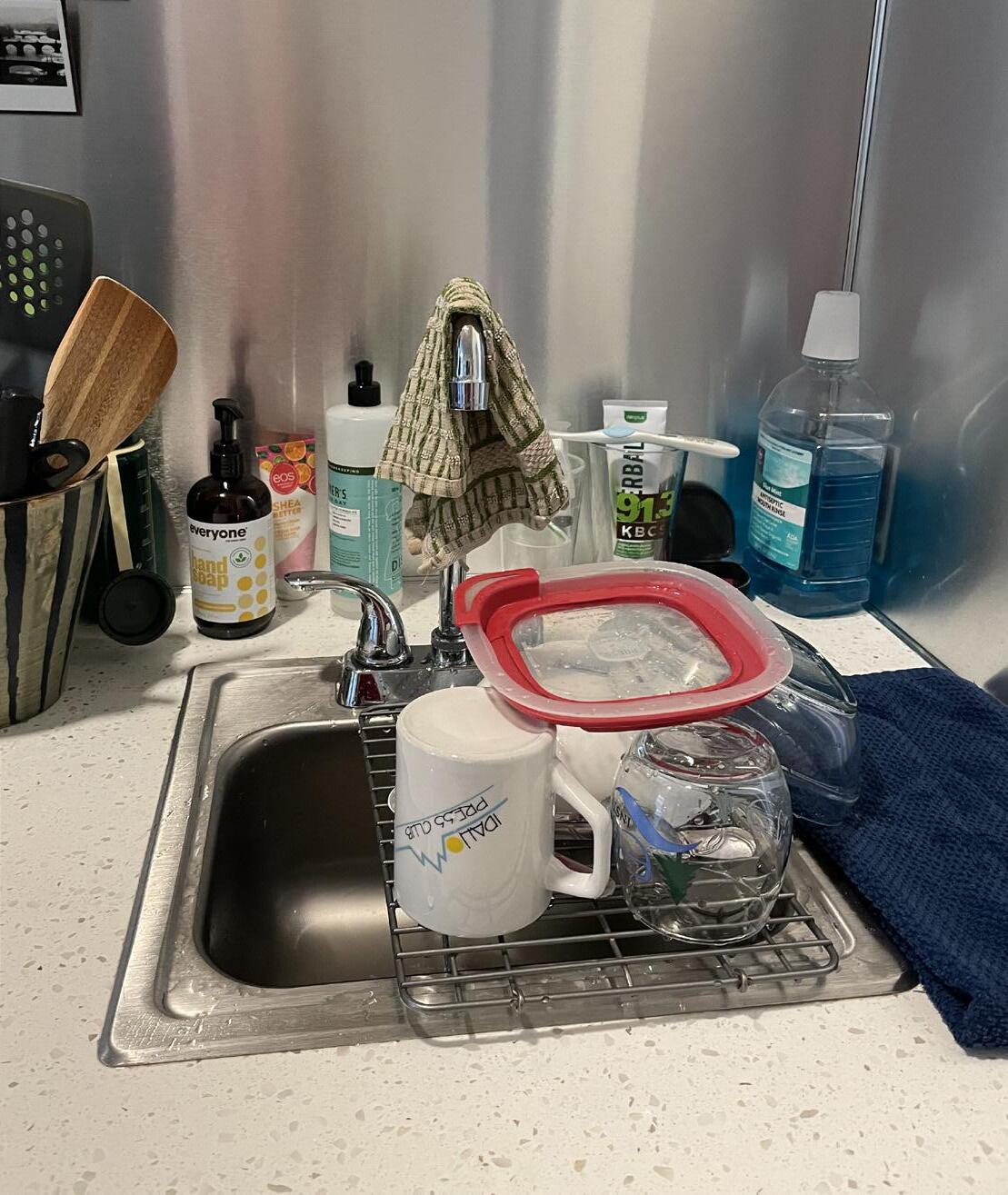
Abandoned hobby supplies. You don’t need to toss these things in the trash (see the sidebar for ideas on where to take them.)
Living with less doesn’t mean nothing. What possessions hold the most meaning for you? These are your “keepers.” Curate a small collection of things that spark memories—and yes, joy. Hang onto things you will display, wear, use, and enjoy rather than stow in boxes.
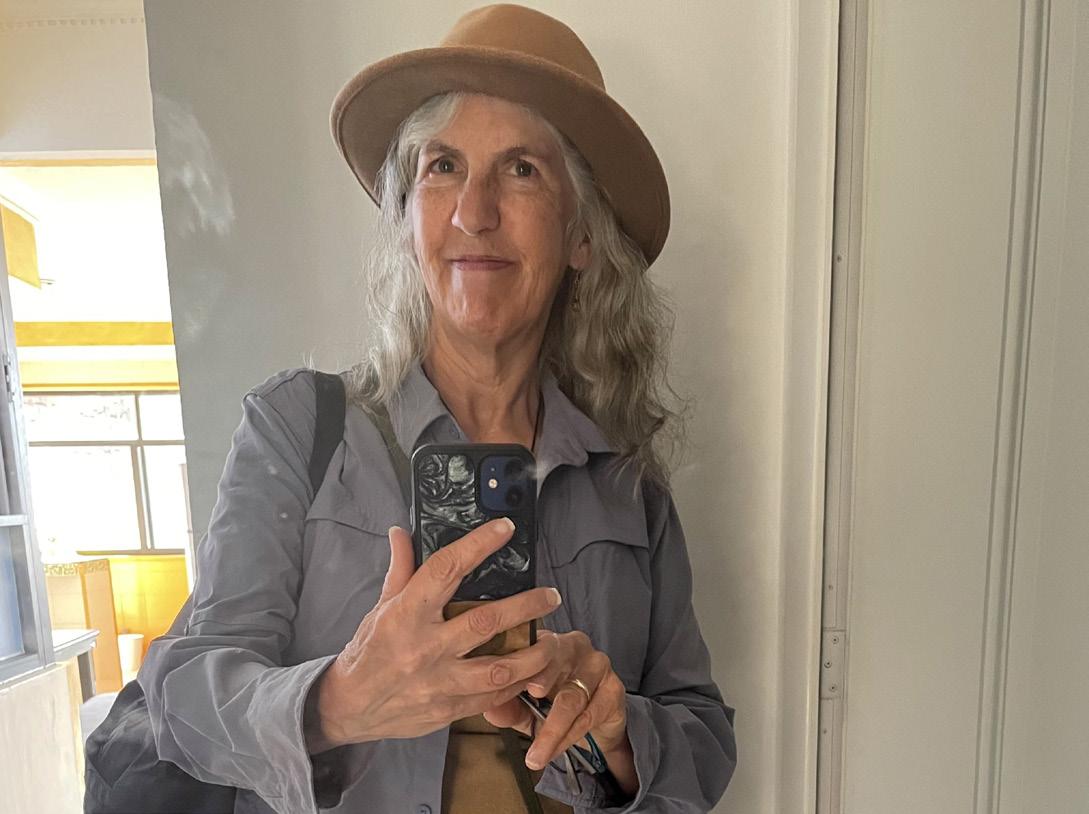
Ask for help. I made plenty of Goodwill runs but I gratefully paid to have a last load of big and unwieldy items
hauled away. If you envision a major downsizing project, it may pay to hire a professional organizer. Many senior communities offer expert assistance in this area, too. Involve family and friends. When my husband died five years ago, I brought some of his many treasures to his memorial service and invited people to take something to remember him by. My sister in tooyoung widowhood, Katherine, asked her husband’s family to visit and help her sort through the decades of his active outdoor life. “With laughter and tears, we have remembered and have made new memories,” she reports.
If your adult children have stored things at your place, the

upcoming holidays may be a good time for them to take what they still want. You may also want to offer a few things of yours for them to have now, while you’re still around and can tell the tales behind the objects, but don’t be offended if they say no.
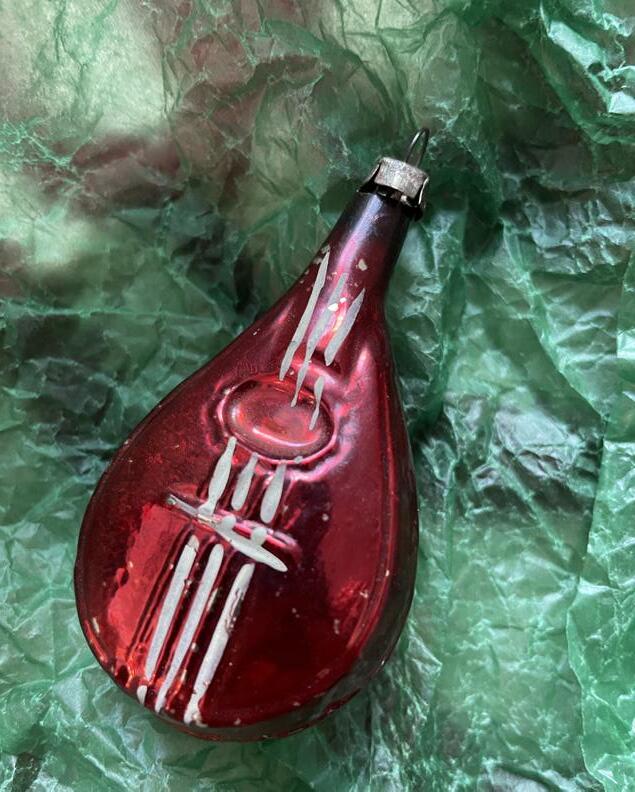
Photos may be enough. Before my most recent move, I bid farewell to some cherished things great and small, from a beloved-but-chipped antique Christmas ornament to an awesome orange cell phone and blue iPod from the dawn of this century—but not before I took pictures to remember them by.
Move to a smaller place. It may be the surest opportunity and excuse you will get to whittle your possessions and live a simpler-yet-satisfying life. Tastes and needs vary, but you likely could be happy in a far smaller home than the one you have now.
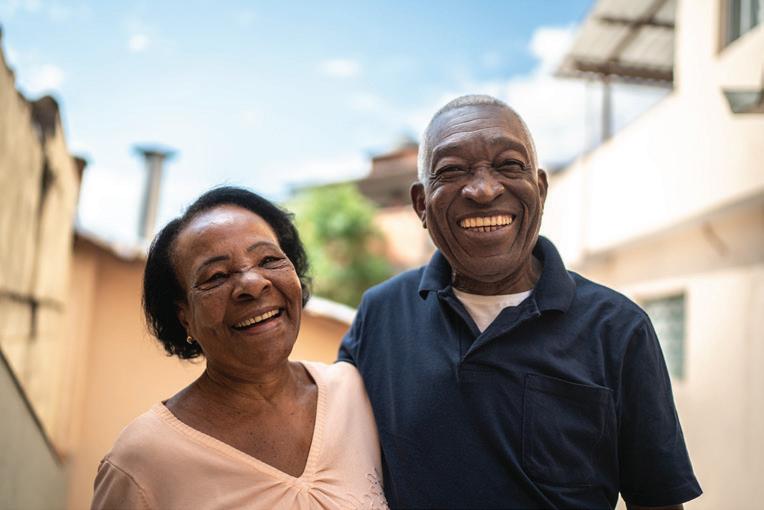
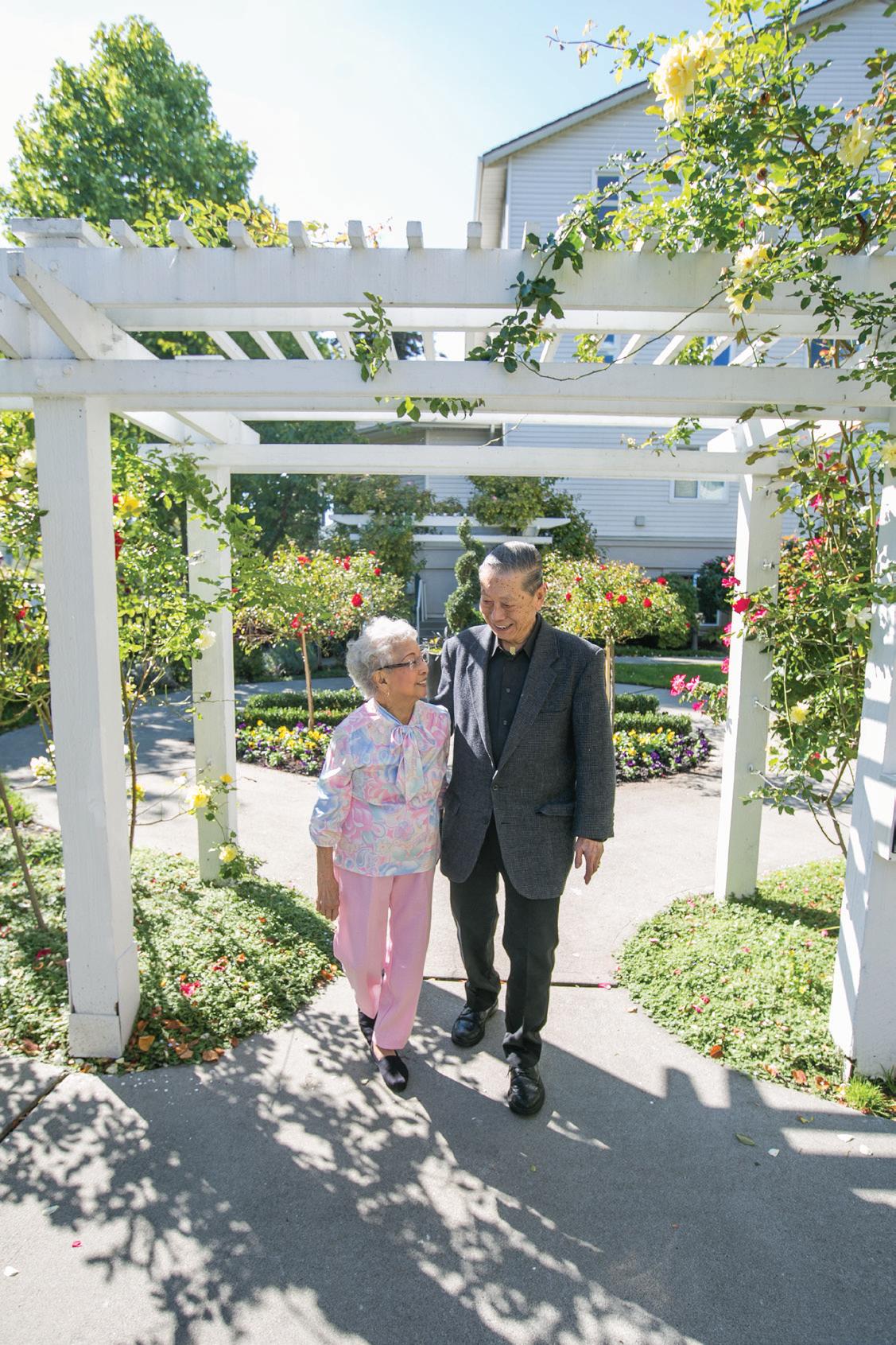
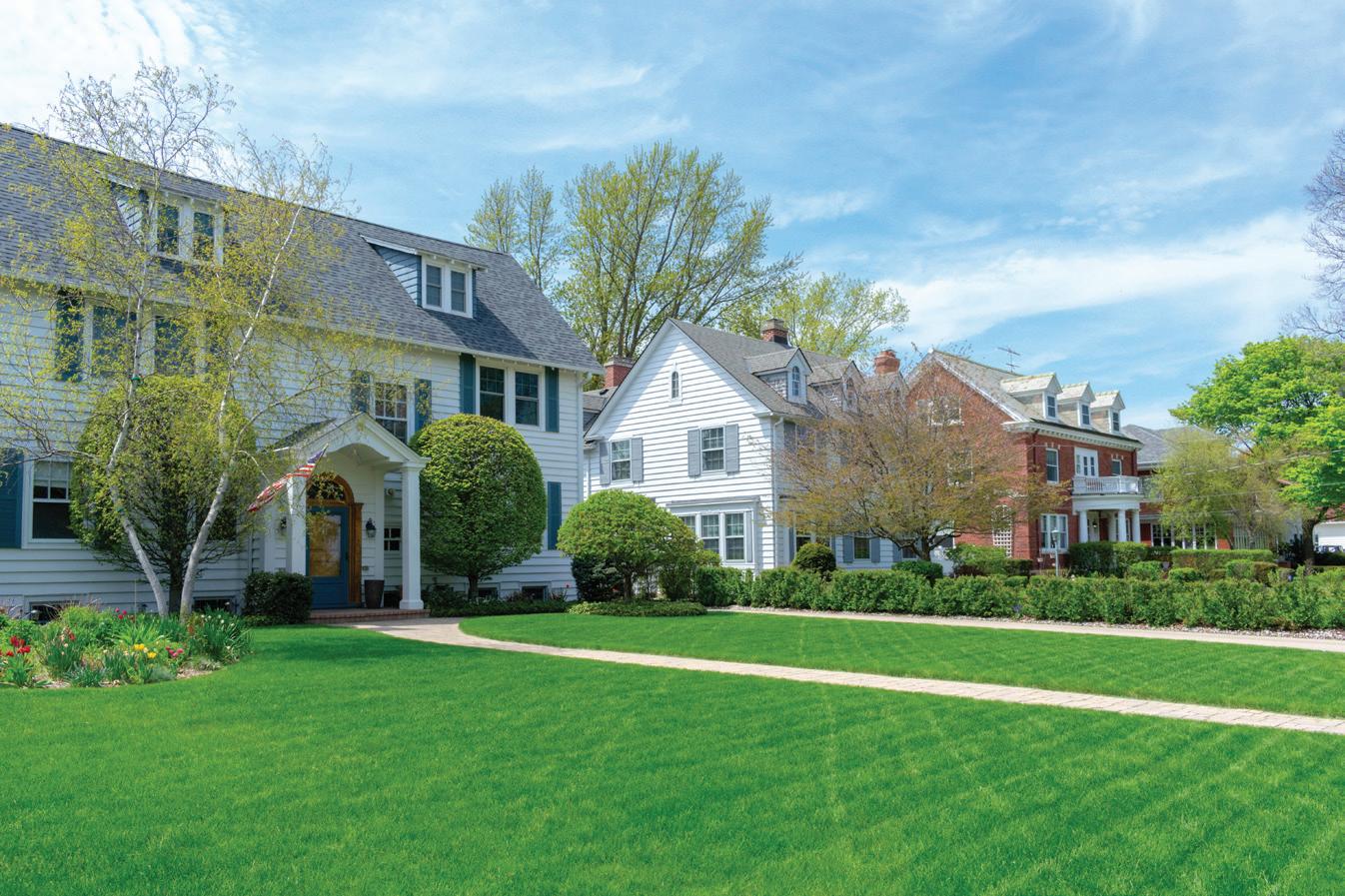
Take time to understand what might work for you. Try some pint-size vacation rentals on for size. For me, about 500-square-feet with a balcony (and two sinks) feels like the sweet spot I’ll seek once my vagabond days are done, and one I’ll start filling … with just a bit of new stuff.

Meet the famous author and the thousands of researchers who want your life to be healthy, happy and meaningful.
BY ANN HEDREENAuthor Isabel Wilkerson is not one to waste words on small talk. “We are warehousing the crown jewels of our society,” she declared, just a few minutes into her keynote address to the more than 3,000 researchers, clinicians, educators, students, journalists, and other attendees at the annual conference of the Gerontological Society of America. We are neglecting “the libraries among us,” she went on. By “libraries” she means living human beings—older Americans whose stories are a part of our history.
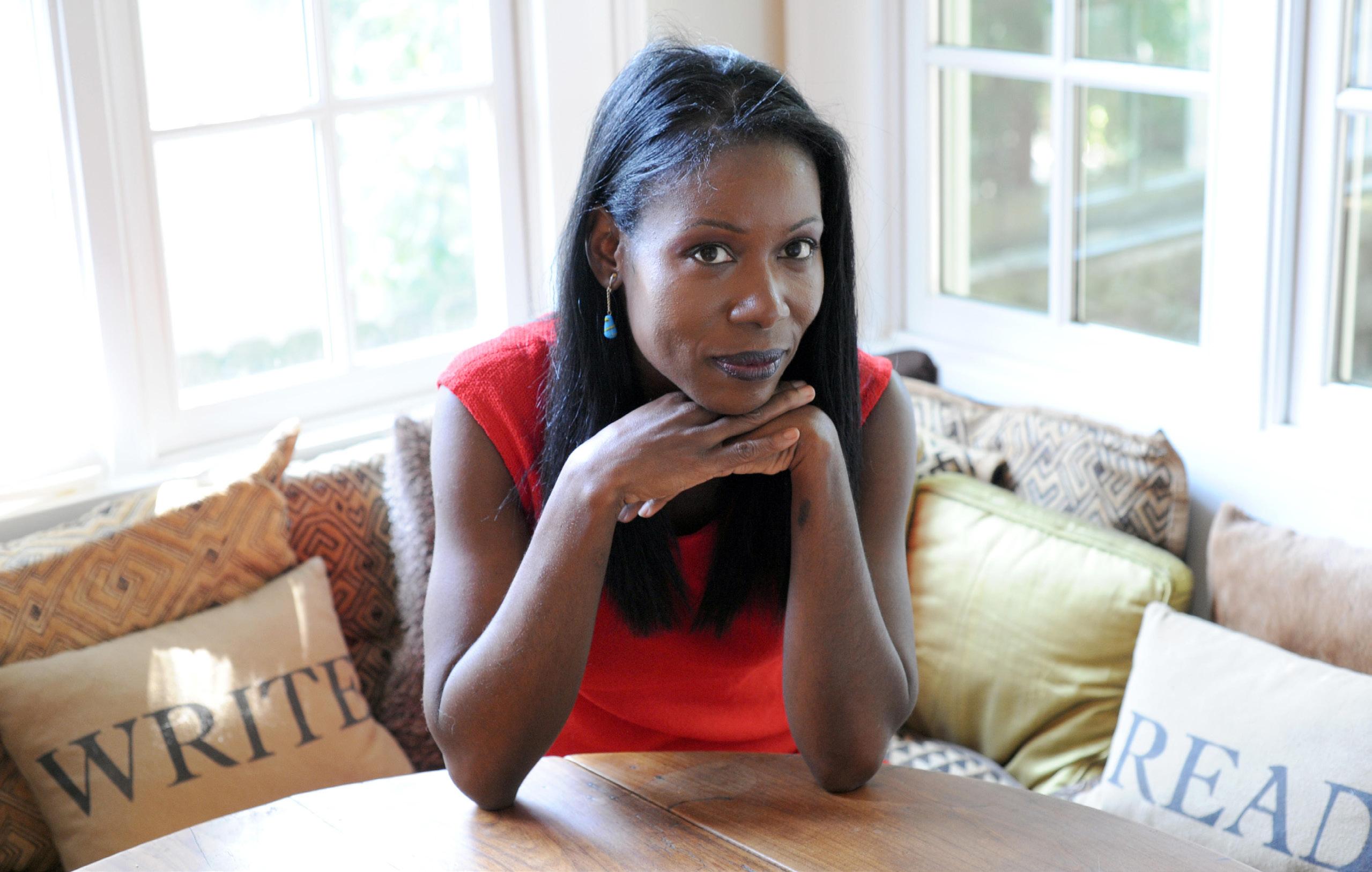
Wilkerson, a Pulitzer Prize-winning journalist, spent 15 years gathering and preserving many of those stories in the course of researching and writing The Warmth of Other Suns: The Epic Story of America’s Great Migration (2010), her sweeping account of the Great Migration of six million African Americans who made the journey out of the Jim Crow South to start new lives in the North, Midwest and West. In the book, she zeroes in on three main characters, unspooling their stories in great depth and detail after hundreds
of hours of interviews. Wilkerson is also the author of Caste: The Origin of our Discontent (2020), a treatise on how racism in the United States is in reality the bedrock of a deeply entrenched caste system.
At the GSA convention, Wilkerson spoke not only of the value the life stories told in The Warmth of Other Suns have had in contributing to the historical and cultural record, but the value those narratives accrued, in the actual telling, for the people who told them. They gave themselves the profound gift of chronicling and affirming the dignity of their own lives.
The Great Migration was not just about resilience—a word Wilkerson hears a lot when people talk to her about her book—it was, she assured the GSA audience, about “human beings who sought fulfilment.” It was about
people who sought and found “self-agency at every stage of their lives,” who migrated to “live the dreams they had for themselves.” It was about people who insisted, against all odds, that their lives had meaning.
As Wilkerson spoke from a giant screen, I took a quick look around the huge ballroom of the Indiana Convention Center in Indianapolis. Though I was briefly disappointed that she was speaking to us live via video instead of inperson, I was already over it, and it looked like everyone else was too. Wilkerson had us in the palm of her virtual hand. And by “us” I do not mean an audience of people over 50, as you might expect at a gerontological conference. Thirty percent of the registered attendees were students. Forty-two percent of all GSA members are 45 or younger.
The young researchers and clinicians who have committed to careers in gerontology, which is the study of the physical, mental and social aspects of aging—as opposed to geriatrics, which is a medical specialty focused on the care and treatment of older persons—understand the urgency of the need for their work. Over the next three decades, the number of adults 65 and older in the U.S. will grow from 561 million in 2020 to a projected 837 million by 2050. The biggest jump will be in the 80+ group, from 13.2 million in 2020 to a projected 30.9 million in 2050. We are living longer. But a longer lifespan does not necessarily mean a longer “healthspan,” as one speaker called it, meaning the amount of your life you spend in mostly good health. And health and wealth are closely tied. With these dramatic increases in the numbers of older Americans will come increases in the number of fragile Americans, many of whom are already struggling financially. One recent study of the 100 largest U.S. metro areas showed that 37 percent of single residents 65 and older are unable to afford their basic needs.
Many of us will be ok. But many won’t.
Which begs the question: Is there a place for storytelling and meaning-making, for all kinds of self-expression, at the funding table—public or private—when basic needs are so pressing?
As a writer and teacher of memoir writing, I wanted to know. As a newly minted Medicare enrollee, I wanted to know. I decided to seek out seminars and presentations that focused on writing, storytelling, really any kind of creative pursuit, to see if researchers could tell me whether there was reason to believe that creativity can contribute to healthy longevity, and to the sense of meaning and fulfilment of which Wilkerson had spoken so eloquently.
Deep in the GSA schedule, I found a symposium titled, “On the Threshold: Creativity in Mid-Life,” which included a presentation on “Arts and Creativity and Their Impact
on Health and Well-Being: A Systematic Review of the Evidence,” by Roger O’Sullivan of the Institute of Public Health in Ireland. The Institute’s systematic review included studies of arts programs in 18 different countries involving more than 7,000 participants, age 50 to 94. What the reviewers found was that arts programs do indeed “advance public health.” Dance, of any kind, scored very high on their multipronged evaluation scale, because it has so many different kinds of benefits: physical, social, emotional, and cognitive (remembering steps). Instrumental music, singing, visual arts, drama, and theater all ranked highly. Writing was not specifically included in the review, though O’Sullivan speculated it may’ve been absorbed into the “visual/creative” category.
Professor Carolyn Adams Price of Mississippi State University has been doing related research into the value of what she calls “serious leisure”—a creative avocation that may have started as a hobby but has come to mean much more, including the desire to share your creative work, be it in a gallery, on stage, or as part of a local festival. Her study of more than 500 creatively active older Americans identified benefits in four areas: calming, a sense of identity, a feeling of connection to God or nature, and recognition from others. By recognition, she meant the pleasure of sharing and community, rather than fame.
Of the three people Wilkerson profiled in depth in The Warmth of Other Suns, she told us that the one who seemed most vibrant, yet content, in late life was Ida Mae Gladney, who was never rich, but who, as she grew old, had gradually become the beloved, unofficial block grandmother in her southside Chicago neighborhood. It was a role she took seriously. She knew everyone, including the drug dealers and the police. “Serious leisure” can mean many things, and this was Ida Mae Gladney’s version. And now she had the added pleasure of telling Wilkerson all about it.
Gladney, who lived to be 91, “lived in the moment, surrendered to whatever the day presented, and remained her true, original self,” wrote Wilkerson. “Her success was spiritual, perhaps the hardest of all to achieve. And because of that, she was the happiest and lived the longest of them all.”
Ann Hedreen is an author (Her Beautiful Brain), teacher of memoir writing, and filmmaker. Hedreen and her husband, Rustin Thompson, own White Noise Productions and have made more than 150 short films and several feature documentaries together, including Quick Brown Fox: An Alzheimer’s Story. She is currently at work on a book of essays. This article was written with the support of a journalism fellowship from The Gerontological Society of America, The Journalists Network on Generations, and the Silver Century Foundation.

Contrary to Truman Capote’s declaration that “Life is a moderately good play with a badly written third act,” I have found immense joy and satisfaction in my 60s and 70s.

After 35 years of writing, producing, and directing TV and radio commercials, I happily retired from the advertising business at age 60. While a relatively young age to retire, a sexagenarian in an ad agency is as rare as a hen’s tooth. In any case, I had a wonderful and rewarding career as a writer and creative director, and for the most part enjoyed every minute of it.
Now, with the Mad Men chapter of my life behind me and a lot of time on my hands, I was ready to really focus on my piano playing. Even though I never counted on it for my livelihood, I always owned a piano and continued playing. Good thing, too, because in my early days as a lowly cub copywriter, if I hadn’t played in piano bars and jazz clubs a couple of nights a week, I would have starved to death.
Now that I was retired, I started playing and practicing a lot and was eager to see where my piano playing might take me. So, when a singer friend approached me about playing the piano on a video tribute she wanted to make in honor of her parents, I jumped at the chance to take part. We rehearsed a bit and when we were ready to record she introduced me to a bass player and drummer she knew. The recording went extremely well and the video turned out great.
Having hit it off with the other musicians, I approached them about recording an album as a trio. They were very enthusiastic and I was thrilled but nervous as hell. Both of them had played on lots of albums, but I had zero recording experience. I also hadn’t played in a trio for more than 50 years. But I practiced hard and we started recording. After three sessions we had 10 songs in the can. There would be an album after all. I was totally jazzed and Blame It On My Youth was released just after my 66th birthday. I am very proud of this album and it did remarkably well in the marketplace.
Bolstered by the success of my first album, I decided to make a second one. This time, though, I opted to go solo. I went into the studio, laid down a bunch of standards plucked from the Great American Songbook and Why Try To Change Me Now was released in 2015.
Two years later, I was back into the studio again to record a third album, The Songs Of My Life. But this album would be a little different. More personal. That’s because each of the songs I chose would have a special meaning to my wife, Marjorie, our children, grandchildren, members of our extended family, or our friends. For example, I used to
play “Rainbow Connection” when our young children were drifting off to sleep. “Can’t Help Falling In Love” is one of Marjorie’s longtime favorites and “Piano Man” ... well, you get the idea.
During the COVID-19 pandemic, I found myself playing more than ever and developed a strong desire to record a new album that would reflect what we were all going through. My aptly named Everything Must Change came out in late 2020.
As we all continued to hunker down in our COVID bunkers, time marched on and before I knew it my 75th birthday was looming on the horizon. To commemorate this significant milestone I recorded my fifth album, Young At Heart, which hit the airwaves just days from my 75th birthday.
Although I have played the piano my whole life, I never thought for a moment when I was young that I would record one single CD and now here I was with five of them—all recorded between the ages of 66-75. I guess you could say I was a very late bloomer.
Along that line, it’s reported that when legendary cellist Pablo Casals was asked why he continued to practice at age 90, he replied, “because I think I’m making progress.” Well, as a mere mortal piano player who recently turned 76, I feel the same way as Señor Casals. There is no doubt in my mind that this late-in-life devotion of time and energy has made a huge difference in my playing. Clearly, age and life’s experiences have shaped and modified my approach to the piano in a number of meaningful ways, and I can feel and hear their influence every time I play.
While old age has caused me to give up some of my younger pursuits, I am deeply grateful that in the autumn of my life, I can sit down at the piano and play to my heart’s content. And when the time comes, I like knowing that I will be the one to play the finale to my third act. Oh, and thank you for the inspiration Señor Casals. I think I’m making progress, too.
“While old age has caused me to give up some of my younger pursuits, I am deeply grateful that in the autumn of my life, I can sit down at the piano and play to my heart’s content. ”
This is Alex’s advice as we ready to board our small bus and travel Costa Rica’s unmarked roads to our next destination. Alex is our capable trip leader. He is referring to visiting the toilet, of course, whether you think you need to or not. Start the journey empty.
Make it happen. Start the journey empty. Apt metaphors for travel of any kind. Or, life, for that matter. Make it your own and be ready to be filled with wonder.
We are a group of 16 people ages 14 to just shy of 80—the majority of us are over 60. A diverse group of travel partners all unknown to each other except for a couple of us, setting out on a two-week adventure to experience Costa Rica and its people. We start the trip as strangers and end as family.

Living life to its fullest is part of Tico (how Costa Rican’s refer to themselves) DNA. The common greeting, “Pura Vida,” is pervasive, and is used for “hello, goodbye,” “life is good,” “peace,” “I’m well, be well,” and numerous other sentiments of positivity. Every local we meet is open, warm, and welcoming.
Costa Ricans pride themselves on having no army. They are the one stable democracy in Central America, sandwiched between Nicaragua to the north and Panama to
BY VICTORIA STARR MARSHALLthe south. Their crime rate is no worse than the U.S., yet in San Jose virtually every home is surrounded by razor wire, electric fences, or both. Most of the windows are barred. Embracing “Pura Vida” surrounded by razor wire seemed a strange contradiction. It’s deeply cultural, our guide tells us, sharing that he was surprised when visiting the U.S. to see that our homes were not so secured. I suspect that our widespread use of Ring and security cameras is just not as obvious.
To feel safe, we all sometimes build prisons around ourselves and that prison can be our own living room. “Travel is more than just the seeing of sights, it is a change that goes on, deep and permanent, in the idea of living,” said American author and historian Mary Ritter Beard.
There are not many historical buildings in San Jose, most have crumbled in one or another of the large earthquakes that strike the region with regularity. The exception is the National Theater, built in 1897, by Costa Rican coffee barons at a time when coffee was king. It’s stunning and architecturally on par with some of Europe’s most beautiful theaters.
Outside of San Jose the razor wire diminishes and the Costa Rican countryside flows from pineapple fields and
“Make it happen.”
3rd Act travels to Costa Rica for a taste of Pure Life
small coffee plantations to jungles, and the entire region is ringed by volcanos, many of which are active. It’s the rainy season and although it has been unseasonably dry and hot, we get our first taste of torrential downpours as we enter Sarapiqui´. Arriving at our beautiful lodge, La Quinta Sarapiqui´(no relationship to the La Quinta hotel chain in the U.S.), a sign says, “Welcome to the Jungle.”
Over the next 12 days we travel the length of Costa Rica and pull out all the stops on adventure travel: Whitewater river-rafting, a horseback ride to a gorgeous waterfall where we swim, ziplining, mud baths and soaking in volcanicheated pools, and wildlife river cruising where we see a plethora of spectacular birds and monkeys. We cross swinging suspension bridges and walk through virgin rainforests where white-faced monkeys throw palm nuts at us from the trees.
At the coast we paddle outrigger canoes to a beach for lunch where a pair of Scarlet Macaws entertain us from the tree branches right above us. Every one of us wade into the Pacific Ocean for a swim. And Ian, the most senior among us and the least well-traveled, leads the charge on just about every activity, smiling all the way. He turned 80 just six days after our return.
Costa Rica is not known for its cuisine but most of our meals were filling and delicious. Rice and beans are a national staple and fried plantains accompany most meals. We discover Lizano Salsa, which takes rice and beans to a whole new level. Many of us bought some to take home and thank goodness it’s available on Amazon when we run out. The coffee is delicious and, seriously, we enjoyed the best mangos I’ve ever had.
The diversity and beauty of Costa Rican flora and fauna is mind boggling, but in the end the best part is always the people—the people we meet along the way and those we get to travel with. Such richness, such diversity, such life. Pura Vida!
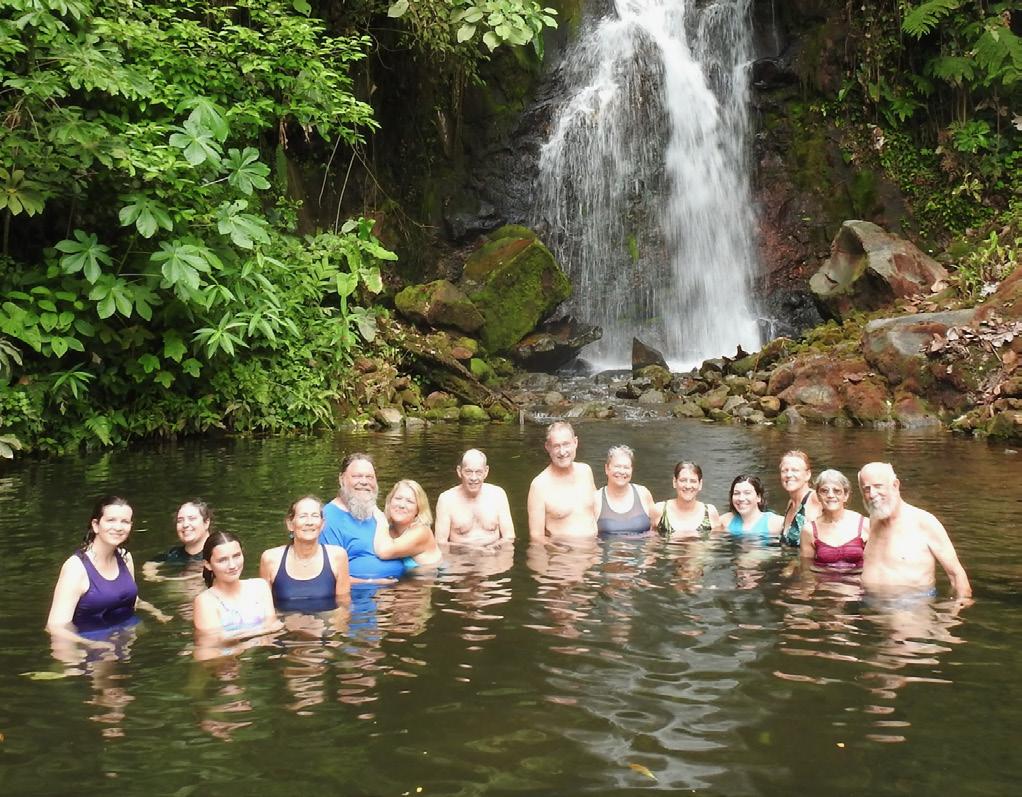

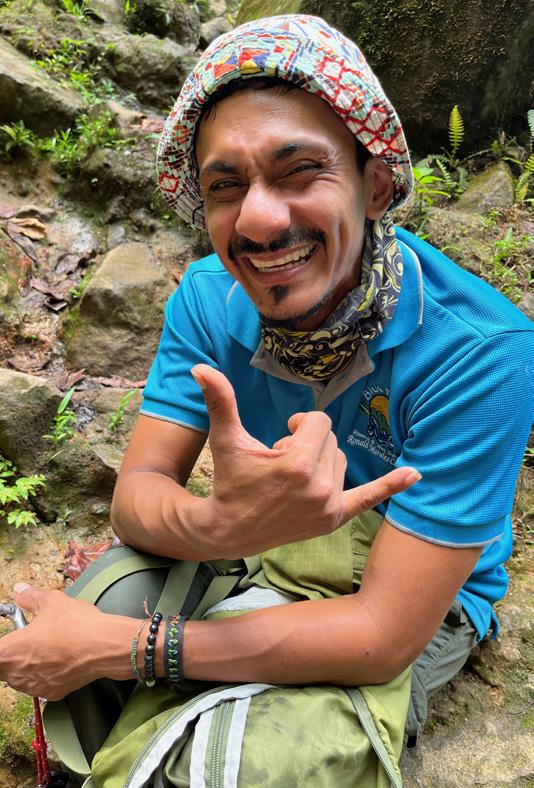
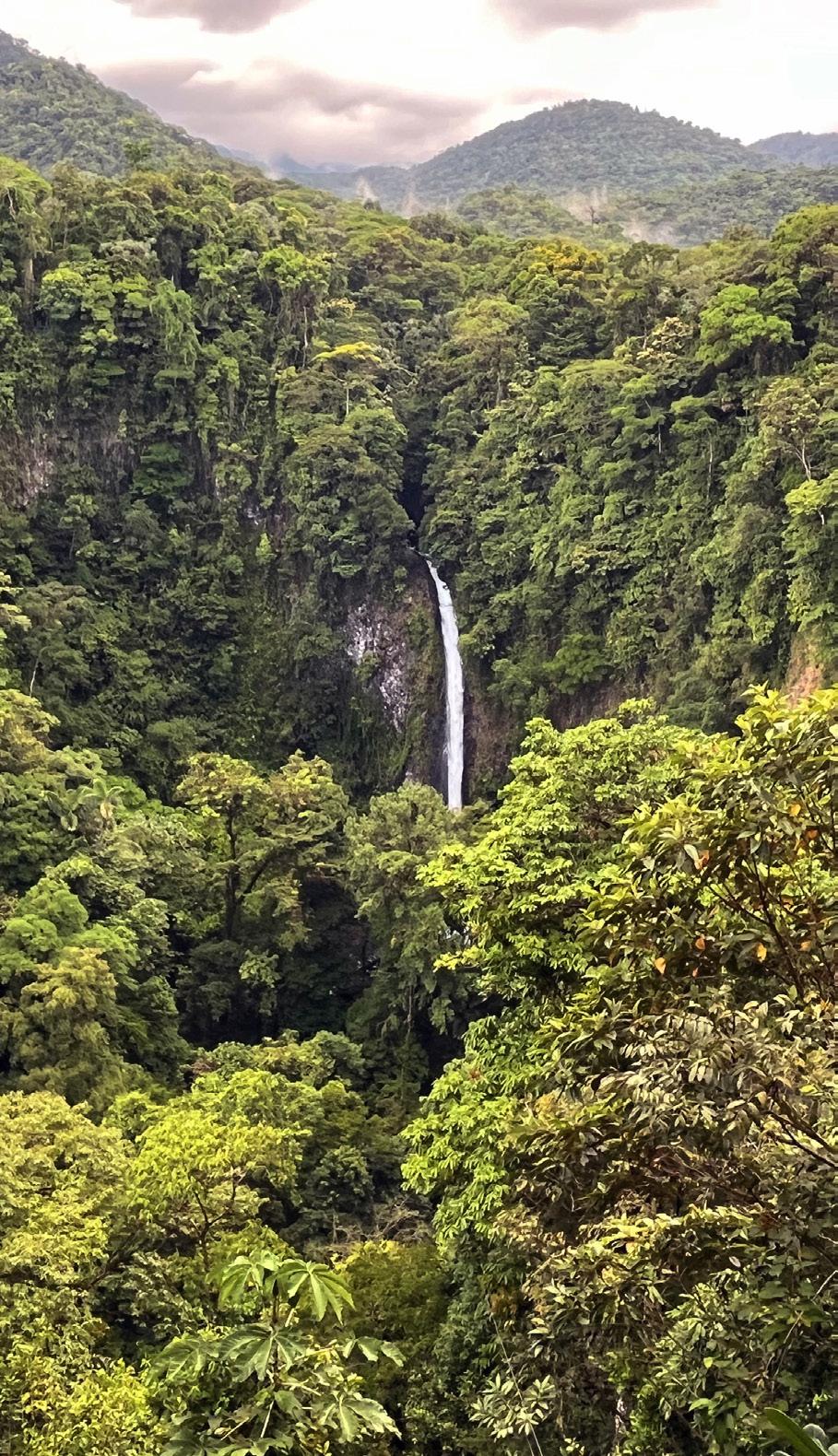

3rd Act magazine organizes one trip a year.
If you are interested in joining us on a future 3rd Act Adventure, email victoria@3rdActMag.com and we will contact you when we plan our next trip. As of publishing, our 2024 destination is still undetermined.
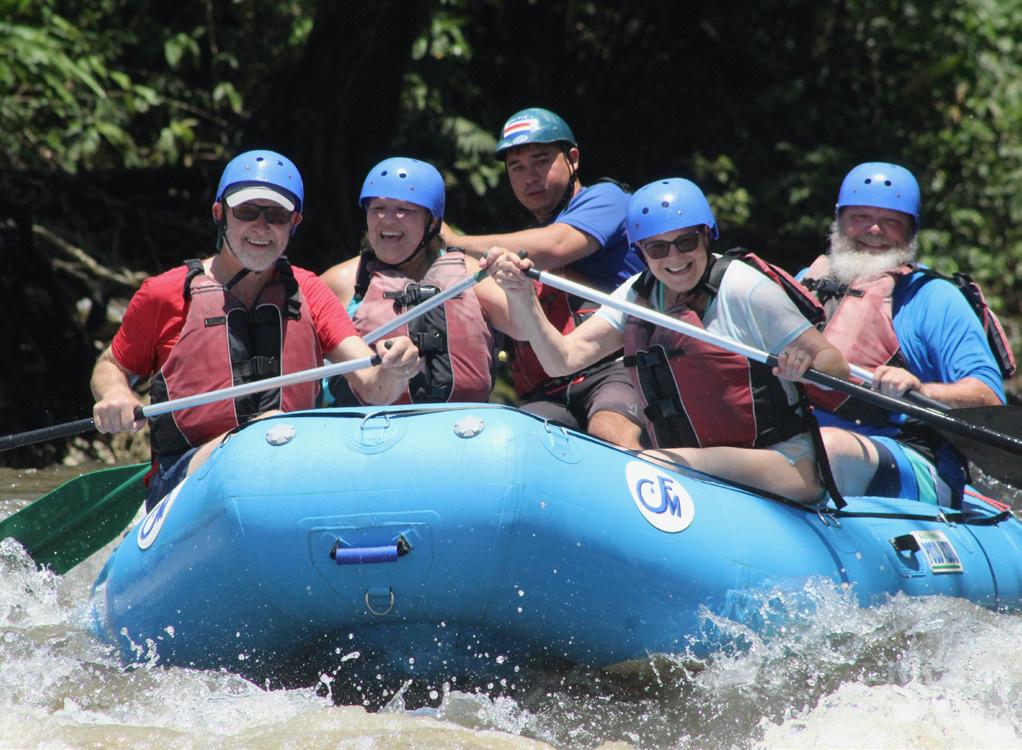
Since ancient times, people have used essential oils and plants to improve their health and lives, and to enhance spiritual reflection. Today, mounting scientific evidence and research show that some essential oils can be effectively and safely integrated into many aspects of daily life such as cooking, household cleaning, personal hygiene, and many other purposes with extraordinary benefits. And using natural essential oils instead of synthetically manufactured chemicals can dramatically reduce exposure to toxic products in your life and home. These oils have gained popularity for their unique purported benefits:
Frankincense is a holy anointing oil used to augment meditation and raise spiritual awareness. Sacred
frankincense, the king of essential oils, has a grounding, uplifting, and inspiring aroma.
The potent fragrance of frankincense—a combination of pine, lemon, and woody, earthy scents—can be used as aromatherapy. Its sweet, woody aroma is soothing and enhances mood by diminishing stress and anxiety and improving concentration and memory. Frankincense can help with inflammation and sleep. Studies show that it can improve asthma and prevent gum disease, and it is often added to skin creams.

Myrrh oil has a smoky, sweet, sometimes bitter smell. Myrrh is the most crucial ingredient in holy oil used in religious rituals and ceremonies. When diffused, the soothing scent is known to stabilize emotions, lift negative moods, promote the feeling of being grounded, and encourage a sense of spiritual awakening. Myrrh relieves stress, promotes mental focus, and supports spiritual opening. Myrrh diffused with frankincense has an earthy and intoxicating aroma and is used for its meditative quality.
However, occasionally, myrrh is blended with citrus oils to produce a more elevated scent. These lighter blends are used to help promote inspiration and emotional insight.
Cedarwood essential oil brings wisdom, protection, and abundance. Cedarwood, with its sweet and woody fragrance, is used in aromatherapy applications and is characterized as warm, comforting, and promotes stress relief. Its refreshing quality is known to enhance concentration and its soothing sent is reputed to reduce harmful stress and ease tension, which rests the body and clears the mind.
Cedarwood oil has antibacterial and antioxidant properties, and is a popular ingredient added to insect repellent, deodorant, and shampoo, giving these products a woodsy scent. Cedarwood oil helps with sleep and anxiety, and can be used as aromatherapy and a topical treatment mixed with a carrier oil.


Essential oils are the essence of a plant, a gift from the earth. Use this power of nature to benefit your health and home.
By Nancy J. Schaaf
Ylang Ylang is known for its captivating and exotic floral bouquet. Its pleasant floral scent, both delicate and powerful, makes it an ideal ingredient for aromatherapy applications. It can naturally help relax, promote tranquility, and create a sense of calm. With a delightful, bright, spicy, and stimulating scent, Ylang Ylang oil is a popular ingredient and blends well with lavender and sandalwood essential oils.
Rosemary adds to the flavor of various recipes. But rosemary oil has additional benefits like improving brain function, promoting hair growth, reducing pain and stress, lifting mood, and reducing joint inflammation. Rosemary oil is safe for aromatherapy and topically on the skin with a carrier.


into our aromatherapy practices will add a serene grounding influence promoting the feeling of a calm body at peace.
Sandalwood is one of the world’s most expensive essential oils, prized for its fragrance, which is described as soft and sweet, rich, woody, and balsamic.

Lavender calms and relaxes both body and mind. When used in aromatherapy, this mild sedative reduces stress by decreasing cortisol levels that contribute to the stress hormone. Lavender promotes a sense of relaxation, emotional stability, and mental clarity, inspires focus, and enhances the sense of enlightenment. Lavender can help with stress, pain, and sleep.
You can add lavender to a diffuser as aromatherapy, water to create a room spray or body spritzer, or base oil to make a soothing scented body oil.
Sandalwood is known to quiet the mind, supporting a feeling of peace. A noted mood enhancer, this essence facilitates all related benefits, from reduced tension and anxiety to enhanced feelings of harmony. The smell of Sandalwood complements meditation practices by promoting a sense of spiritual well-being. As a calming oil, it is further reputed to promote relaxation. Incorporating the soothing fragrance of Sandalwood
• For immediate benefit you can simply inhale the scent by waving the bottle under your nose and taking a deep breath.
• Use an electronic diffuser designed to disperse a fine mist of essential oils, gently filling the air with fragrance.
• Mix a few drops with a carrier oil such as coconut, avocado, or grape seed oil to apply directly to your skin. Never apply undiluted essential oils to your skin.
• Mix a few drops with Epsom salts to add to your bath for a relaxing time out.
Sage helps to stimulate and clarify the mind while presenting a balancing, uplifting, and soothing effect to ease negative moods. It enhances memory, too. Sage is valued in traditional medicine and is used to treat various ailments, including coughs, asthma, bronchitis, angina, inflammation, depression, and digestive and circulation disorders.

With so many essential oils available, you can adapt them to your specific needs and desires, making them a popular choice for those seeking the best natural solutions in the modern era. Clearly, the ancients understood that essential oils are a unique gift meant to be used. Our ancestors knew that a simple herbal infusion’s power supports spiritual, emotional, and physical health.
Nancy J. Schaaf, RN, BSN, MEd, is a retired registered nurse and educator. Her articles have been published in numerous national, regional, and Canadian magazines. Schaaf enjoys writing, reading, traveling, exercise classes, and playing with her toy poodle, Lettie.
Ilove playing with my food. I know that play and creativity are demonstrably linked. Children discover themselves, strengthening their imagination muscles when they play, often setting the foundations for who they become and what interests them as they age.
My food play relies on a deep understanding of ingredients and flavors, a clear sense of what my own taste palette is, and a willingness to let go of results. For me, the whole world of food taps into my creativity. To get this understanding took experimentation and I encourage you to do the same. It’s fun and satisfying to wake up senses with new tastes and smells. Novelty is good for our brains, too.
My favorite maxim for how I operate in general, and with food in particular, comes from Angeles Arrien in her book, The Fourfold Way. It is the “Way of the Teacher—Open to Outcome, Not Attached to Outcome.” The first time I read this, I knew it described me— helping me be more effective in all I do. Aging has given me permission to be honest with guests when they want to contribute to a meal. I always find out what they can’t or don’t eat, and make sure I honor their wishes. Then I encourage them to bring a dish they like or something new they want to try making. I no longer decide ahead what I will serve, instead finalizing what I want to make the day of the meal, having first checked my pantry and refrigerator, and then
based on what looks fresh and inviting when I shop. I might look through my cookbooks or scan online recipes.
I stopped paying attention long ago to the maxim about never serving guests something you haven’t made first. My snarky inner voice—in case the experiment fails unexpectedly—is to remind myself that my friends will have another meal sometime soon and can always feed themselves when they get home! I don’t strive for perfection when it comes to food. I personally think it would be better for all of us to abandon that word forever! I am pleased when I make something that is a hit. I might even write down the recipes or approaches that work so I can play with them again.
For me, creativity always starts with considering what tastes appeal to me. Fall’s bounty teases my tastebuds toward deep tastes with bright highlights. They apply to meals I make and gifts I offer. Spices from the Middle East and North Africa are among my go-to combinations. Here are some good ones to play with:

• Sumac, a tangy ground spice that is a good substitute for salt, helping reduce dependance on the saltshaker.
• Za’atar, a mixture commonly made from dried thyme, oregano, sumac, and sesame seeds.
• Freshly ground toasted cumin and coriander seeds. Combine whole seeds and toast in a dry frying pan over medium heat until fragrant and beginning to color. Take off the heat and whir in a spice grinder or spicededicated coffee grinder.
• Lemon Omani or ground dried lime, which add a deep citrus tone to whatever you use it with.
In November, start checking the shelves of places like Trader Joe’s and other specialty grocery stores to score some of the gift packages with spice samples. Pair them with a bottle of flavored olive oil and package them prettily for an easy gift for food-loving friends.
October 1–7

Ingredients:
• 4–6 bone-in, skin-on chicken thighs
• 1 red onion, cut into 8 pieces
• 3 T mixed spices (equal amounts Sumac, Za’atar, Lemon Omani)
• Juice of 2 lemons or mixture of lemon and lime
• Salt and pepper
• ½ cup dried apricots, halved
• 1 cup seeded green olives
Directions:
• Make a marinade with Za’atar, Sumac, Lemon Omani, lemon and lime. Add salt and pepper to taste.
• Add chicken and marinade mixture to plastic bag with chopped onion and let marinate for as many hours as possible, preferably overnight.
• When ready to cook, heat oven to 400 degrees.
• Cover a large sheet pan in foil, roast chicken skin side up for 20 minutes. Turn pan and roast another 20 minutes.
• Arrange apricots and olives among the chicken pieces and roast another 20 minutes until chicken is tender.
Serve with couscous or rice. Serves 4
Celebrate creativity and community on Bainbridge Island this fall. Visit Bloedel Reserve for poetry, painting, walks, talks, and art exhibitions by past Creative Residents. Each day of the week is an experiential immersion into creativity and connection.


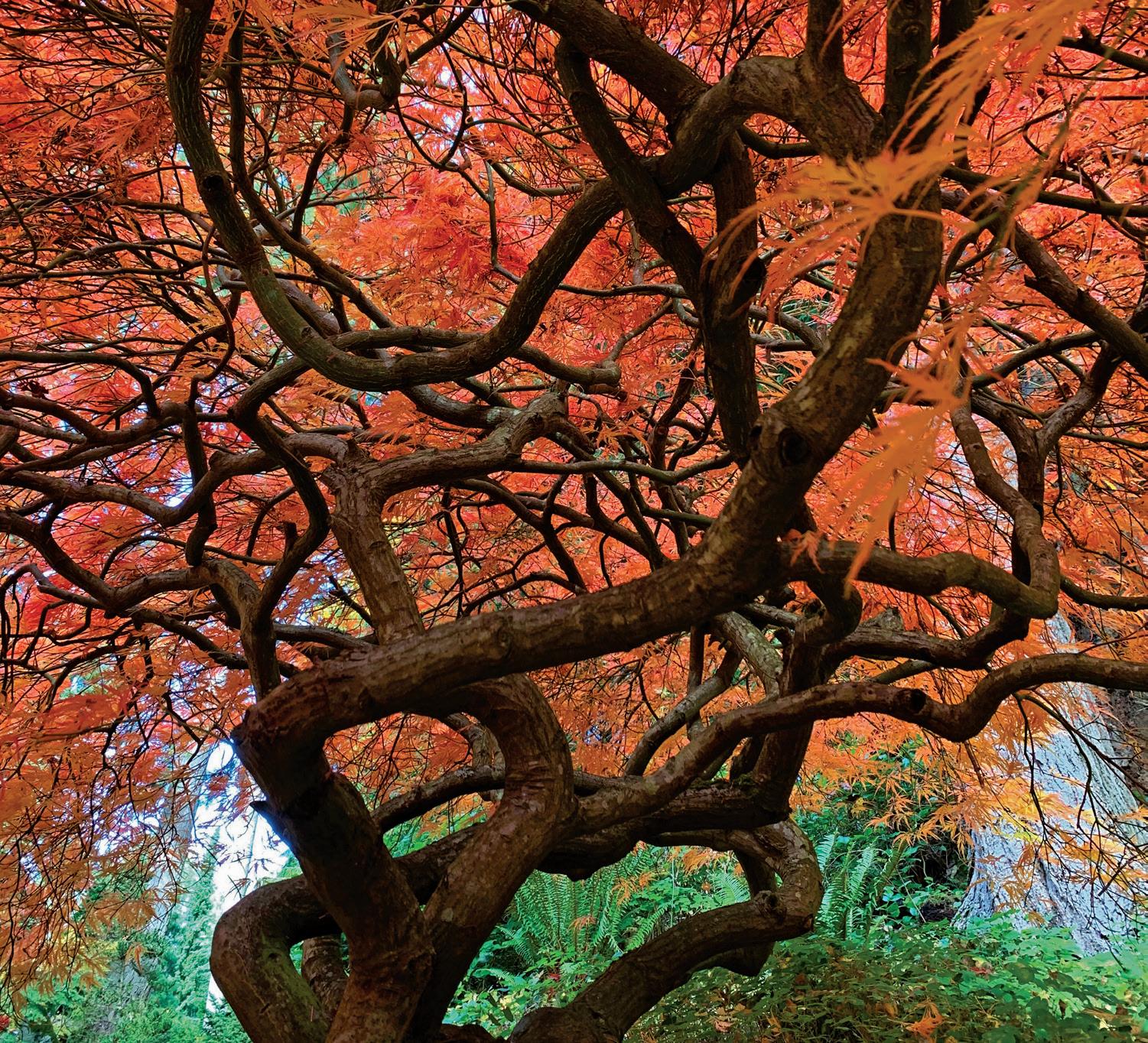
For Every Occasion. Every Celebration. Can be ordered online or at your favorite bookstore.

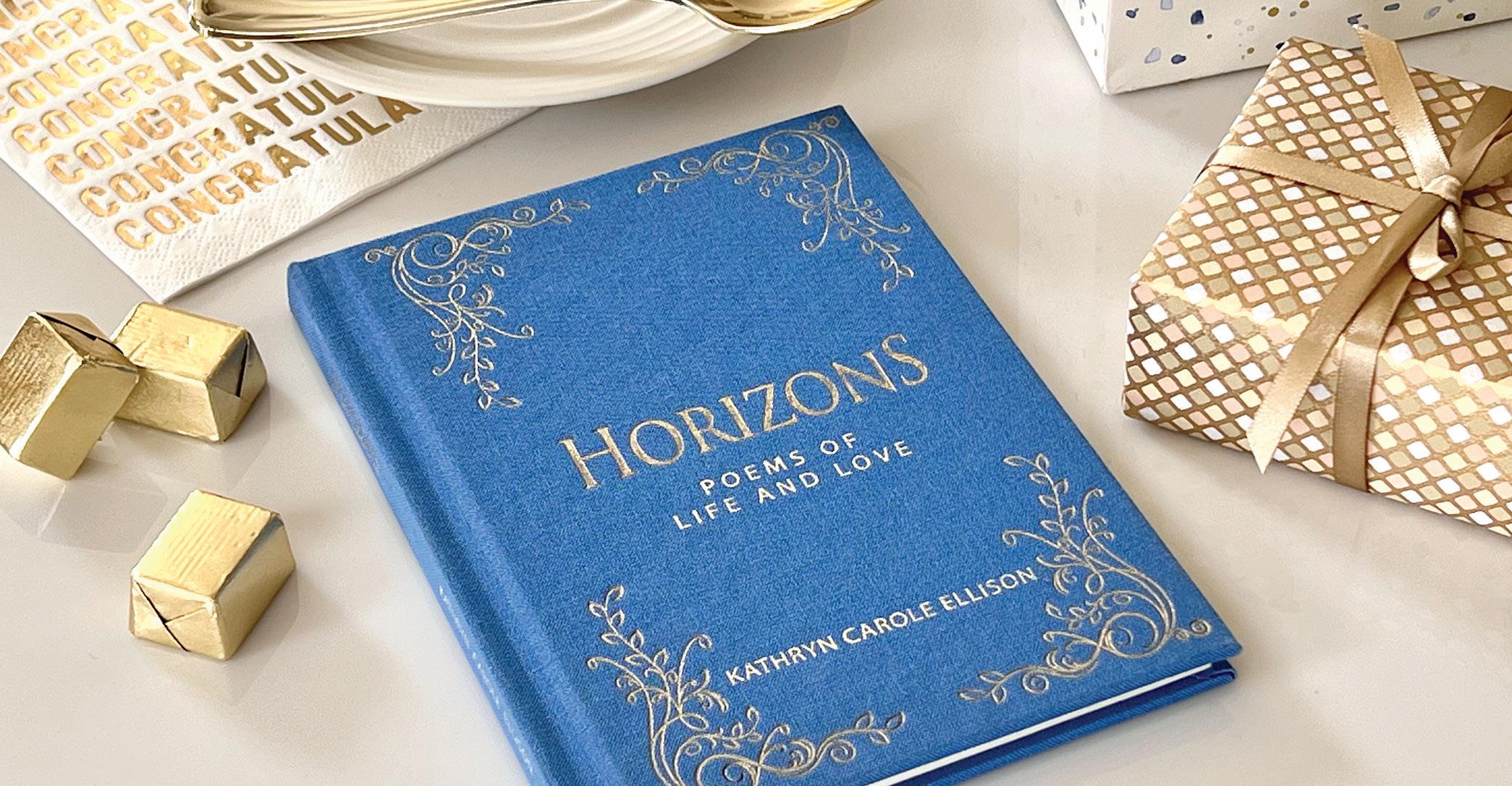

Inmy baby boom generation, arts education was prevalent and almost everyone I knew learned to play an instrument in public school. So, when I attended middle school in Michigan, I took up the flute. I was not very diligent about practicing. But I did have a lot of fun playing in the school orchestra. And in my teens, I began to enjoy noodling around with friends in impromptu jam sessions. I even joined a rock band for a while.
My flute has been sitting in the closet for decades. But a few years ago, I remembered how much I used to love singing. Suddenly, I found a new creative outlet and began to sing with others and in duets with my piano-playing husband. I’m even thinking about dusting off my flute.
Thankfully, adults have many outlets in the Seattle area where we can learn and perform music as passionate amateurs—even if you’ve never plunked a piano or strummed a guitar but would love to try.
Here are some of the local programs that will help you get back to speed, pick up a musical skill for the first time, or just meet some new friends to jam with.
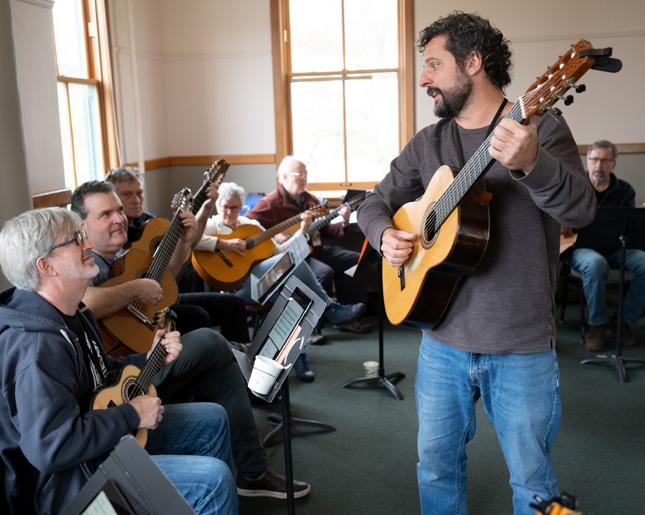
Music Center of the Northwest: This nonprofit community school, located near the Greenwood neighborhood in North Seattle, has been serving children and adults since 1989 with an array of private and grouplearning opportunities. They range from ukelele classes to participatory jazz, Afro-Cuban to classical music ensembles. There is also a music therapy program and a course in studio recording techniques. Students of every skill level are welcome and financial aid is available for those in need. Learn more: musiccenternw.org or (206) 526-8443.
Jazz Night School: For jazz mavens this popular Columbia City hub, founded by Erik Hanson in 2008, can get you into the swing of things. Though private instruction is available, much of the learning here is done in groups— combos and big bands, aimed at beginning, intermediate, and advanced students. The offerings are pleasingly diverse. You can study how to play bossa nova guitar music from Brazil, jazz piano essentials, or audition for the mixedlevel jazz big band (if you are a drummer or sax player). All the teachers are professional jazz players, and the school sometimes offers online courses. Learn more: Jazznightschool. org or (206) 722-6061.
Dusty Strings: Folkies, this place is for you. With its inviting showroom packed with choice guitars, ukeleles, mandolins, harmonicas, banjos, and other instruments for
sale—and a small but select assortment of group classes available—this Fremont neighborhood store and school is an old standby for Western Washington folk, bluegrass, and blues musicians. It also offers repair services for stringed instruments. Learn more: dustystrings.org or (206) 634-1662.
Centrum Music Workshops: Ready to take the plunge into a camp that’s all about music? Centrum, the arts center located in a picturesque former military base in Port Townsend, offers multi-day resident workshops that musicians from around the state and country flock to each year. Different weeks are devoted to fiddle tunes, jazz, blues, vocal, and chamber music, with students of varying abilities getting a full musical immersion in convivial classes with nationally known musicians and impromptu open mic and jam sessions. Housing and meals at Centrum are available for a recommended, but not required, fee. As a veteran of several Centrum music workshops, I highly recommend them. Learn more: Centrum.org or (360) 385-3102.
Puget Sound Guitar Workshop: Each year this long-running organization offers several adult musical gatherings. Set in a lovely, wooded camp setting near Bremerton, these are very informal and friendly, multiday affairs that include a variety of guitar classes but also songwriting, voice, ukelele and, most recently, Cuban salsa dance lessons, and Irish and Ukrainian music workshops. Participants are housed in semi-rustic cabins, the food is healthy and delicious, and scholarships are available. There’s even a swimming hole for those looking for the full camp experience. I’ve attended a PSGW camp and heartily enjoyed myself. Learn more: pugetsoundguitarworkshop.org.
For other places for adults to take classes, check out Sound Music School in Seattle, Federal Way School of Music, 4/4 School of Music (locations throughout King and Snohomish counties), and Bellevue Music School.

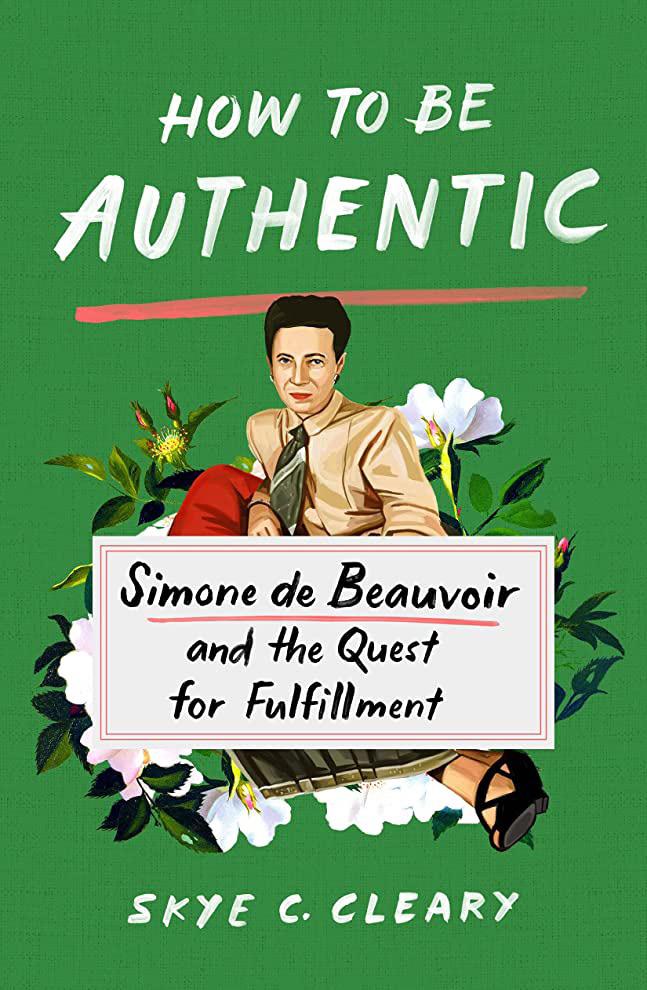 BY SKYE C. CLEARY REVIEWED BY VICTORIA STARR MARSHALL
BY SKYE C. CLEARY REVIEWED BY VICTORIA STARR MARSHALL
After reading Skye Cleary’s article, “Simone de Beauvoir Recommends We Fight for Ourselves as We Age,” published in our summer 2023 issue, I was compelled to read her book. I also realized it would be perfect companion reading for this issue’s theme—looking at our lives as a work of art that we create, which is unique, personal, and authentically us.
Indeed, How to Be Authentic stretched and challenged me, as I had not previously known much about the philosophy of existentialism. According to Cleary, Beauvoir’s view “is that we exist first—and then spend the rest of our lives creating—not discovering who we are.” And that “to be authentic is to live in pursuit of self-creation and self-renewal, with many different paths toward diverse goals.” And that our life consists of “projects.”
Bingo. Free to be me. Free to be the designer of my own life. Yet, with that freedom also comes responsibility to others and society’s greater good, and the recognition that due to sexism, systemic oppression, or actions of other individuals, many people don’t get to fully choose their life path. Still, we can all become more conscious of living purposely and responsibly and, importantly, acknowledge every person’s right to become “the poet of their own lives,” while advocating for those who are oppressed.
So, I get to be me, and you get to be you, too, if it is not hurting anyone. It’s a philosophy of individuality, tolerance, and of being free in the truest sense. Within this context—and the writings and philosophy of Beauvoir—Cleary tackles some of today’s most intractable challenges: Sexism, ageism, our response to climate change and the pandemic, and our vulnerability to narcissism, fascism, and even mysticism.
We can all be very good at deluding ourselves. In one fascinating chapter titled “Rebellion,” Cleary writes, “Beauvoir highlighted a number of mystifications and tensions that would be helpful to know as we embark on our quests to break oppressive bonds for ourselves and others.” She referred to one as “slack-tivism,” whereby people do enough to fit in, “but not enough to affect any meaningful change.” She gives hashtag trends as an example, such as posting #blacklivesmatter on Facebook, but never attending a rally: “These hashtag trends seem to be ultimately about self-promotion. They allow people to feel good about themselves, as though they are advocating for sexual or other justice, but in a way that centers their own reputation. The critical thing,” she continues, “is to move beyond slack-tivism and turn awareness into advocacy.”
There is so much wisdom and challenge here—I could quote for pages. A better idea is to pick up the book and discover it for yourself. There’s no more perfect time than now to reach for authenticity.
Exercise your brain and have some fun with these puzzles designed to stimulate different cognitive functions.
All the two-word answers in this game begin with the initials DD.
1. Father who doesn’t pay his court-ordered child support.
2. Chicago-style pizza.
3. Nickname for the two-story red buses in London.
4. Rock Hudson’s frequent co-star.
5. He is the third-most popular cartoon character of all time behind Bugs Bunny (No. 1) and Mickey Mouse (No. 2).
6. In this jump rope game, two ropes are swung in opposite directions simultaneously.
7. Designation for exit from the military due to serious offenses suchas desertion, assaulting an officer, of dereliction of duty.




8. The period of extreme summer heat usually in late July early August, marked by lethargy and inactivity.
All of the answers in this word definition game contain the word land or sea.
1. He collects the rent.
2. Clams, oysters, haddock…collectively.
3. A way to reclaim ground … and a place to dump the trash.
4. A false spoken statement that damages a person’s reputation.
5. A little sports car doesn’t have this.
How many of the 13 U.S. states that border Canada can you name?
6. In coastal areas these birds are as ubiquitous as pigeons.
7. Patients with gastrointestinal problems are often told to eat this kind of diet.
8. In Hawaii, it’s called a lei, or it’s the last name of Liza Minnelli’s mother.
Reprinted with permission from Nancy Linde, author of the best-selling book 399 Puzzles, Games, and Trivia Challenges Specially Designed to Keep Your Brain Young, 417 More Games, Puzzles, and Trivia Challenges Specially Designed to Keep Your Brain Young; and 299 On-the-Go Games and Puzzles to Keep Your Brain Young. She is also the creator of the website Never2Old4Games.com, which is used by many senior-serving organizations in the U.S. and Canada.
ANSWERS ON PAGE 62
learn more here







As the largest Life Plan Community in the Northwest, Panorama’s active lifestyle allows countless opportunities to learn, explore, volunteer and create. Our 140 acres of winding streets and towering trees has the perfect apartment or single family home for you.


The Applicants on our wait list are planning now for their future. To tour our campus and learn more, call 1-360-456-0111 and ask to speak to one of our Retirement Advisors.

